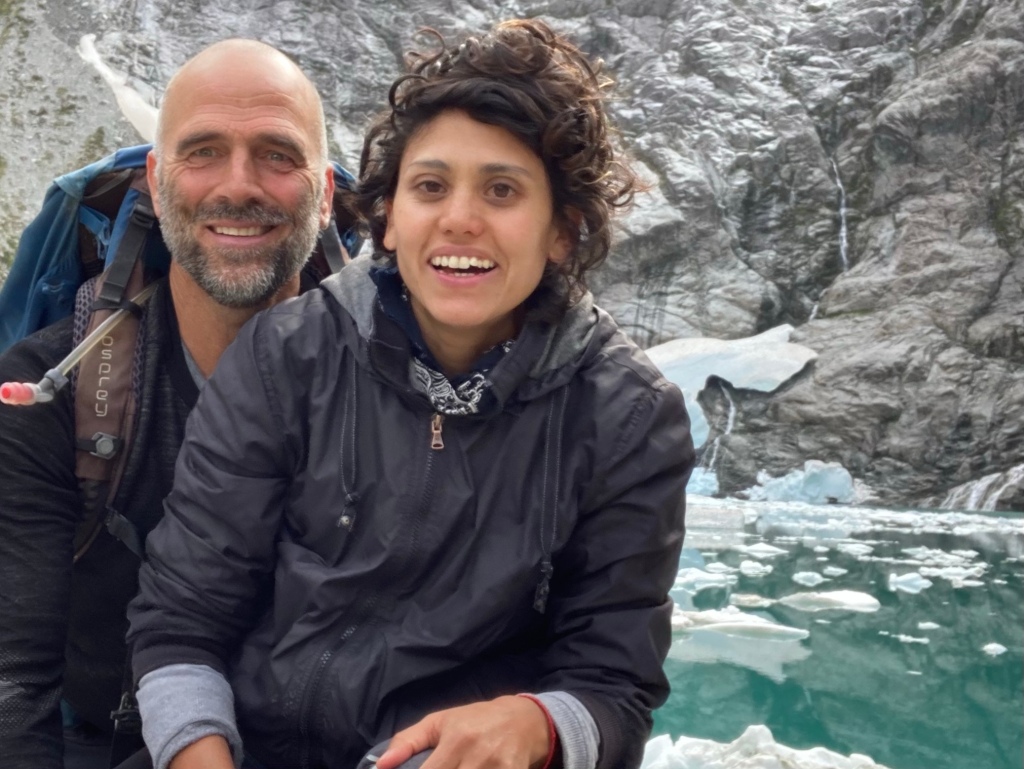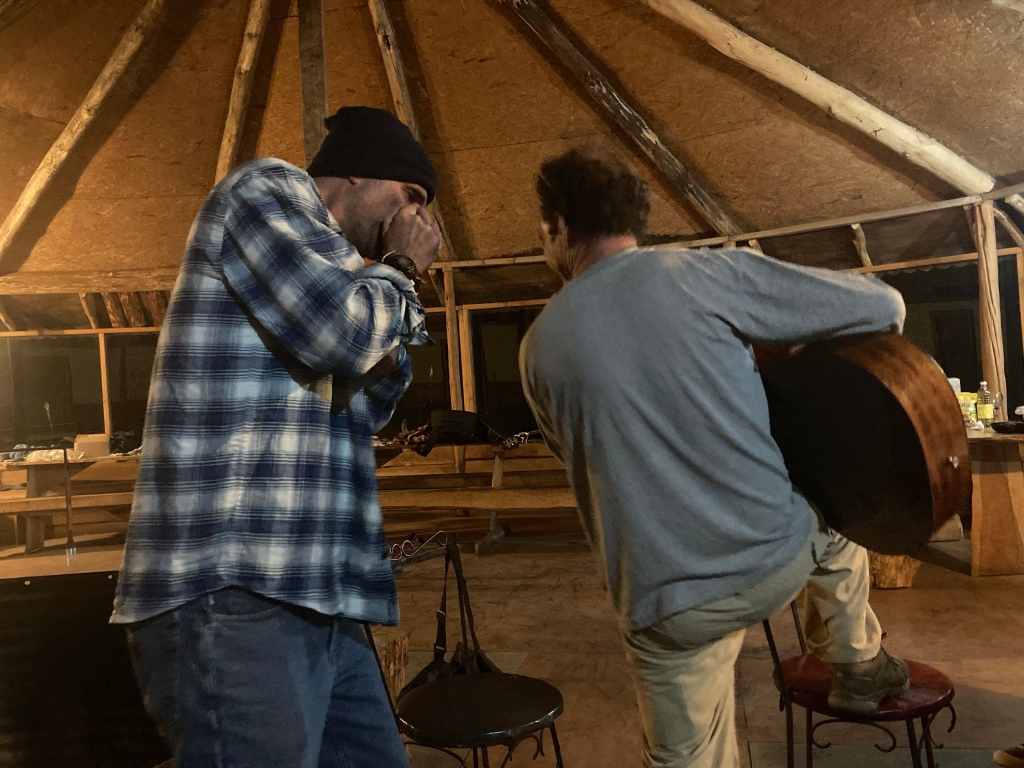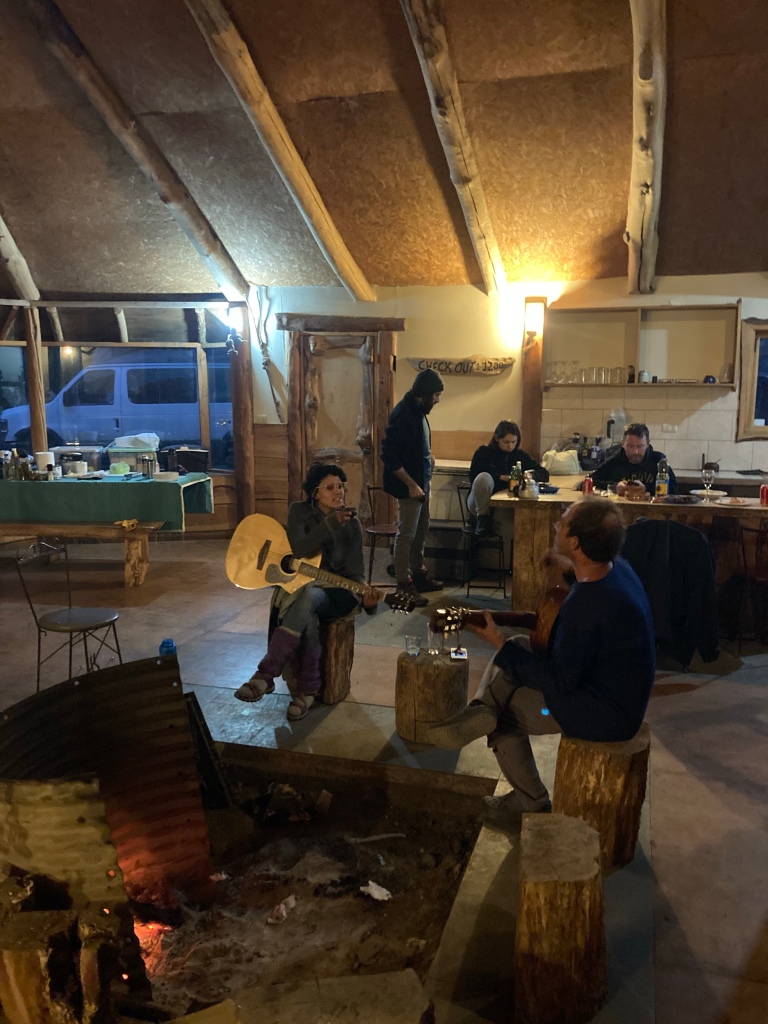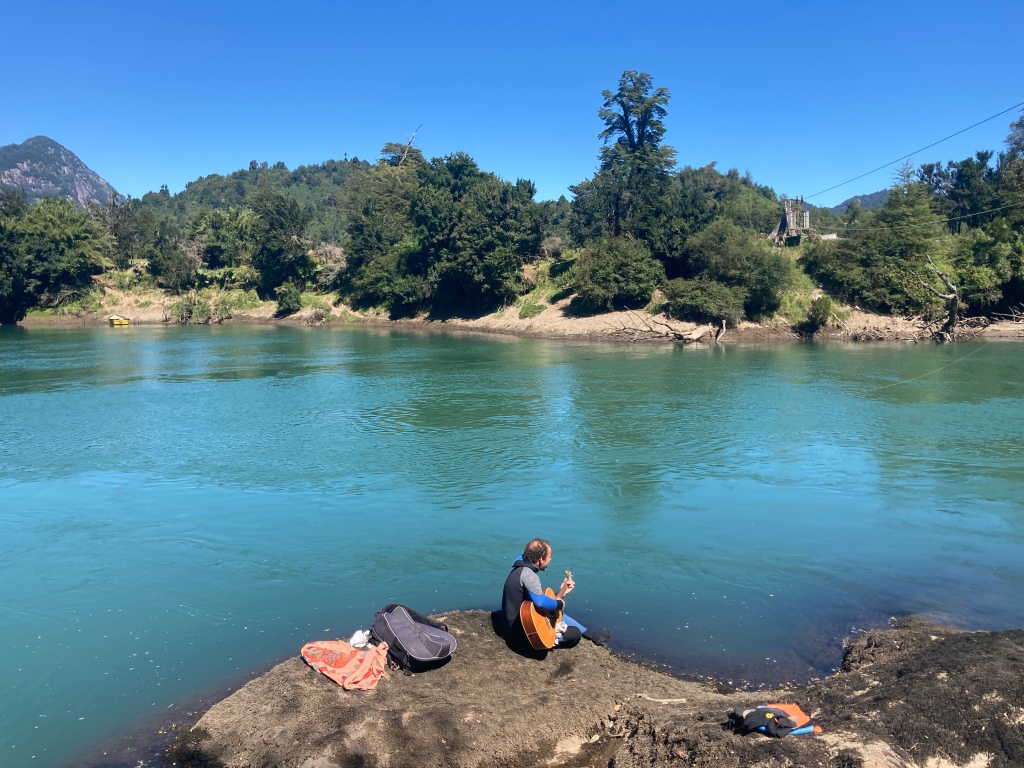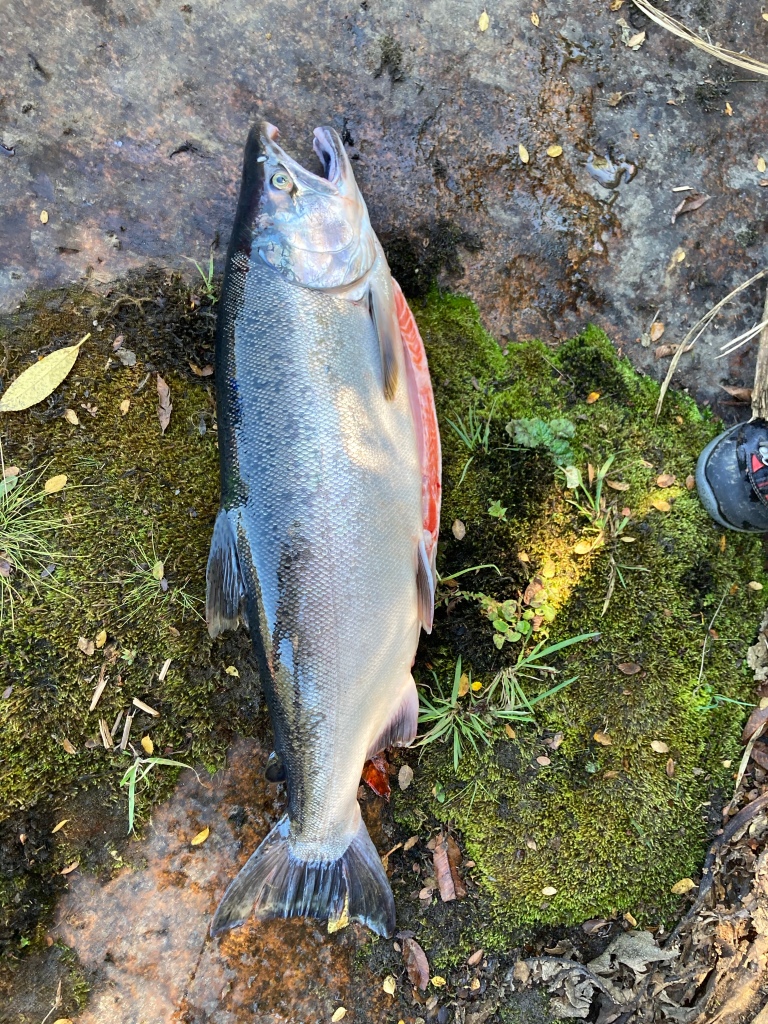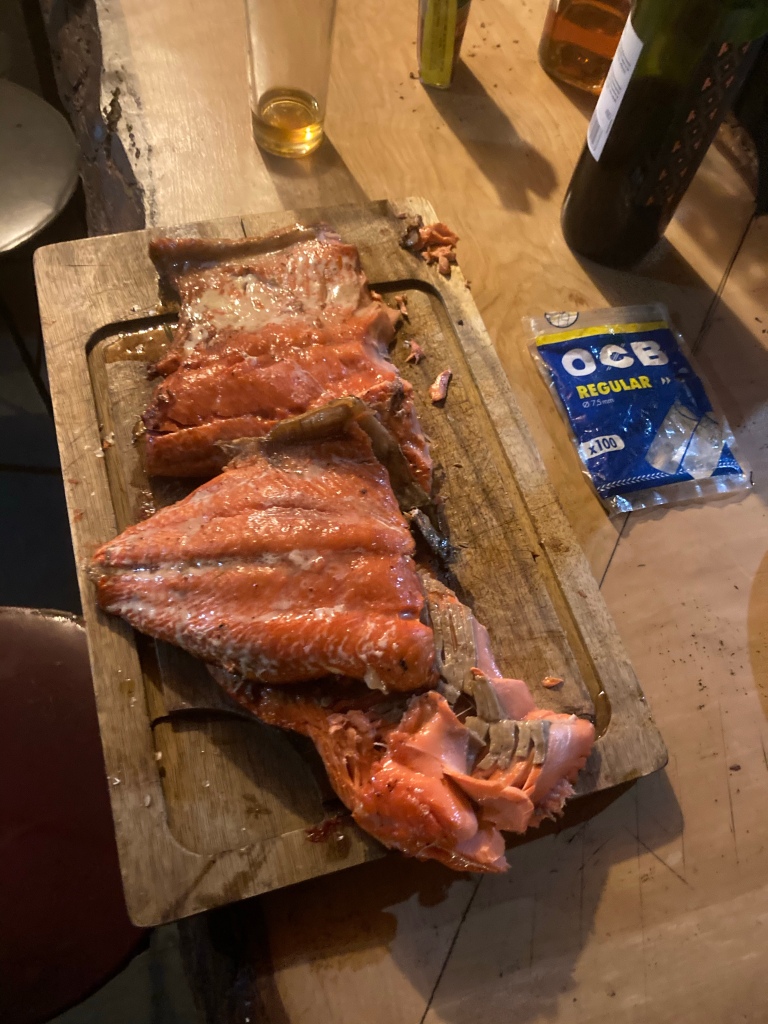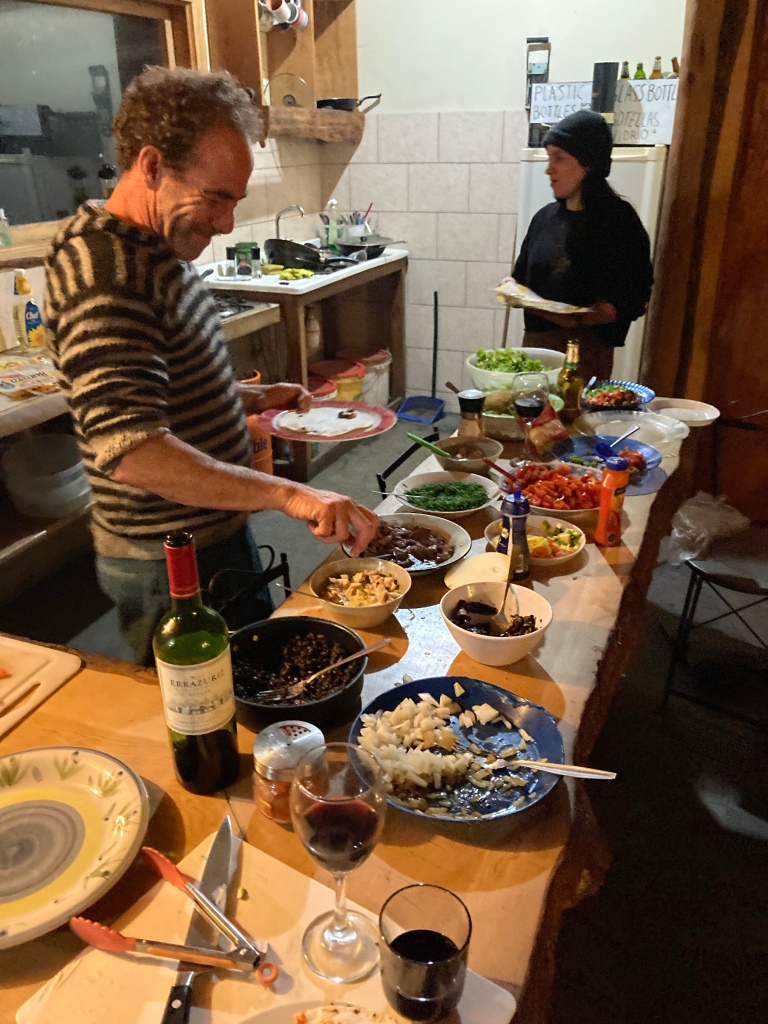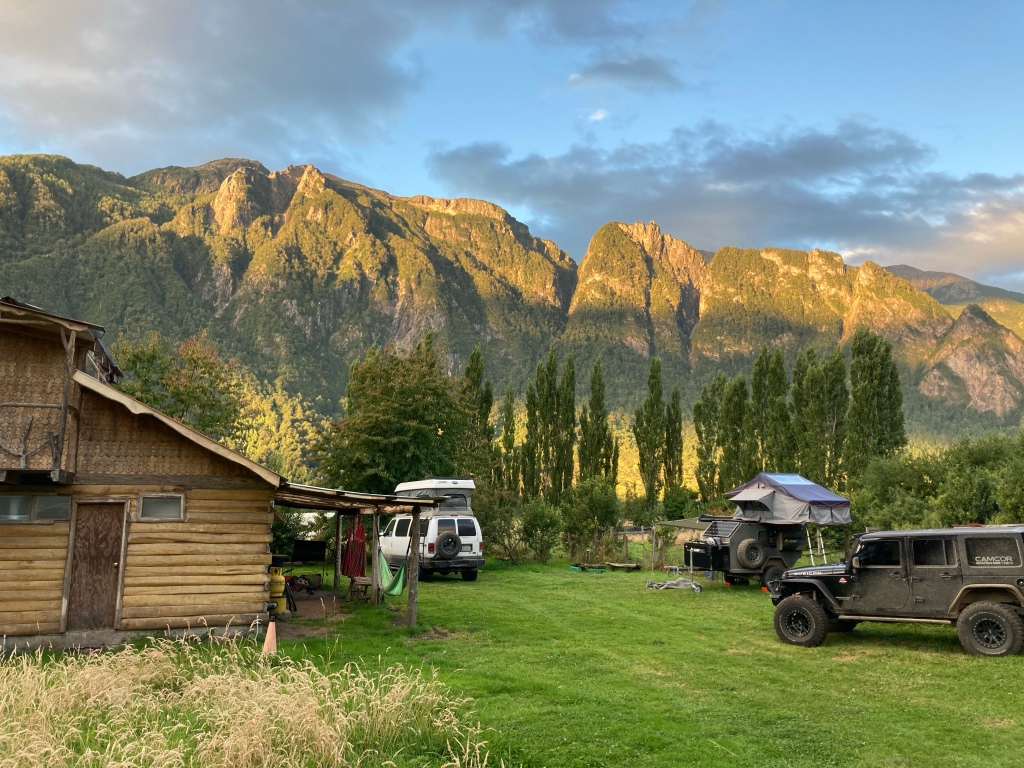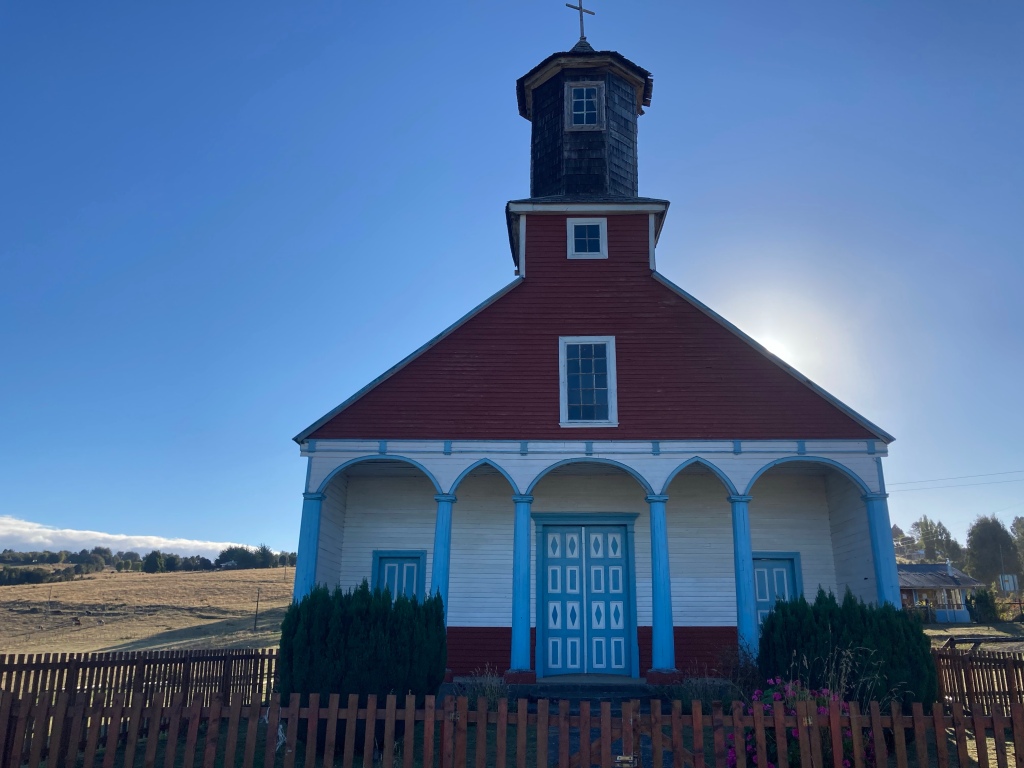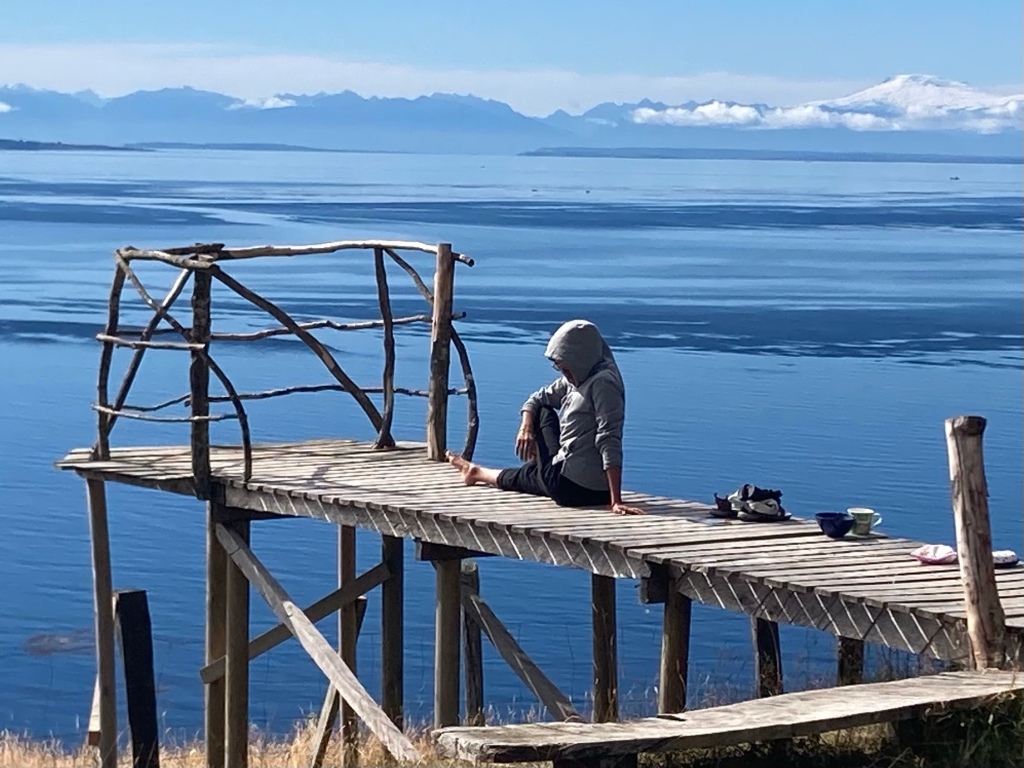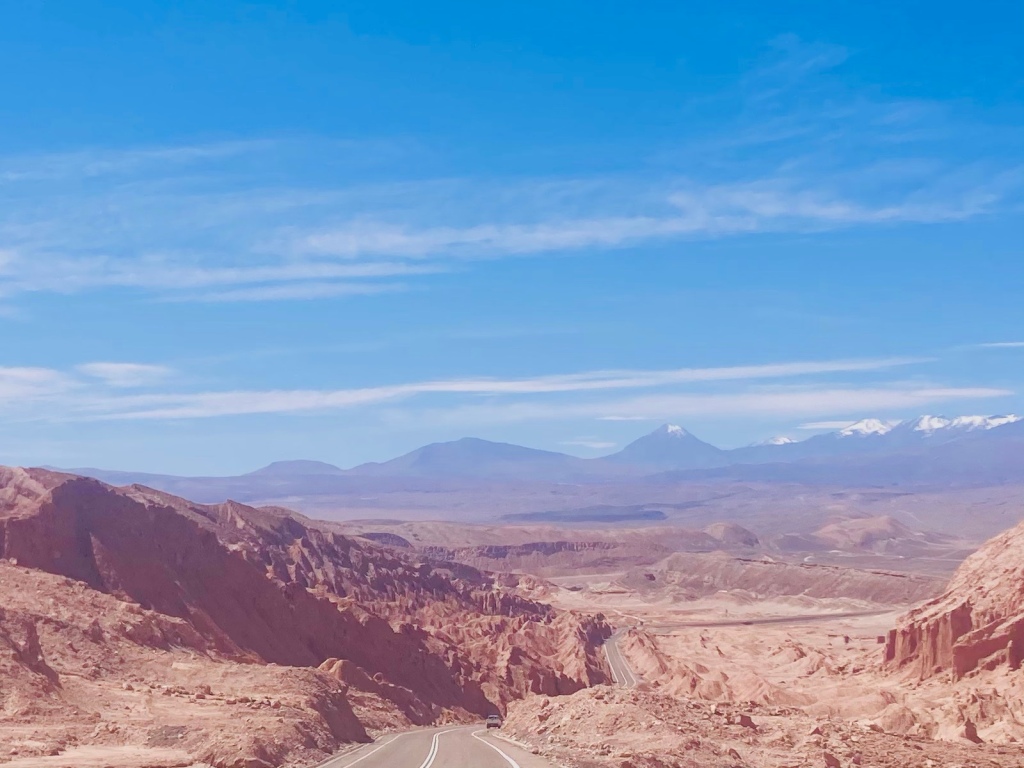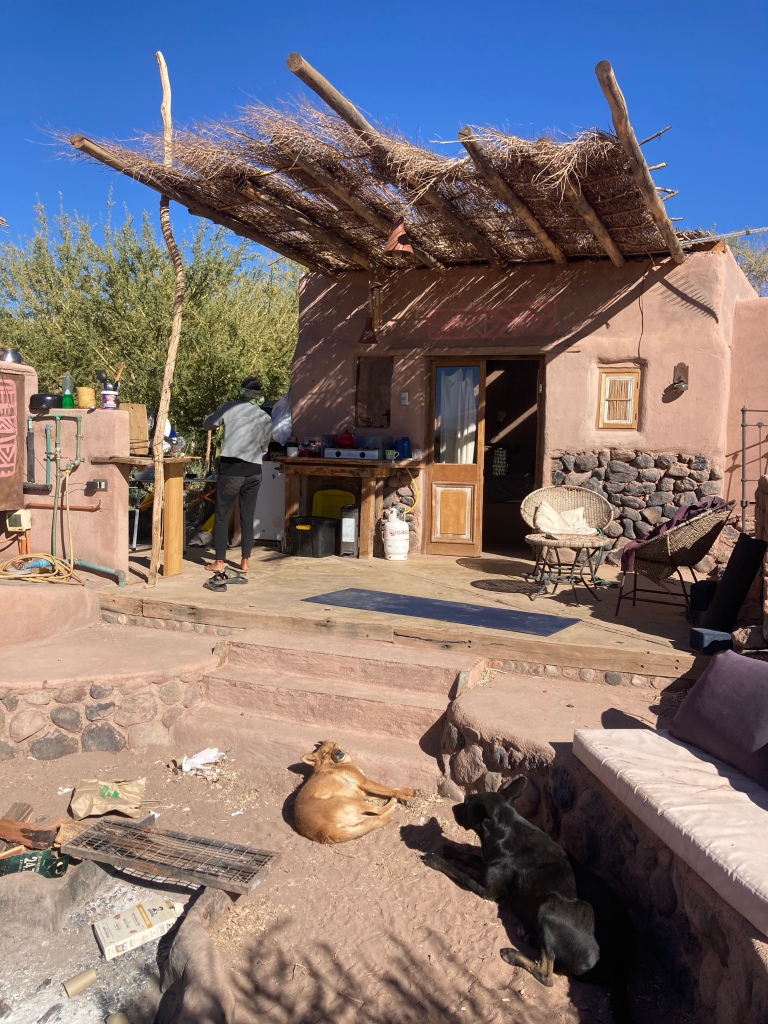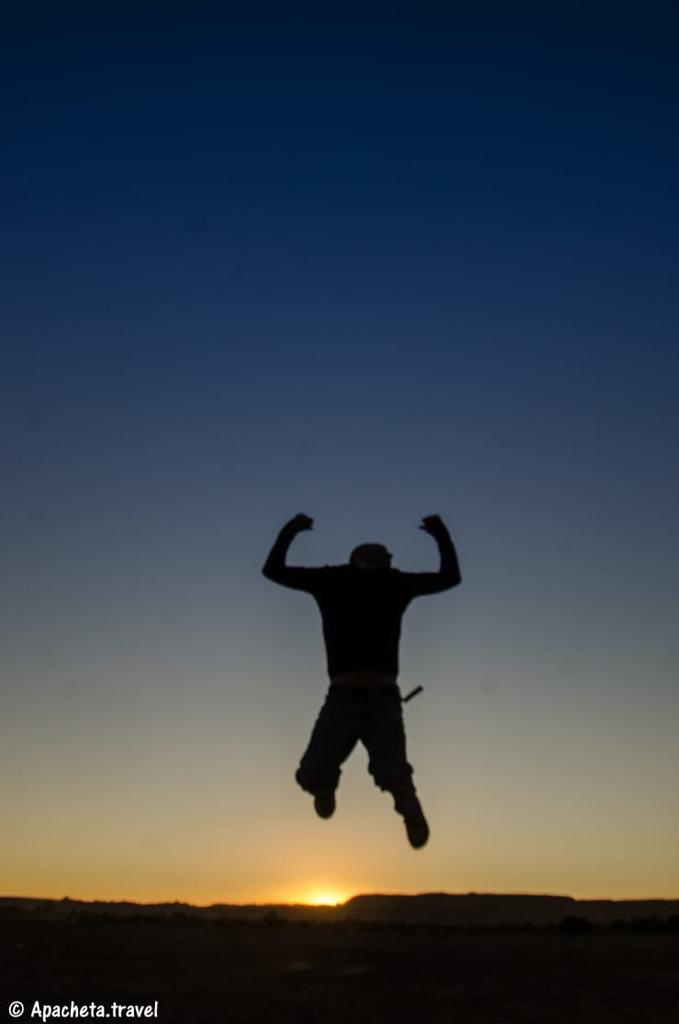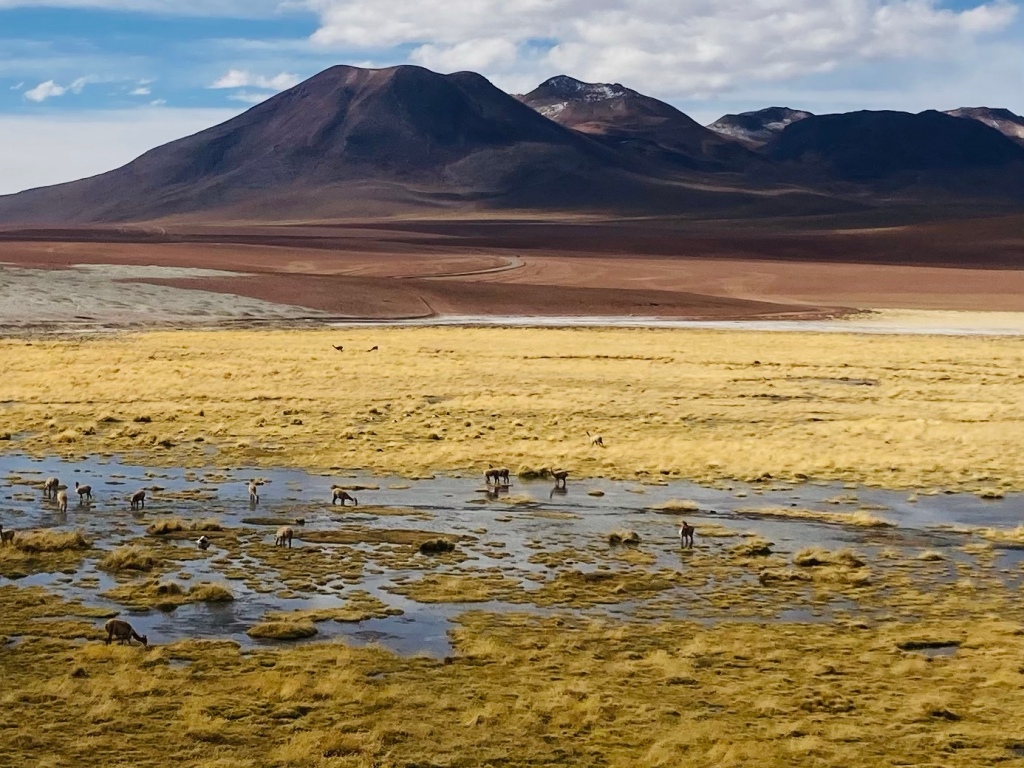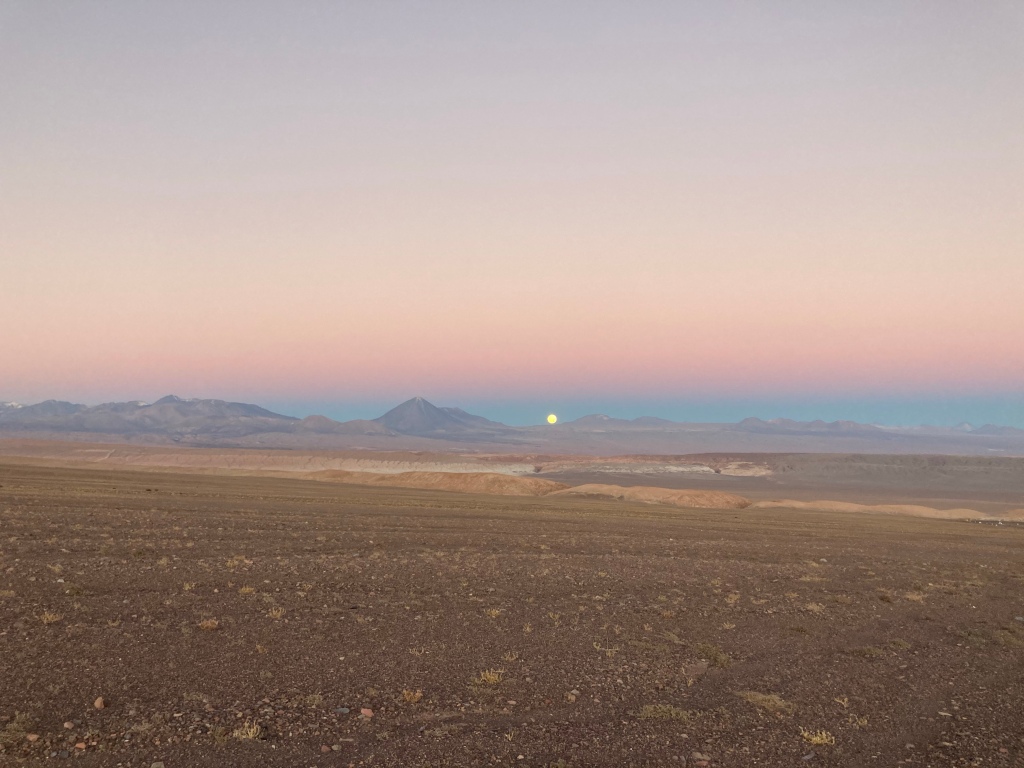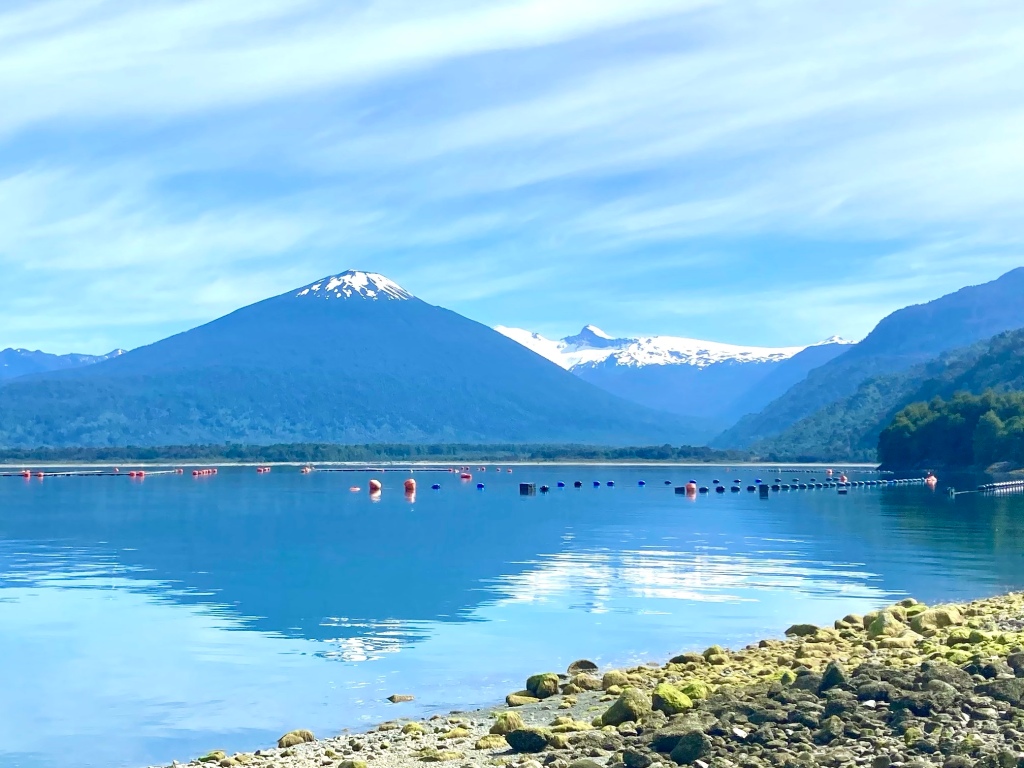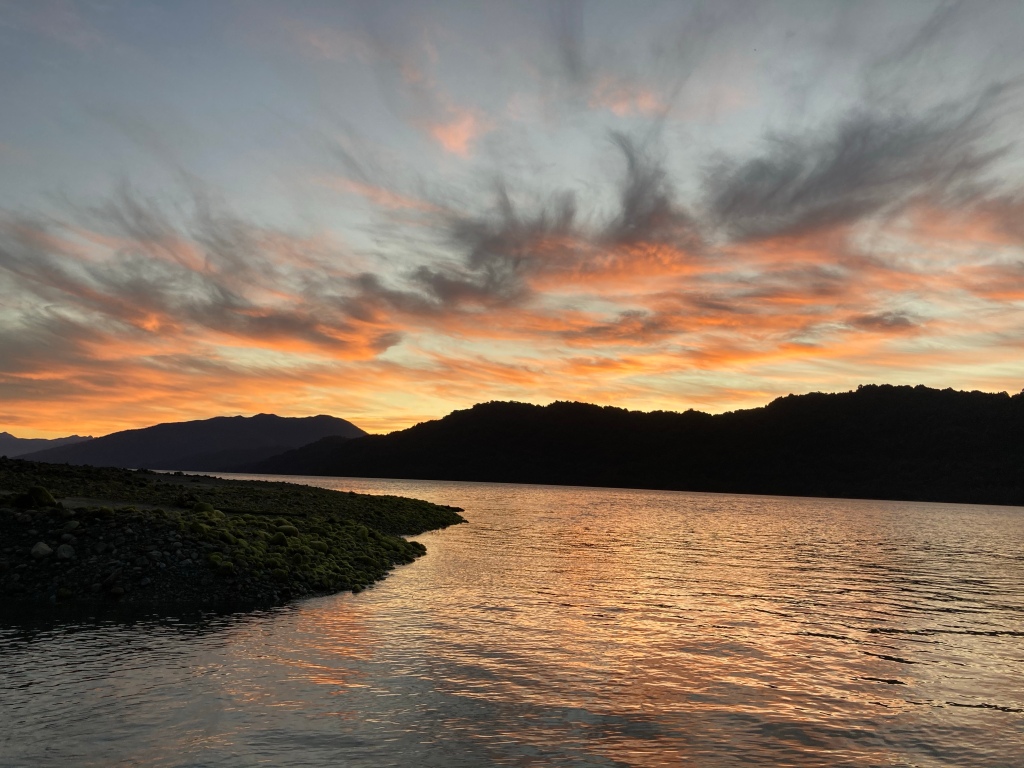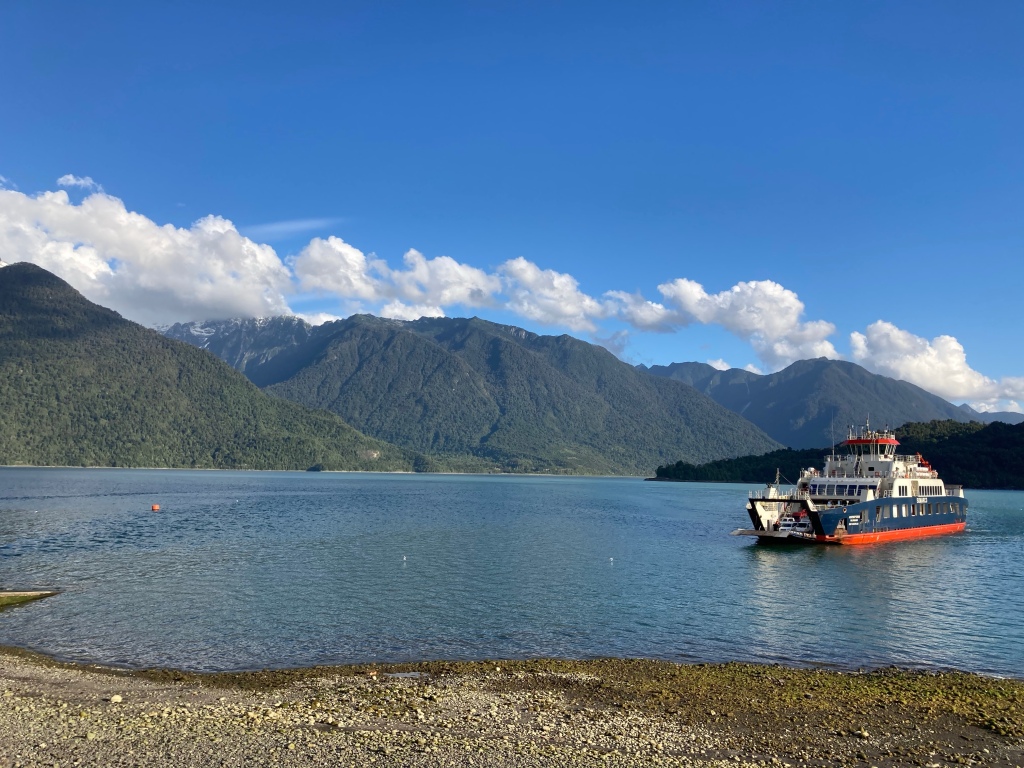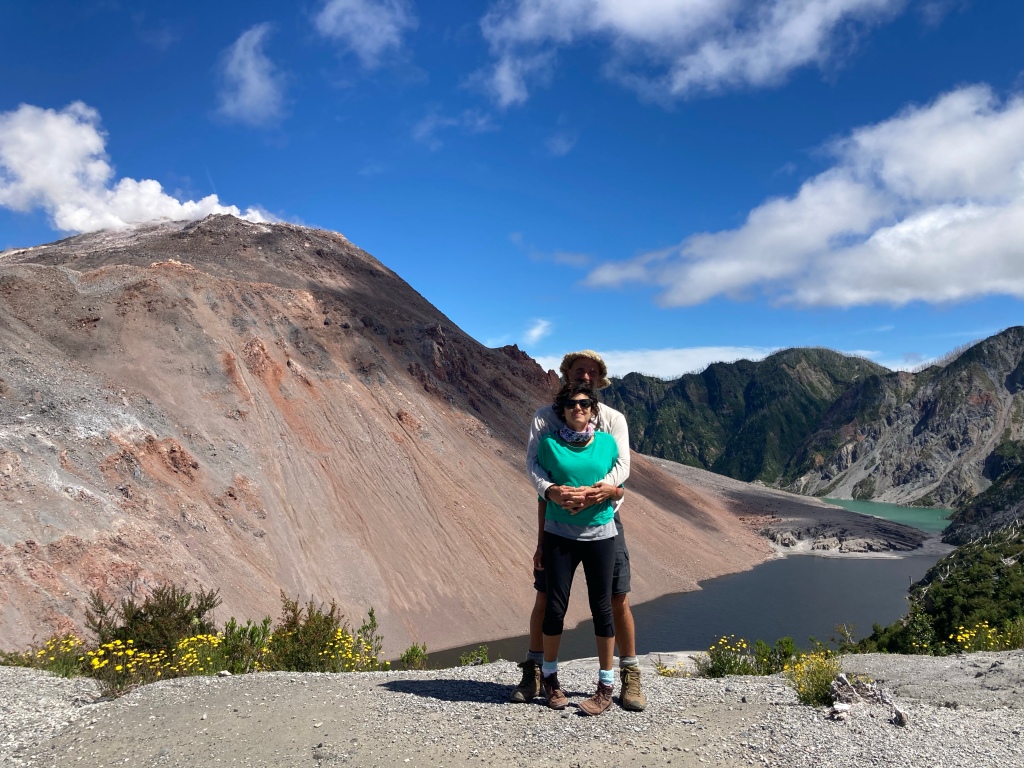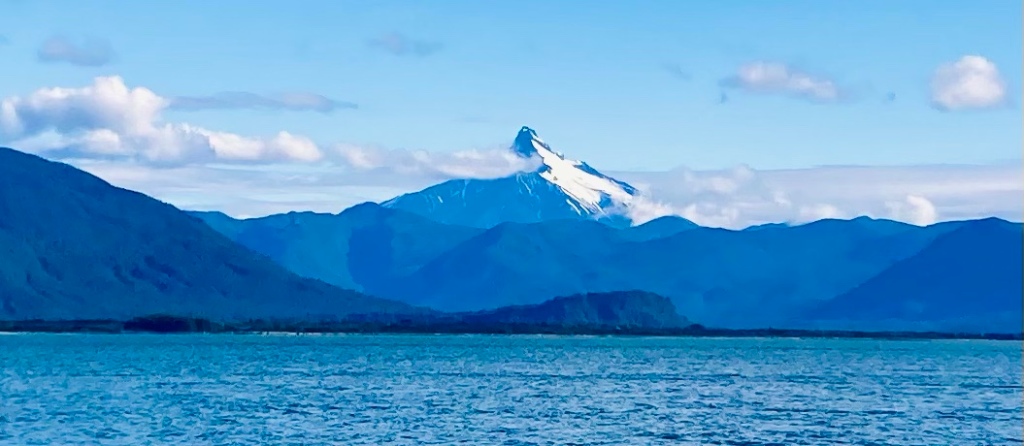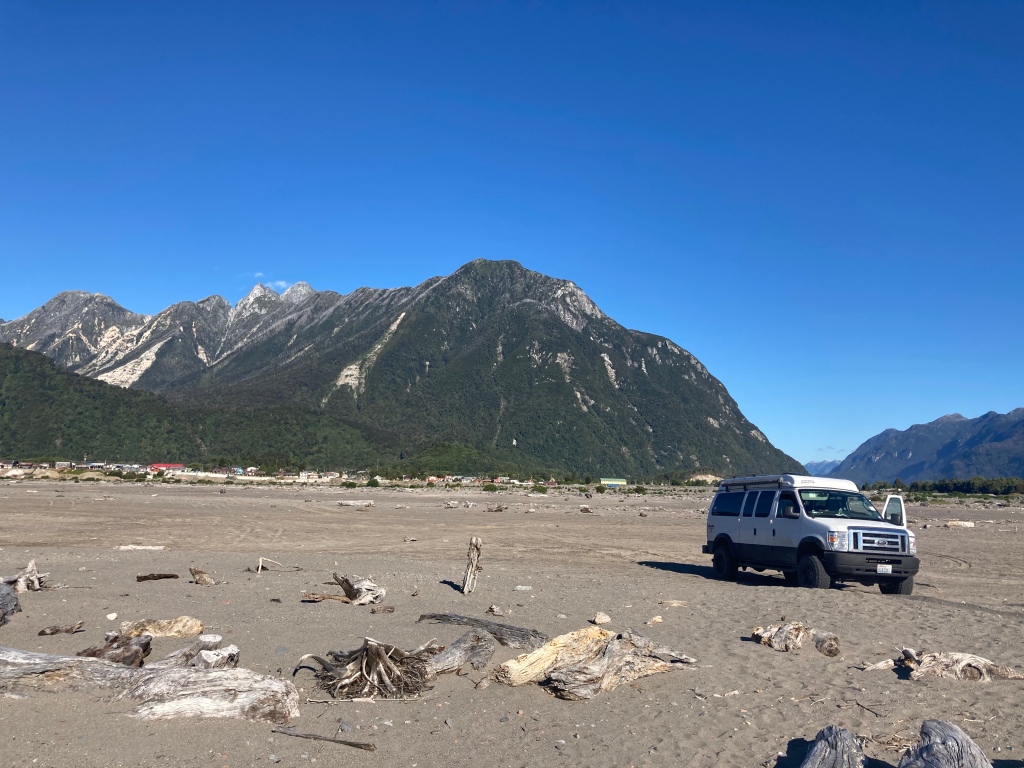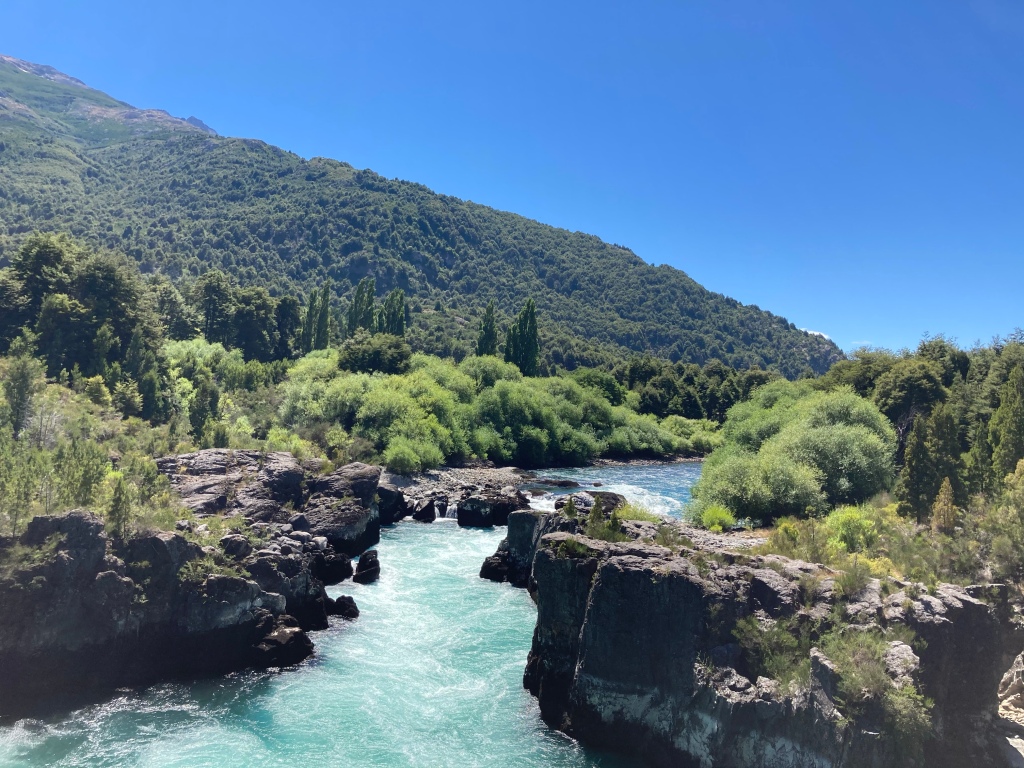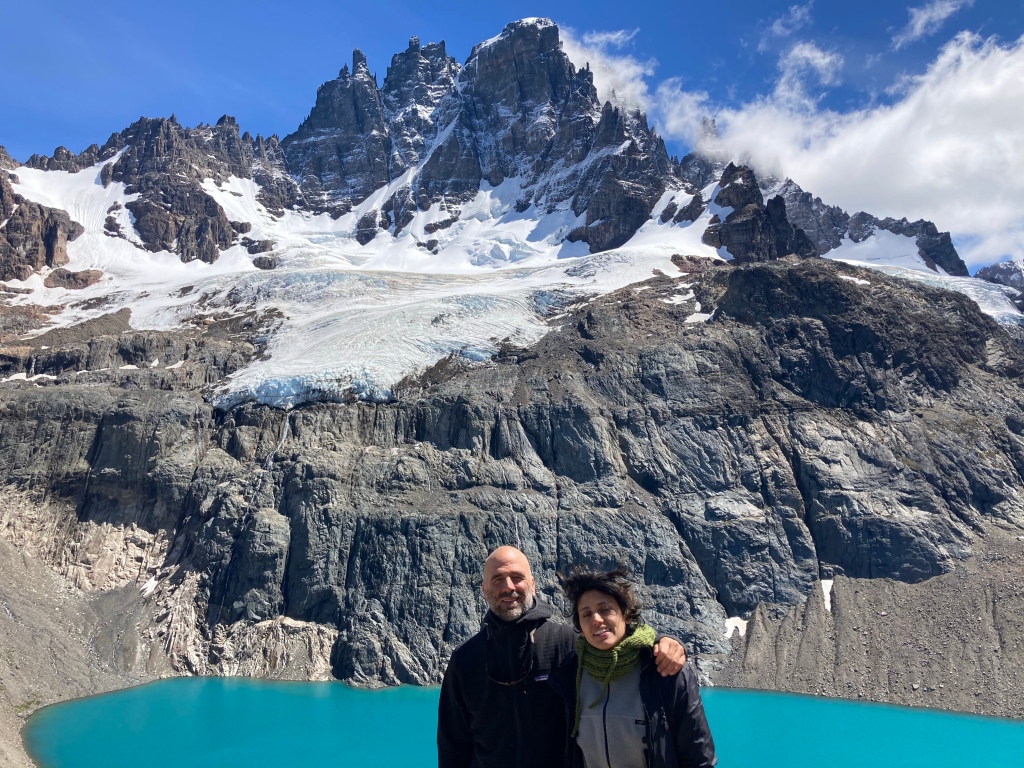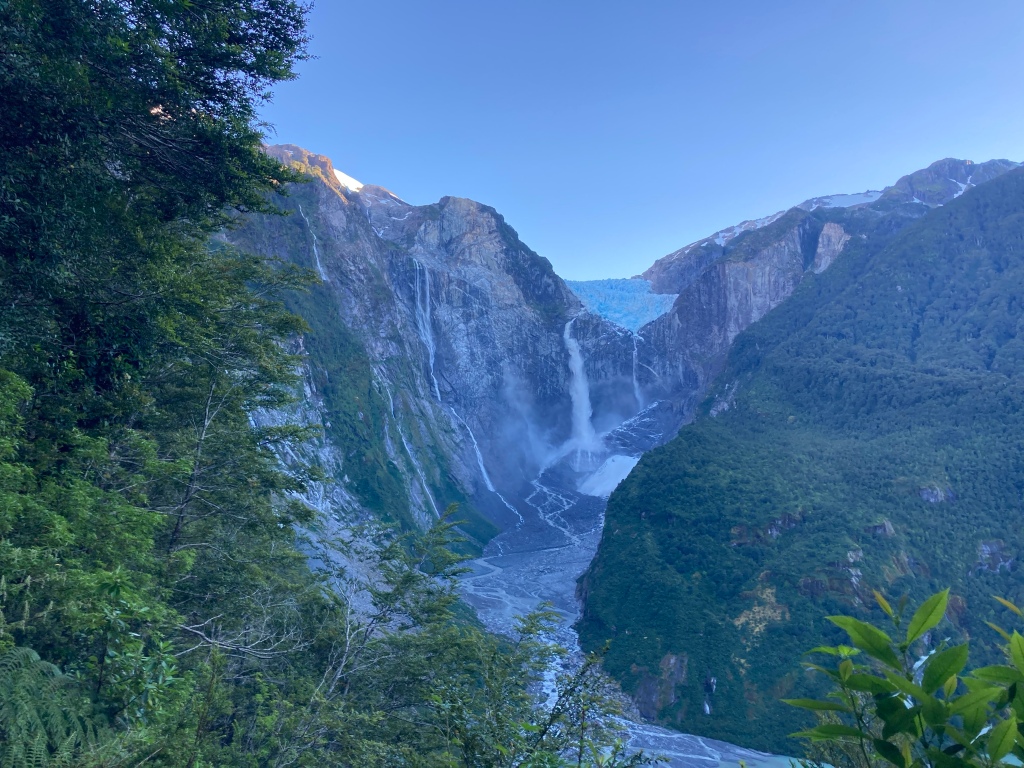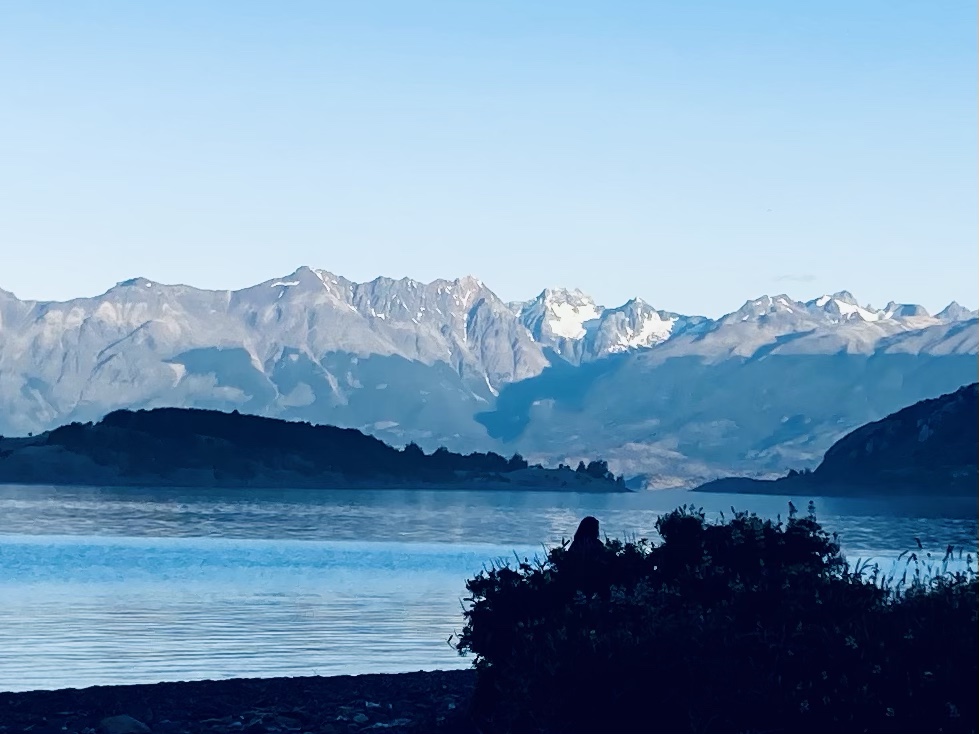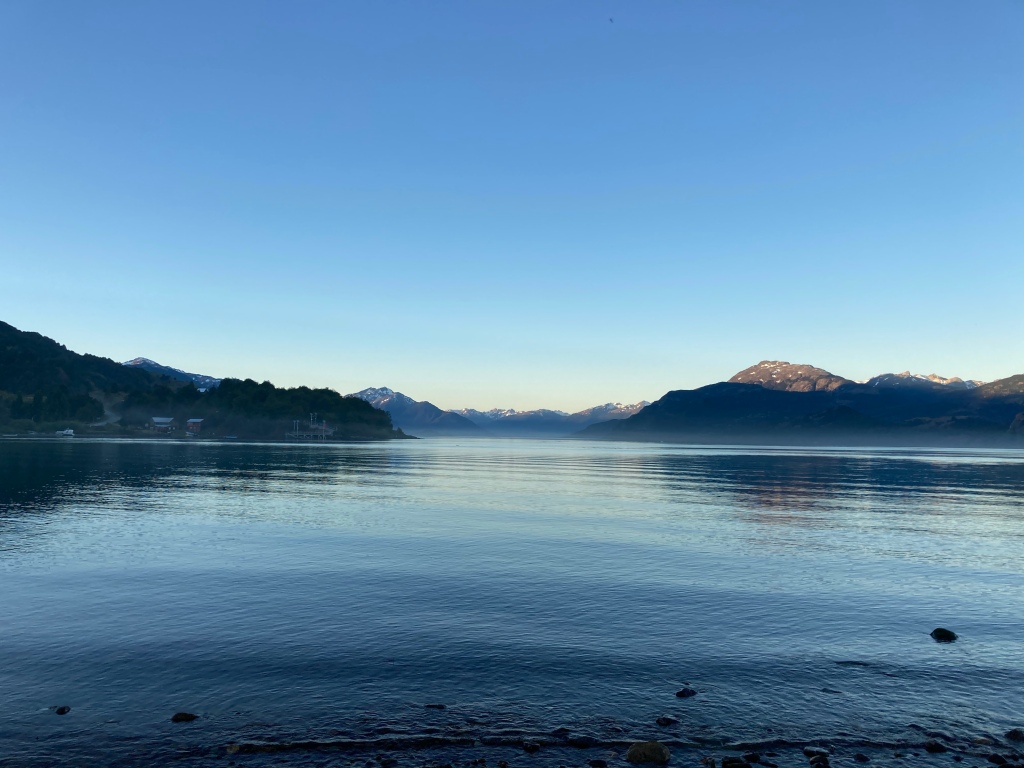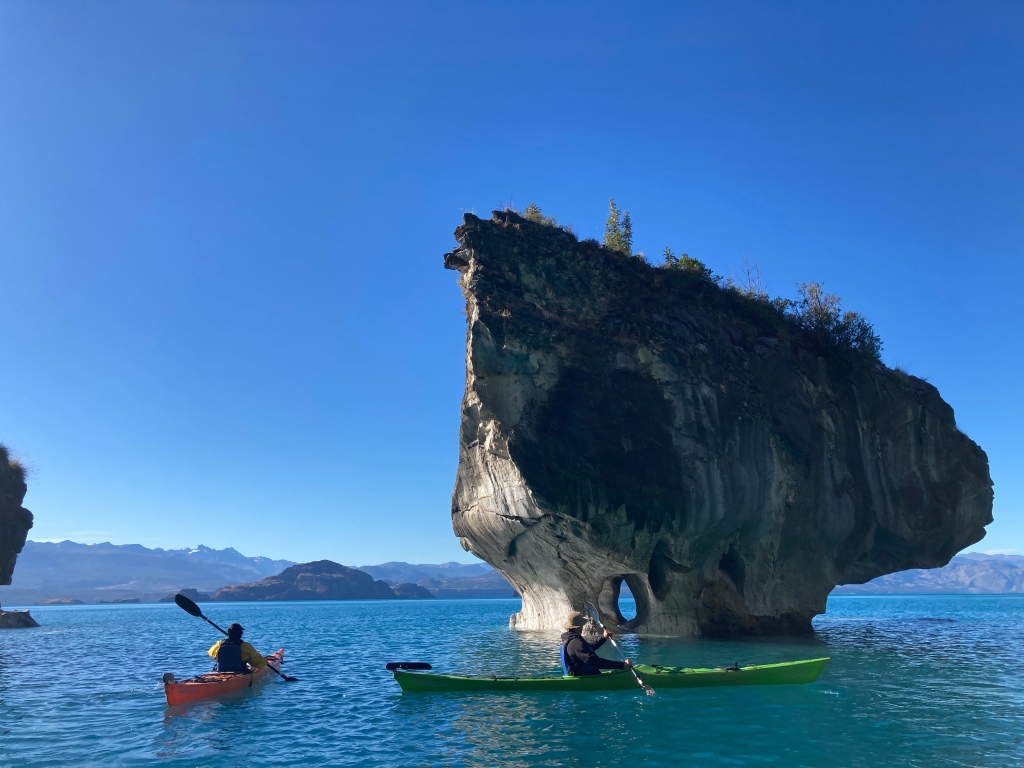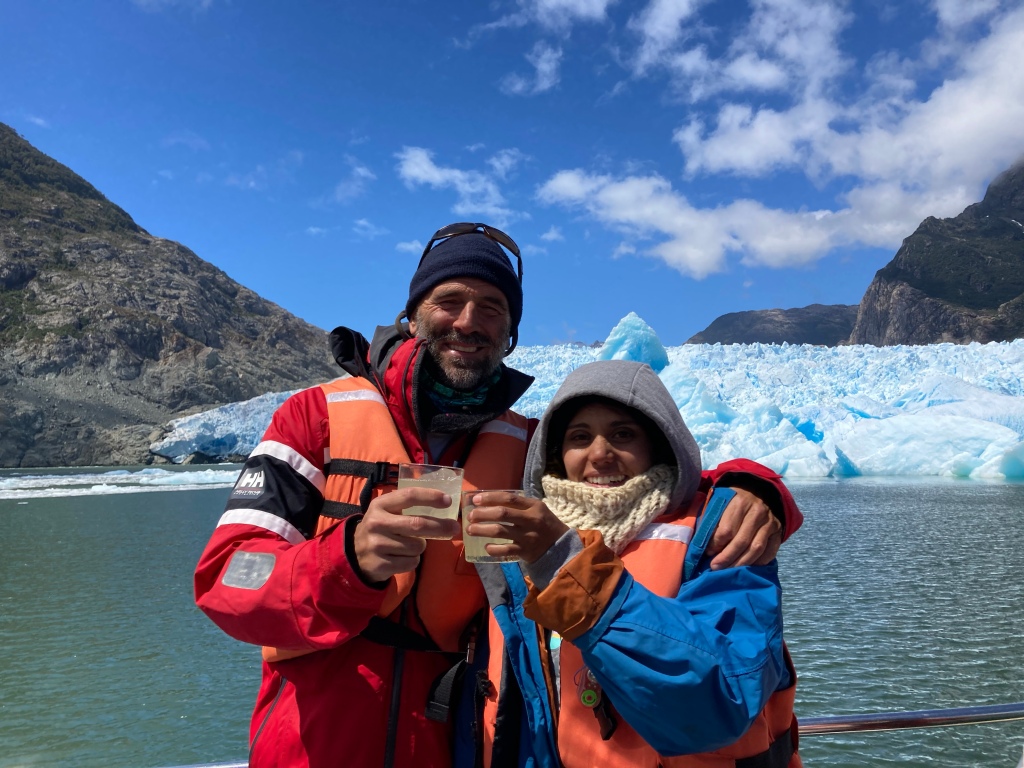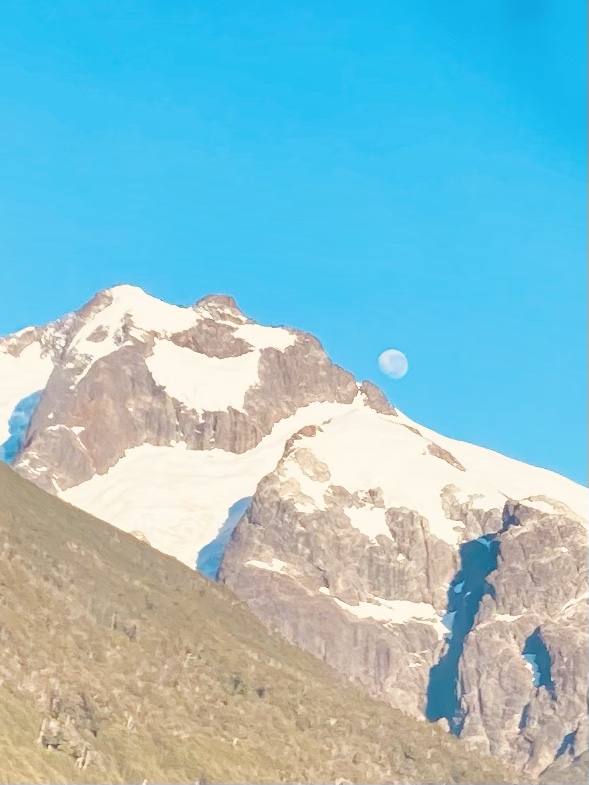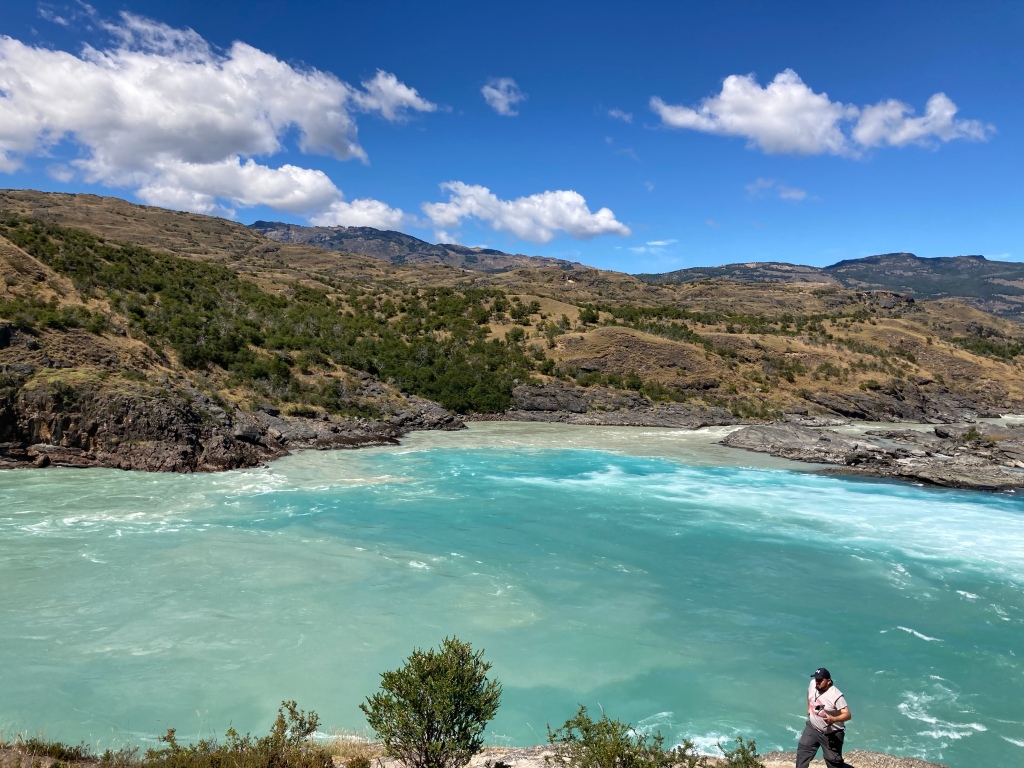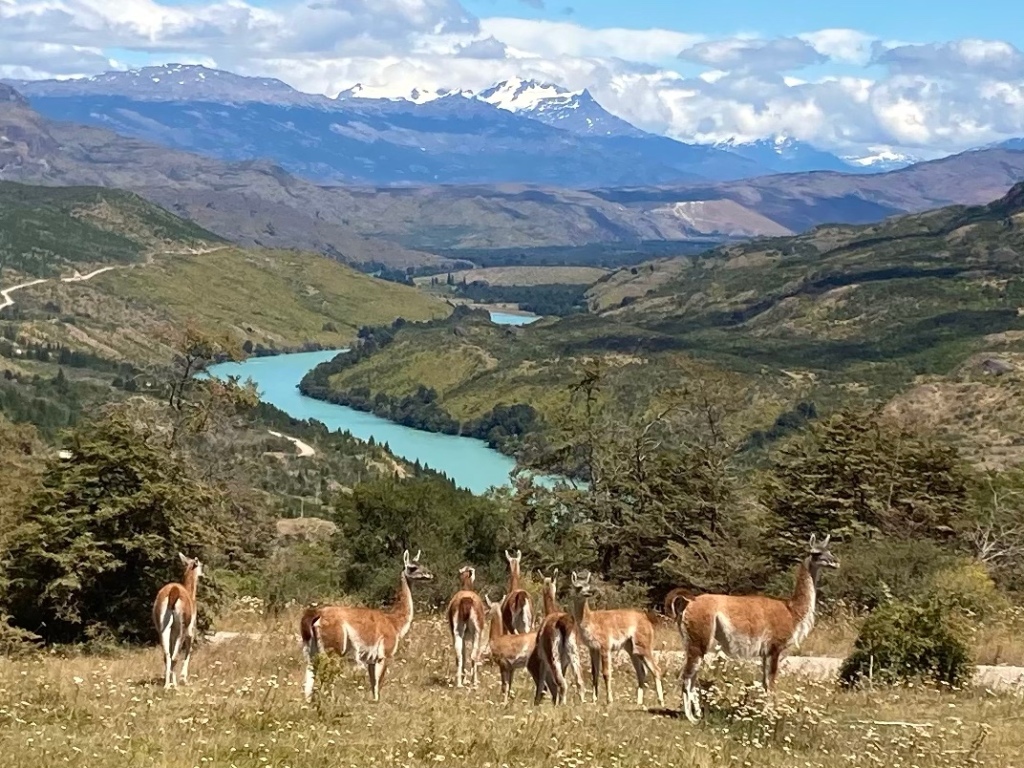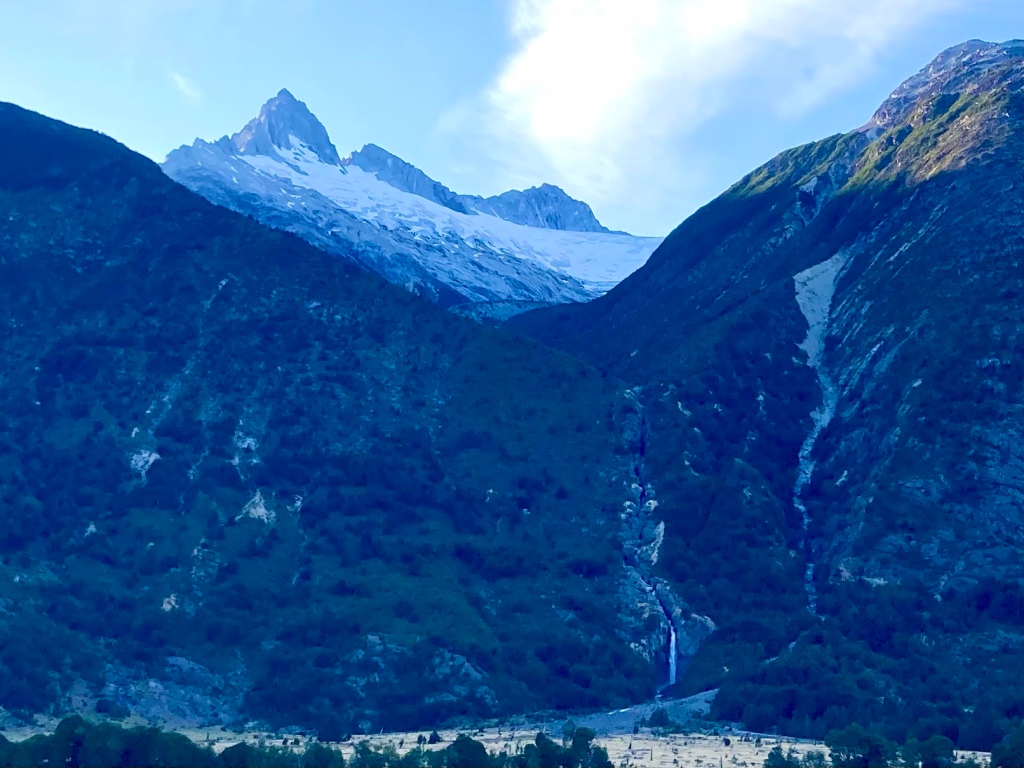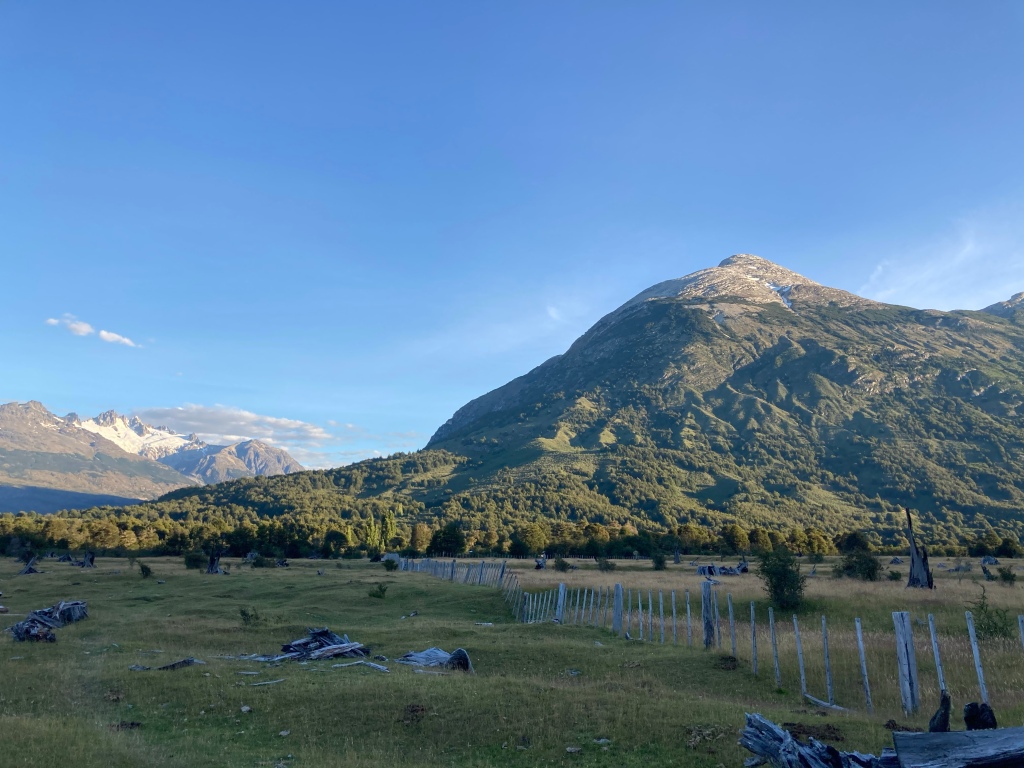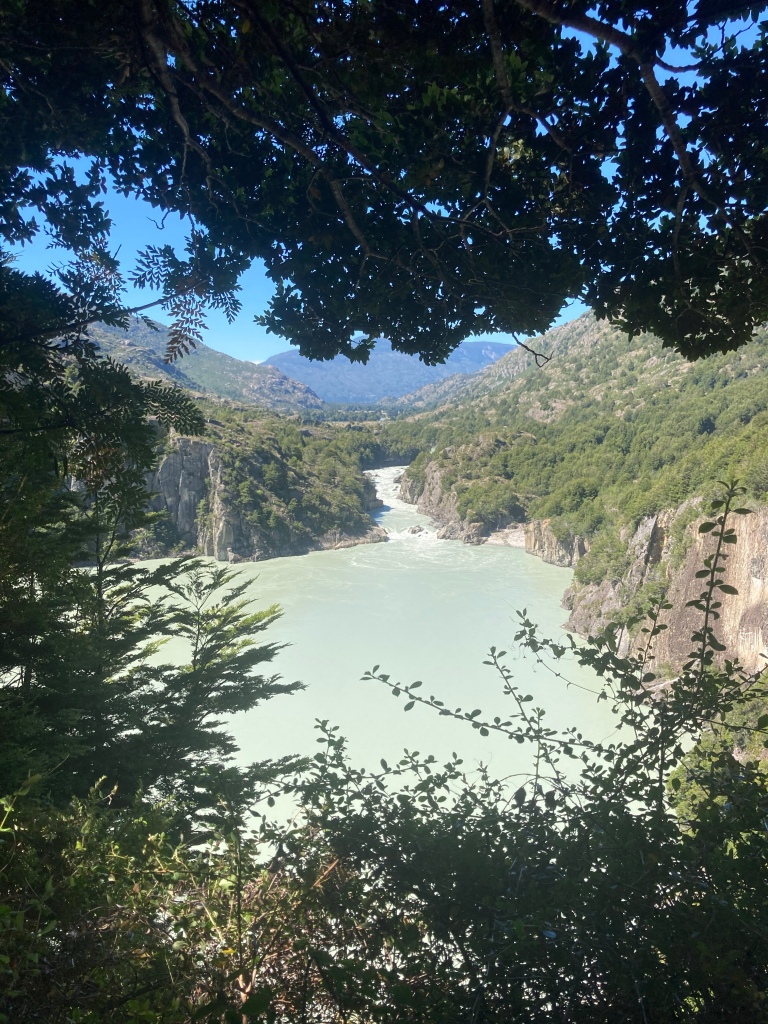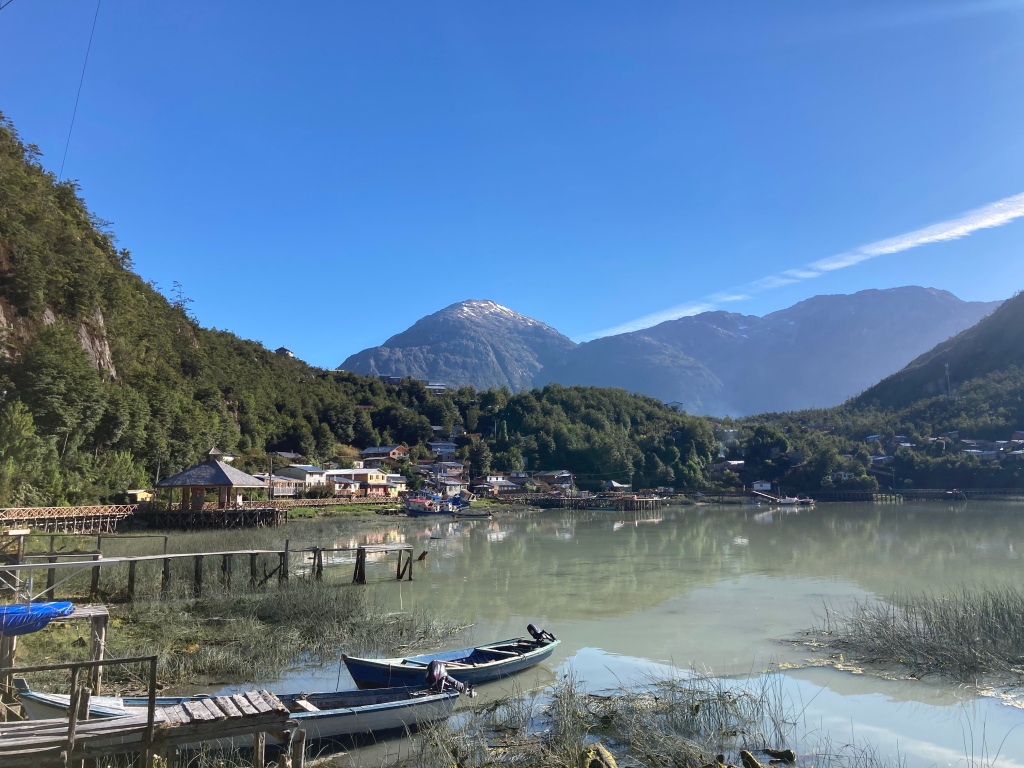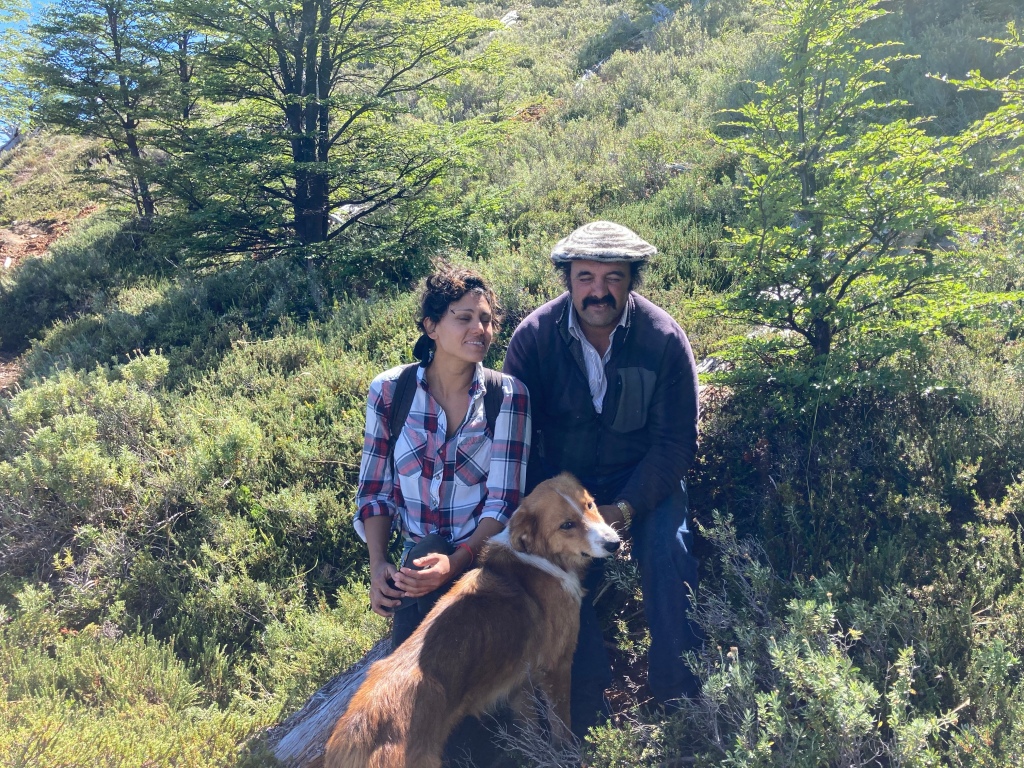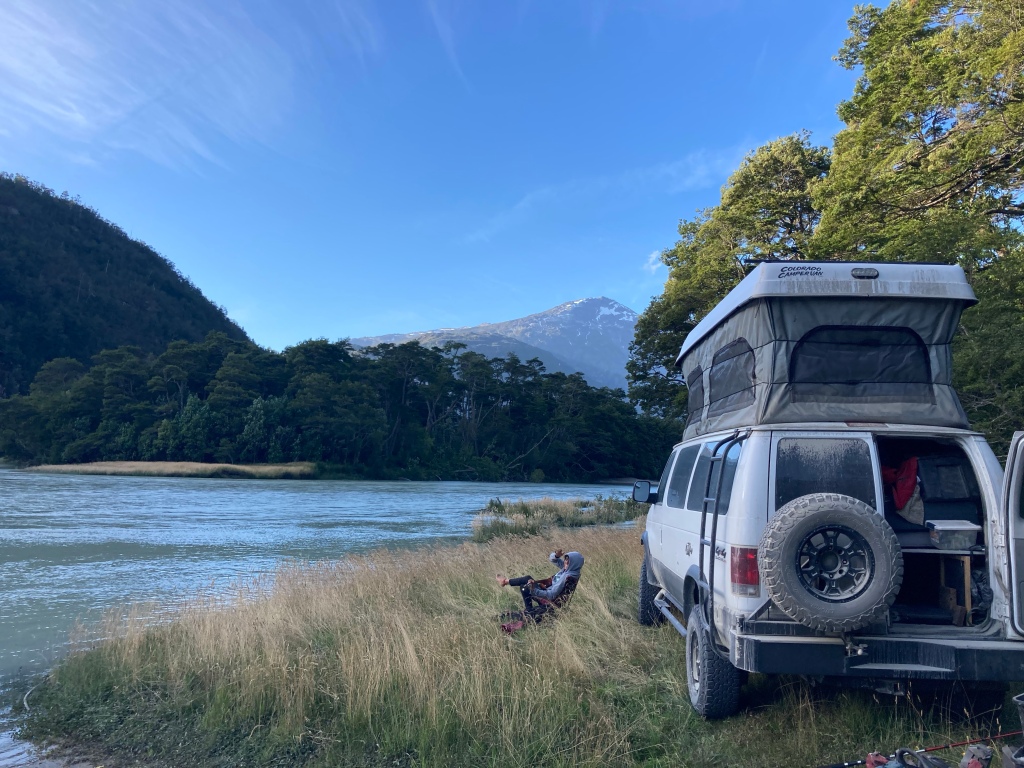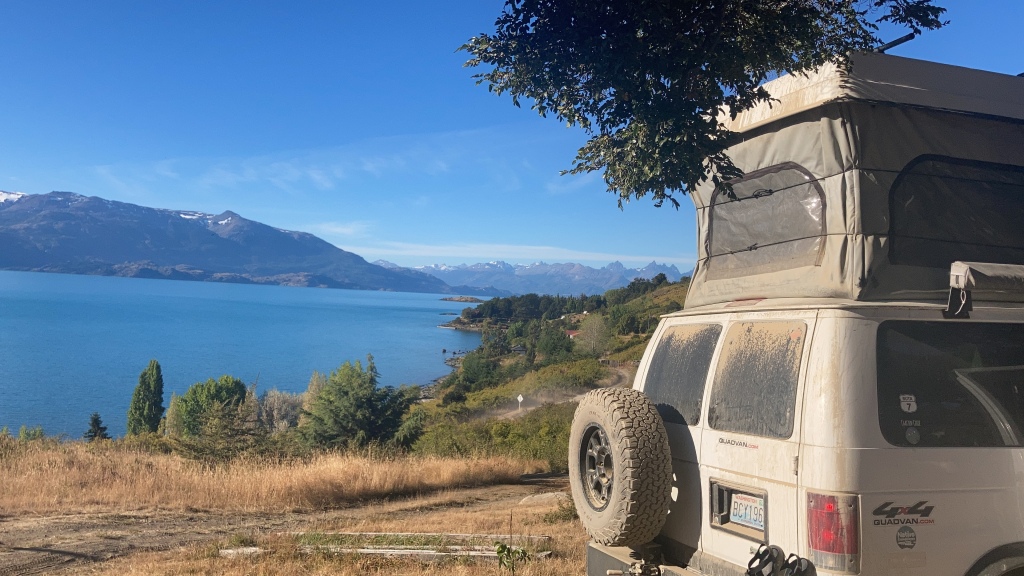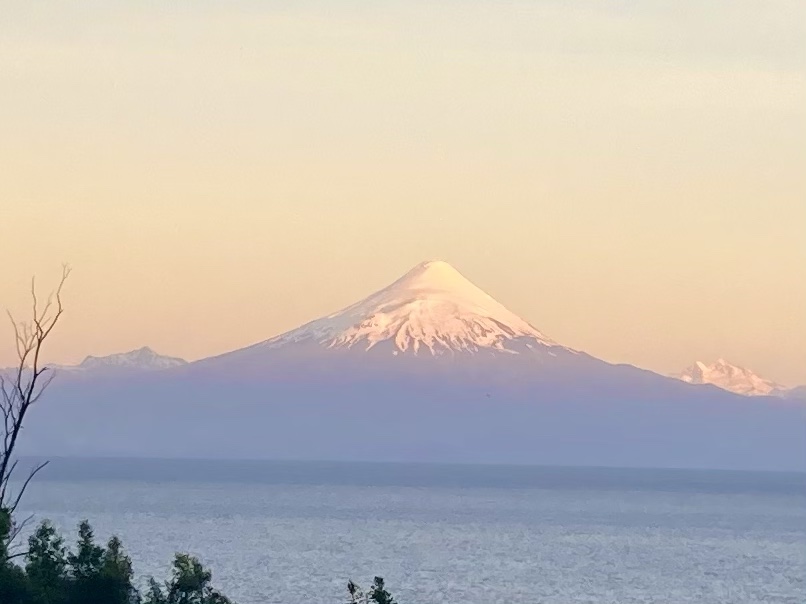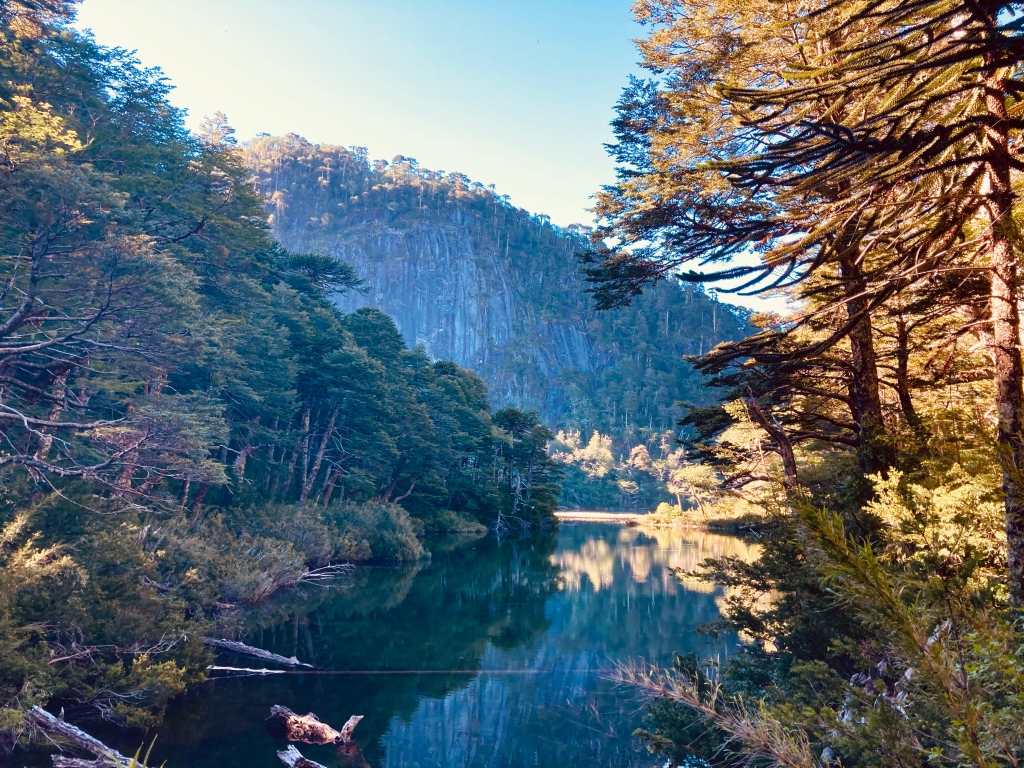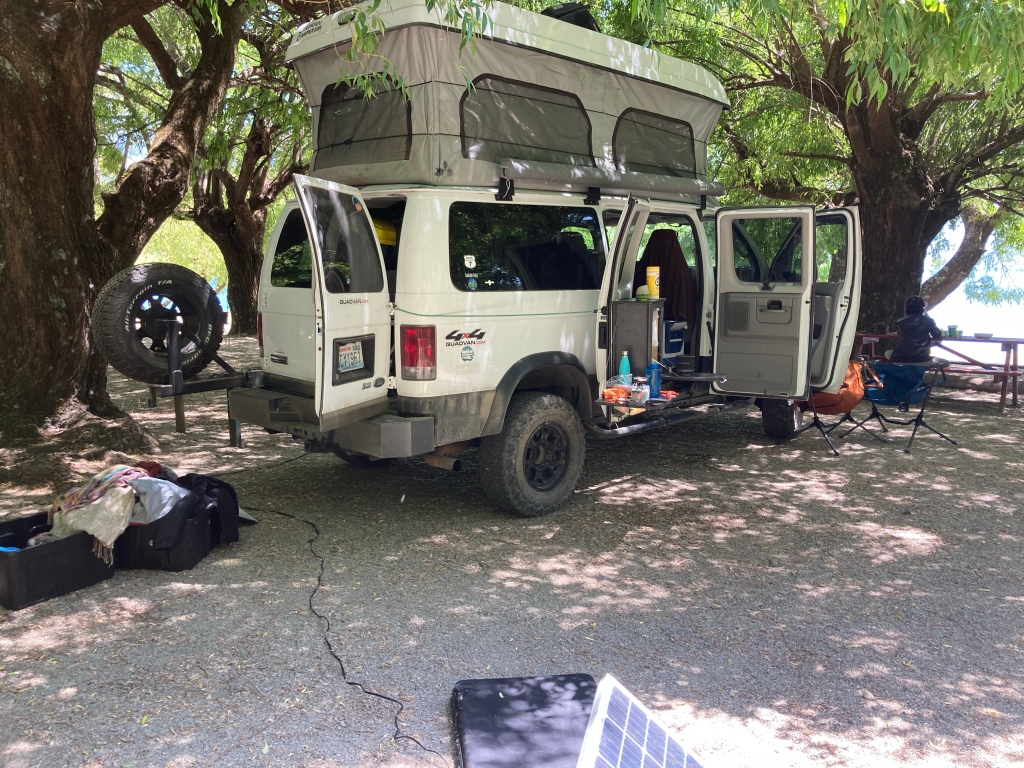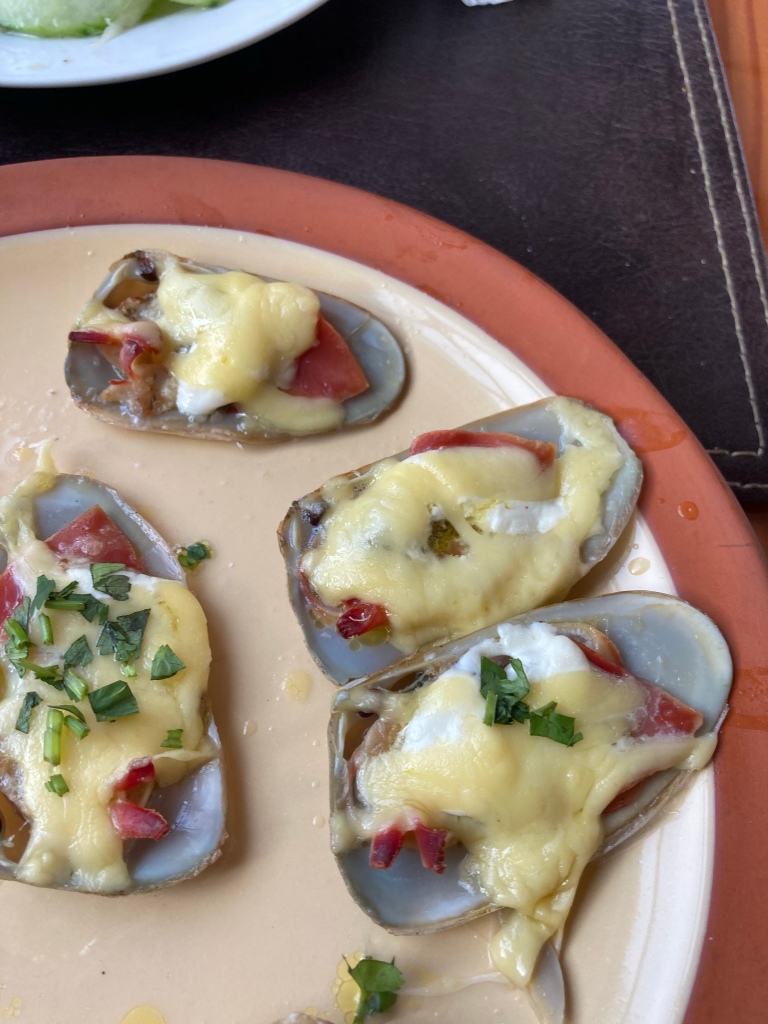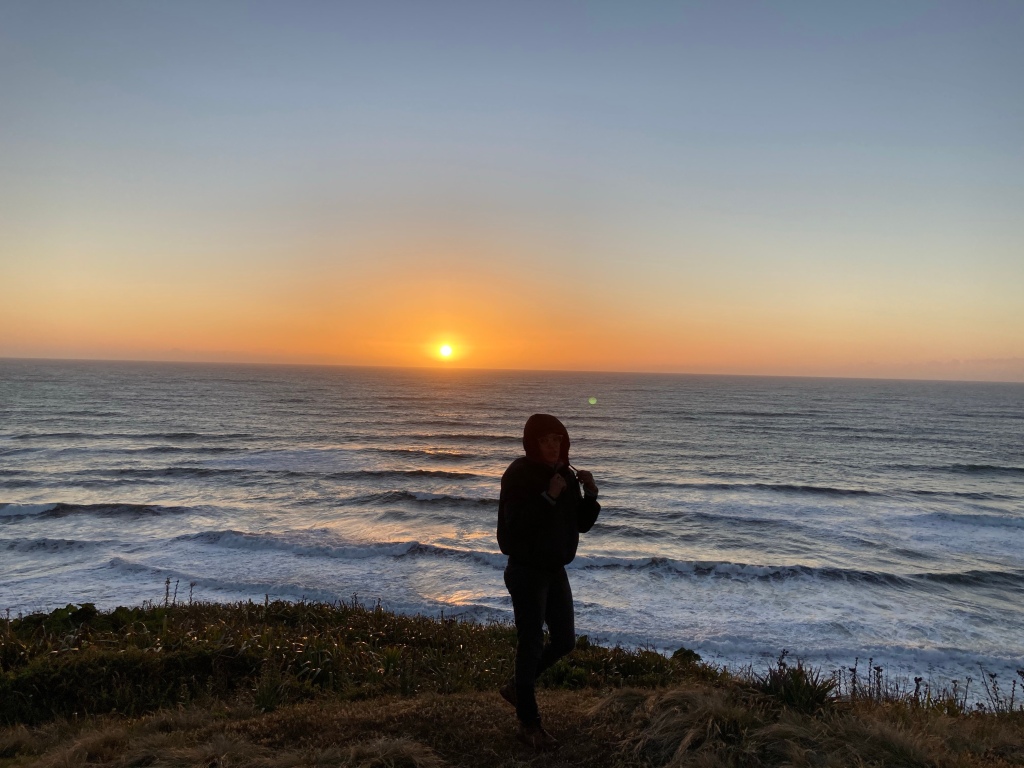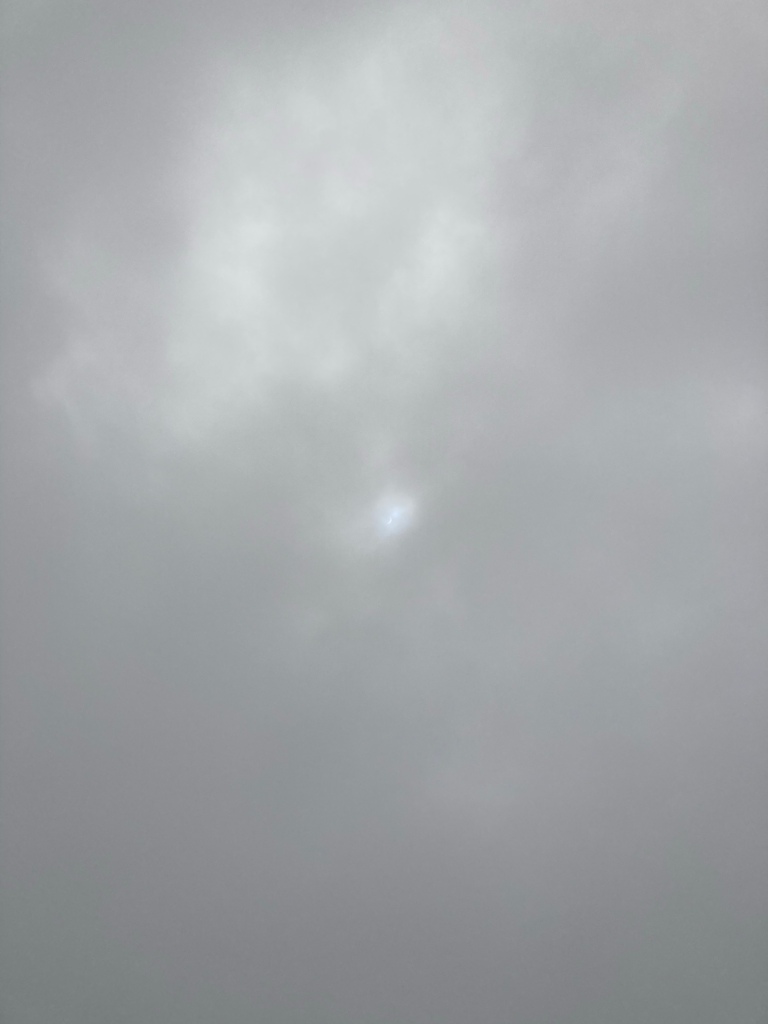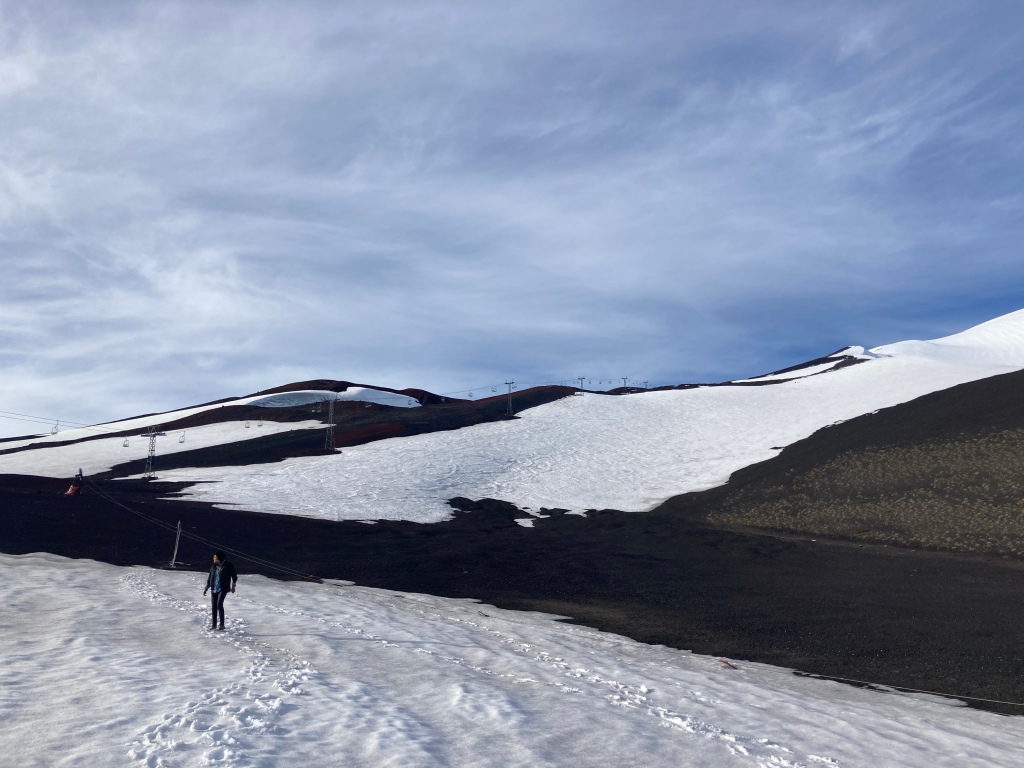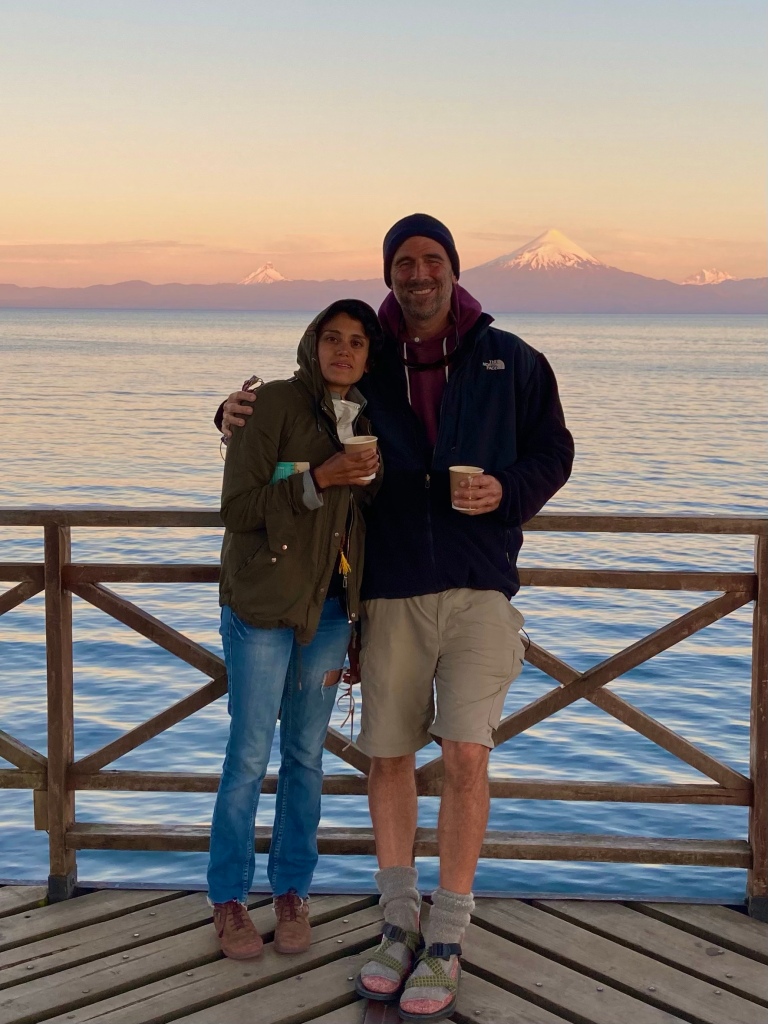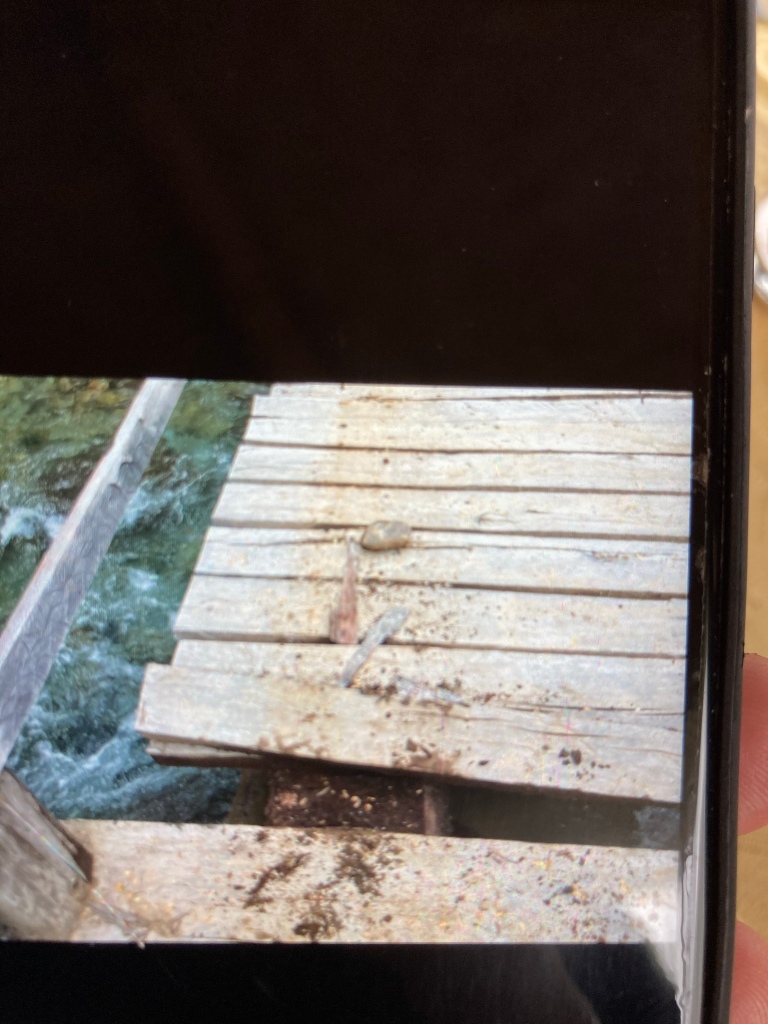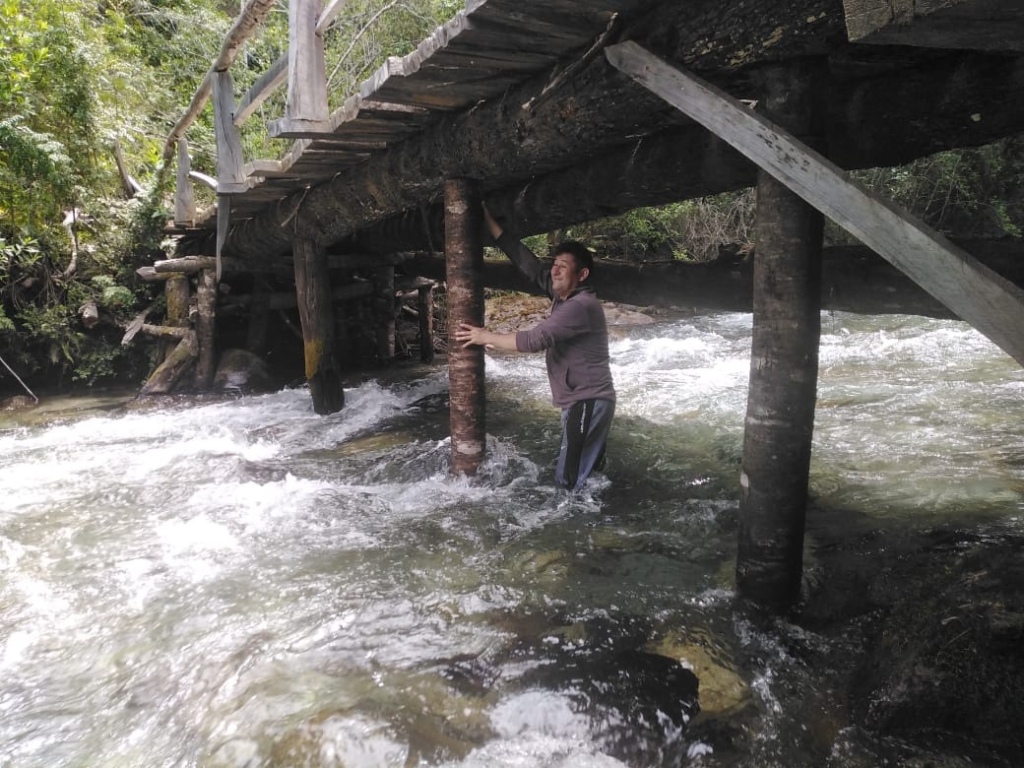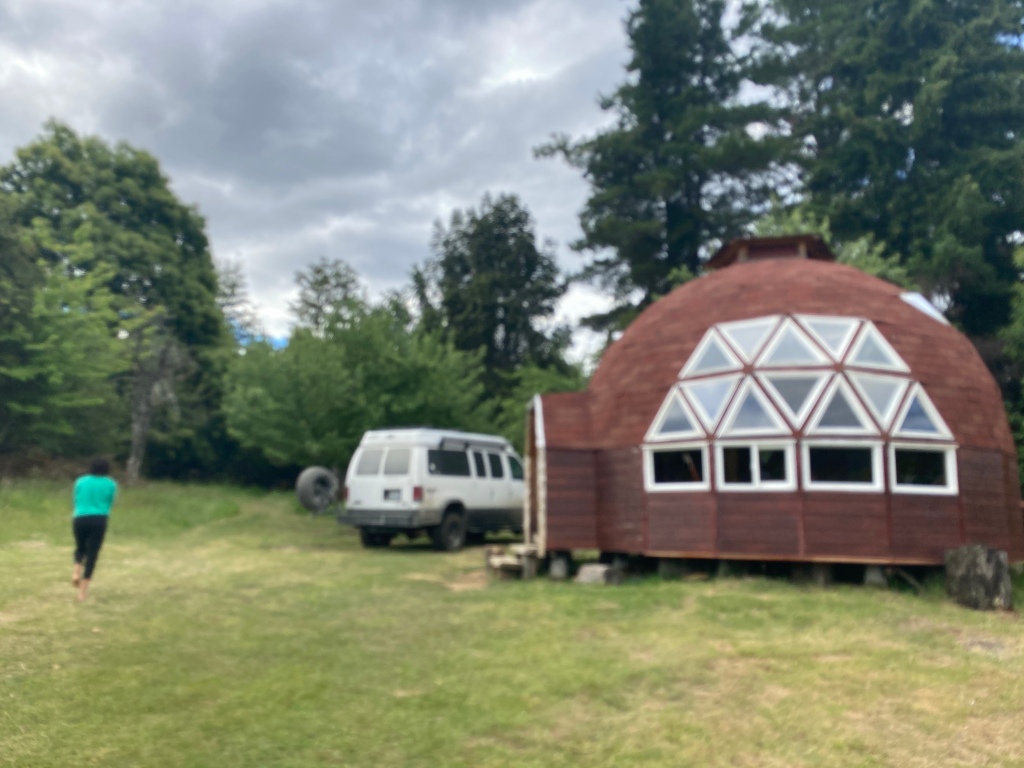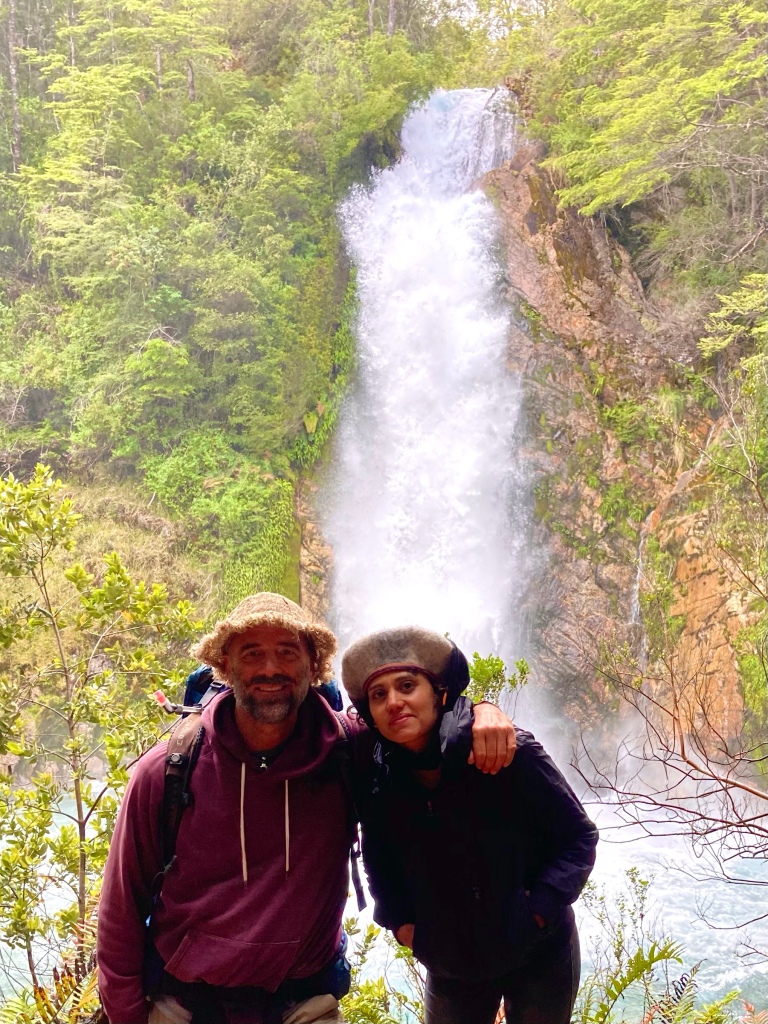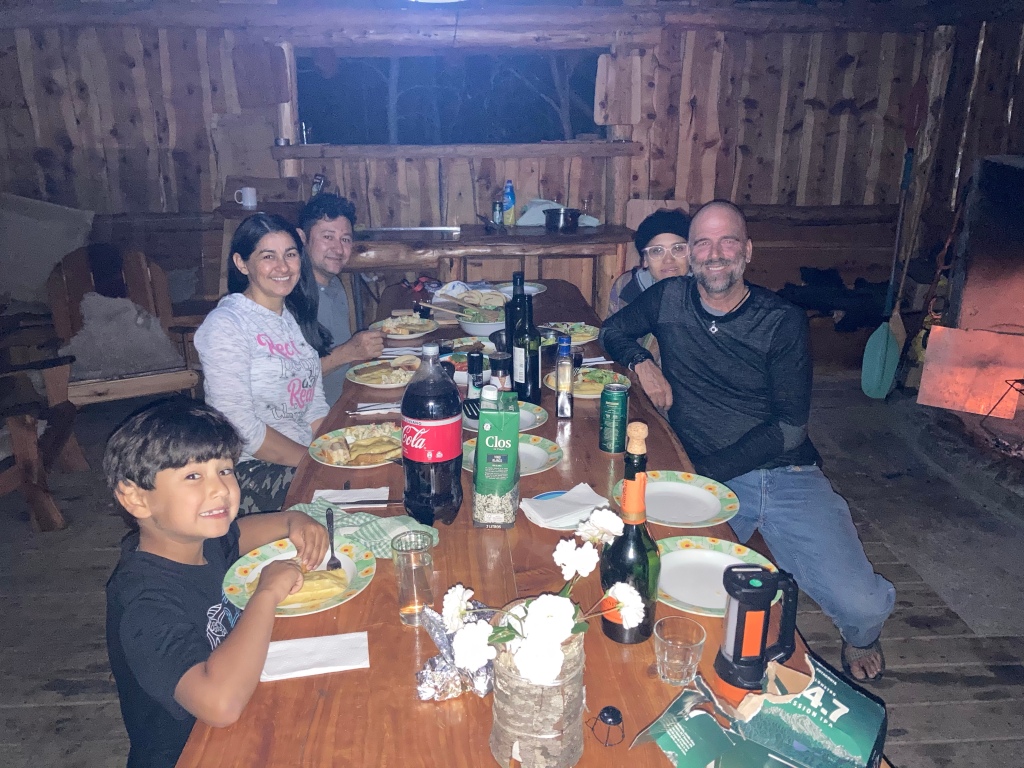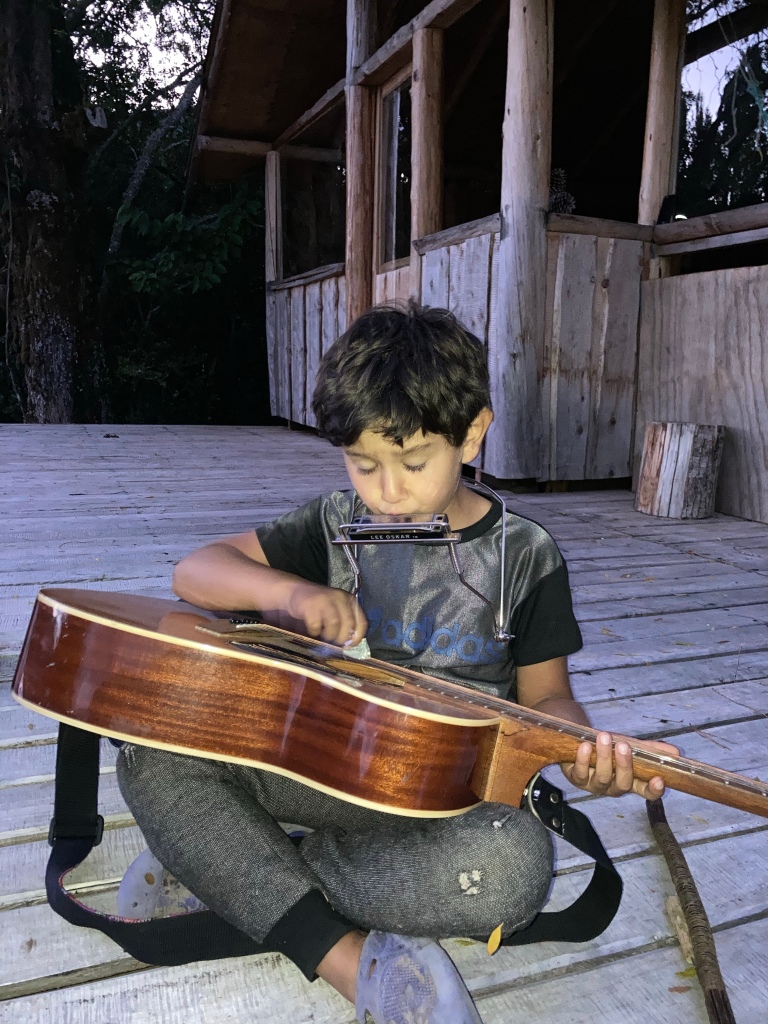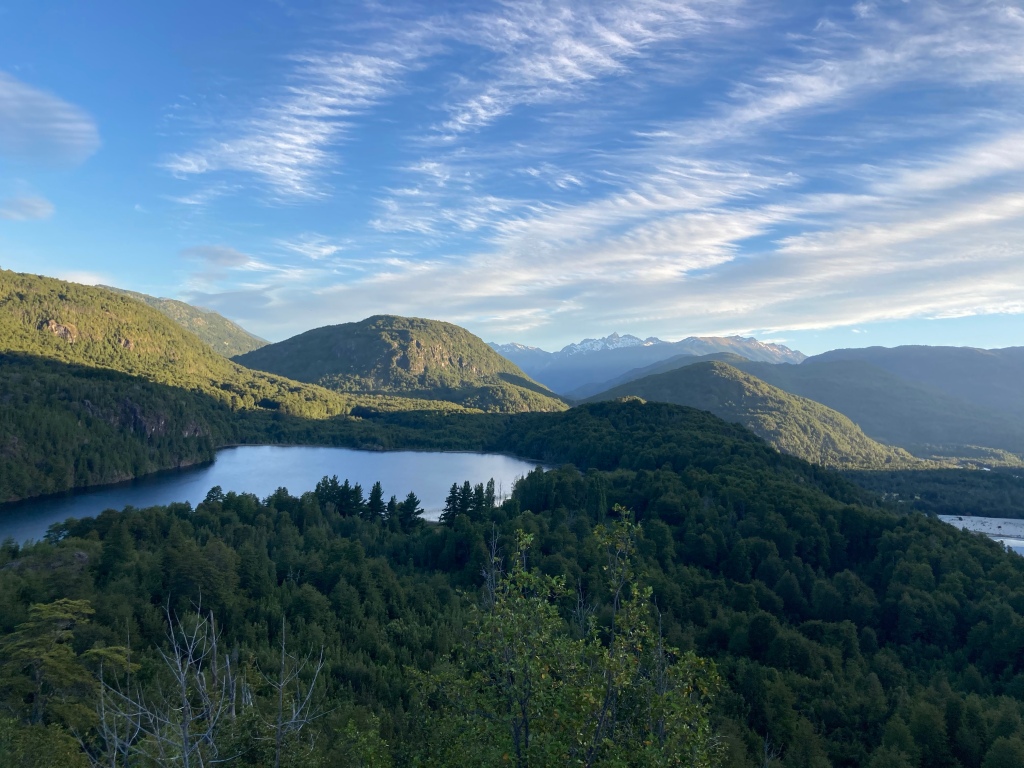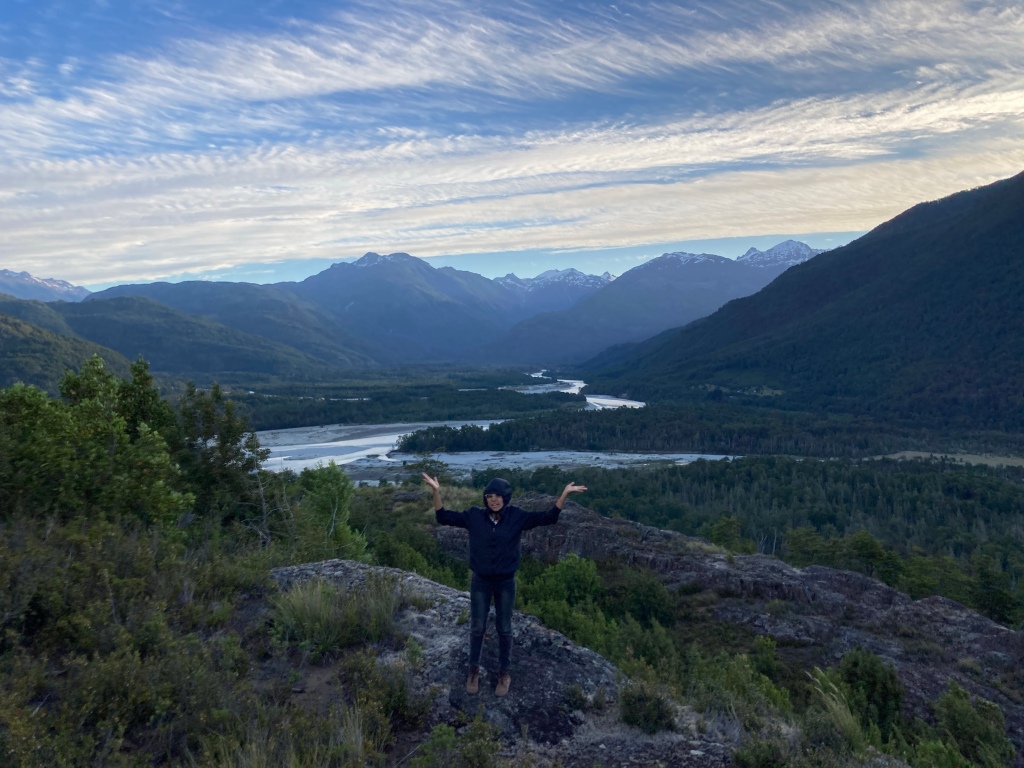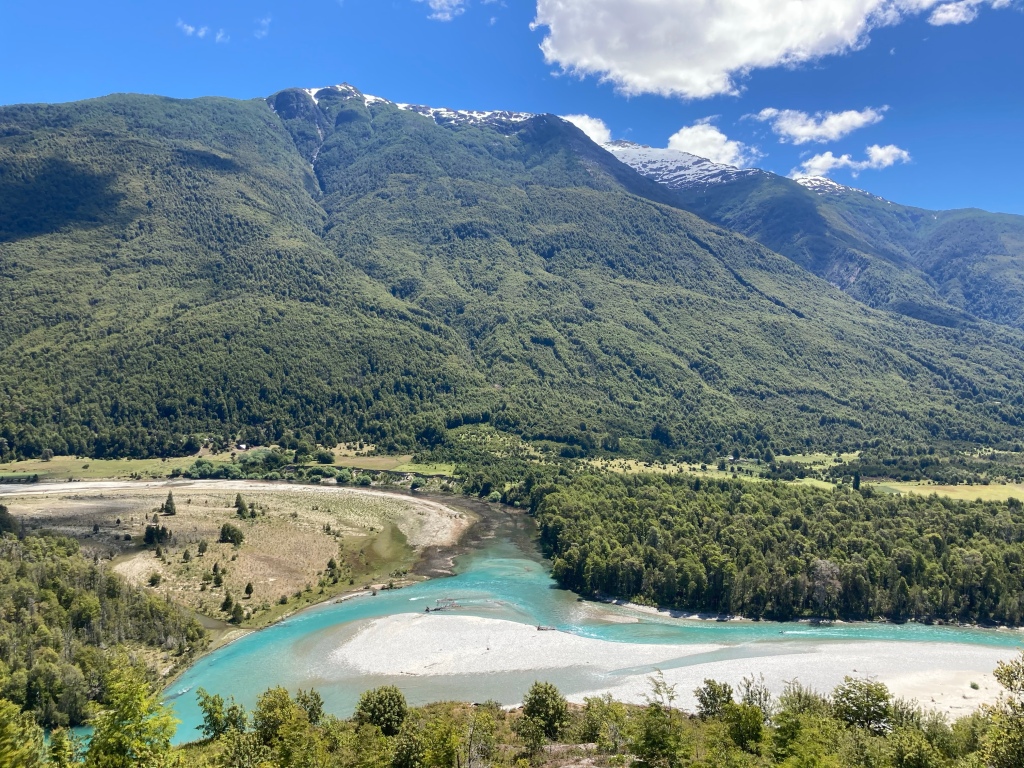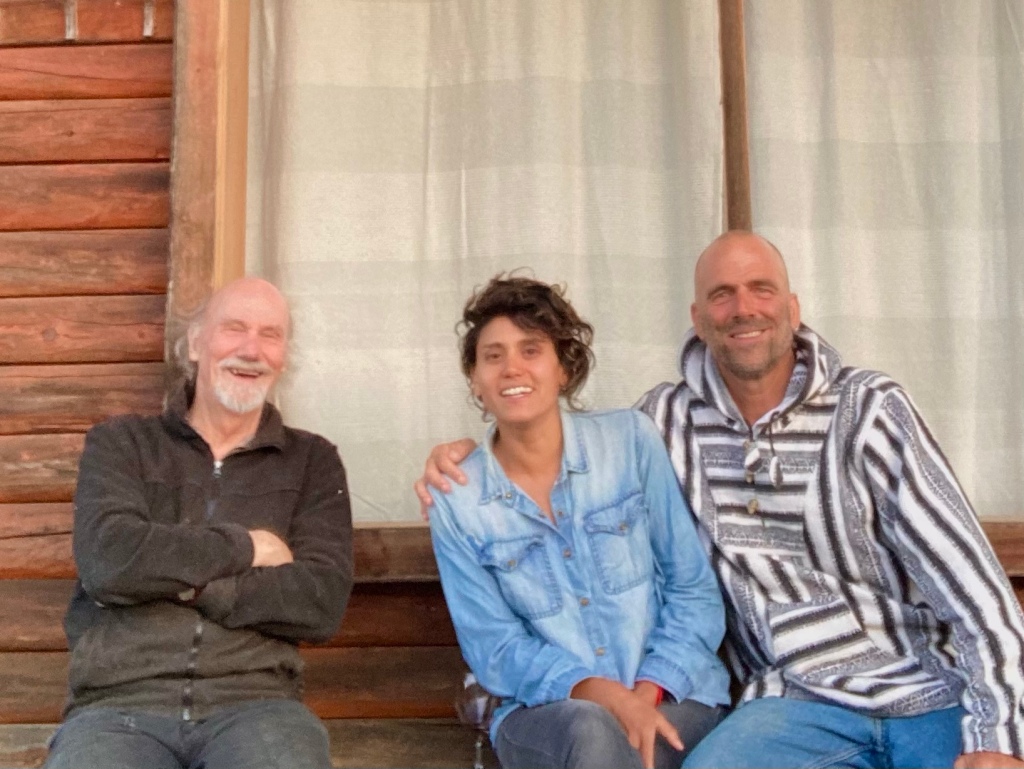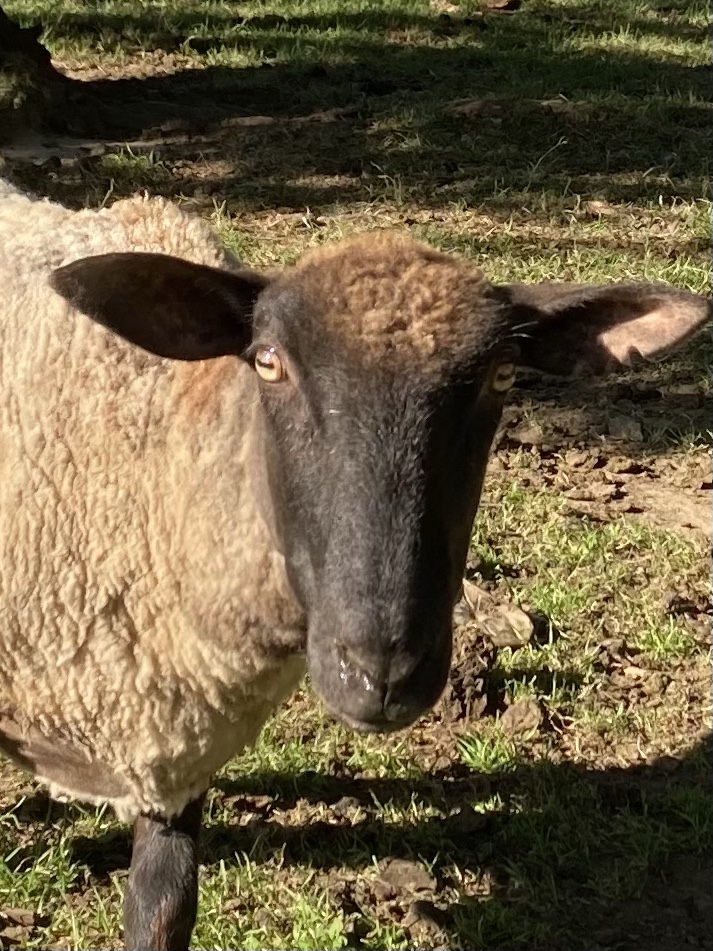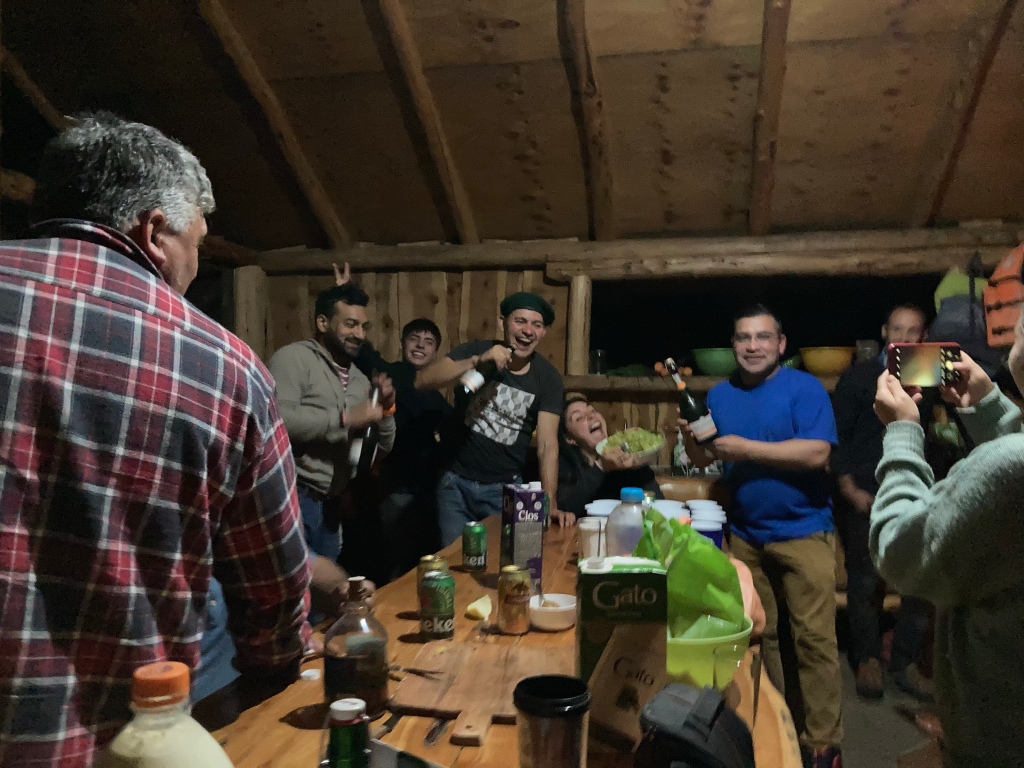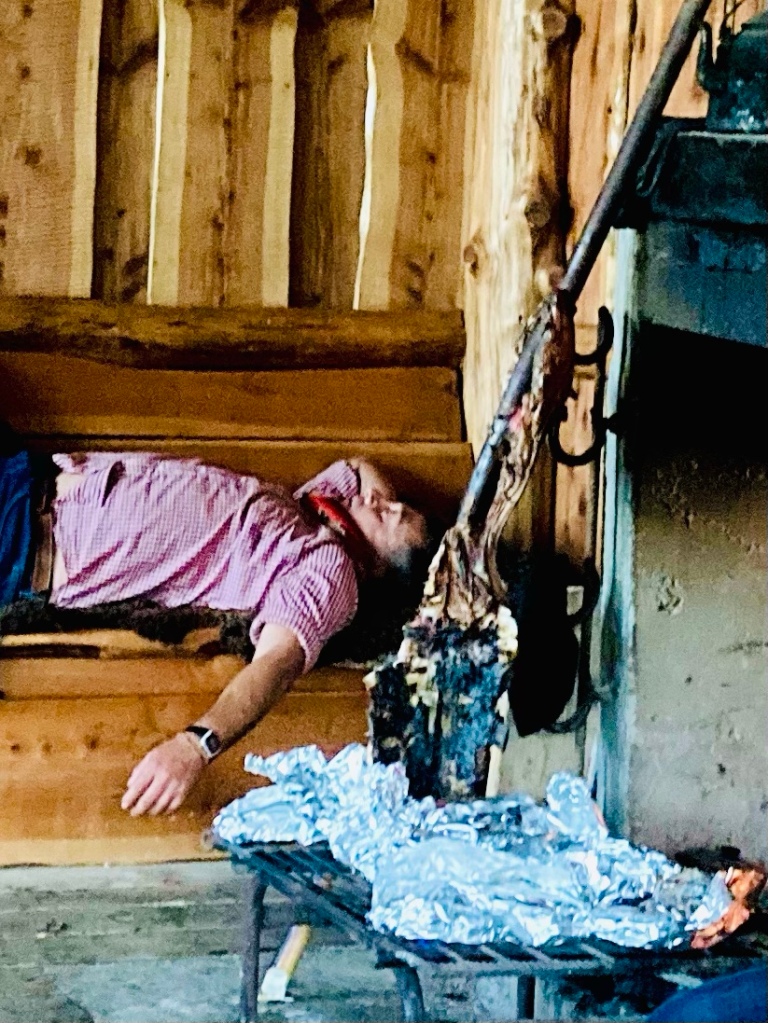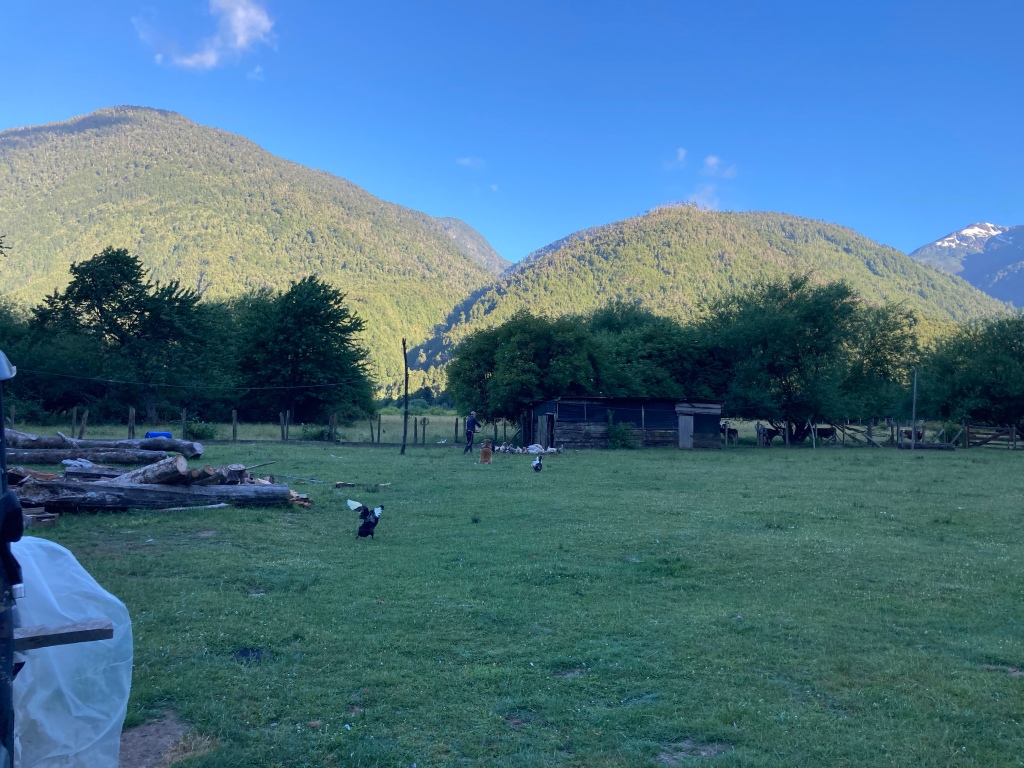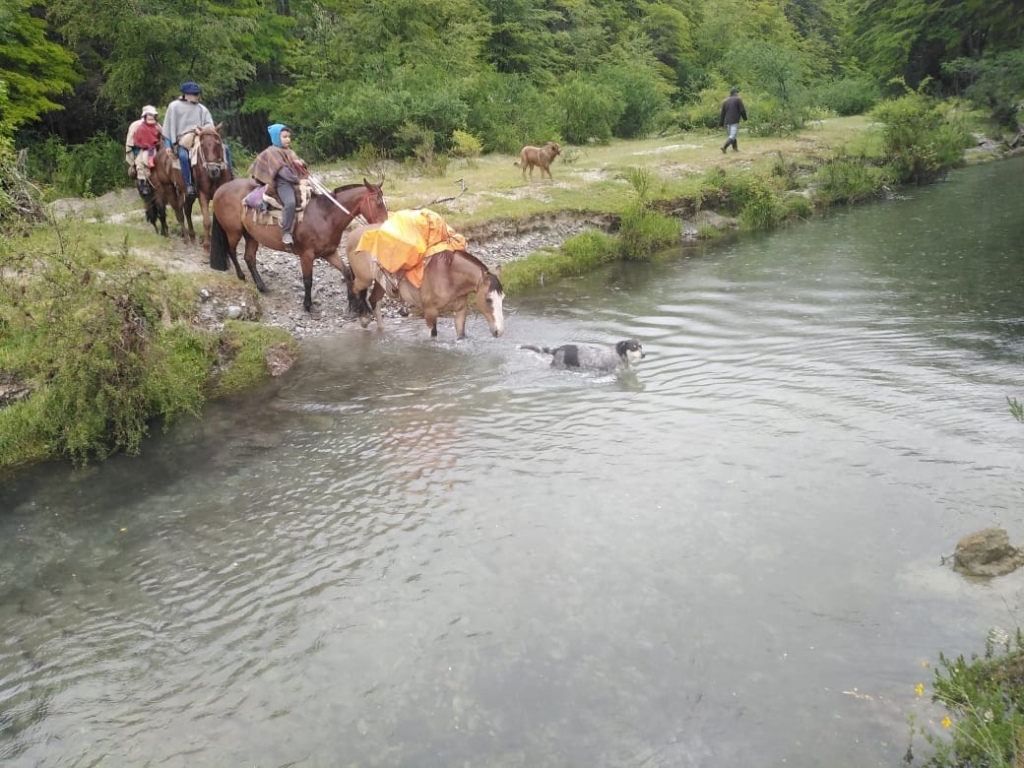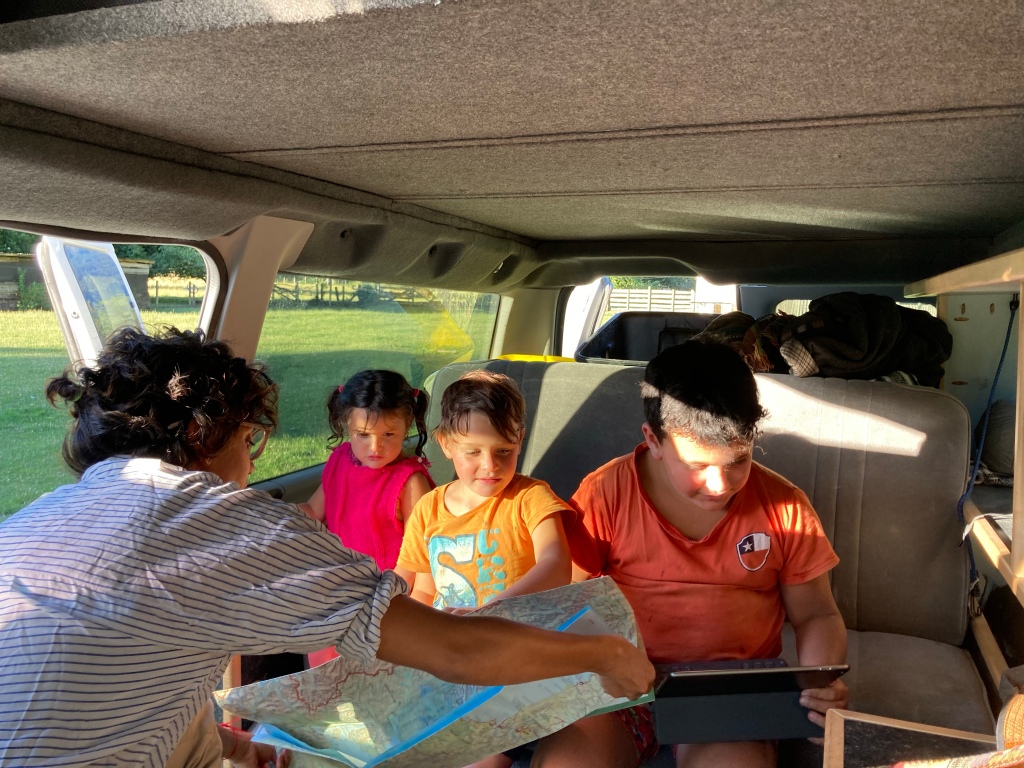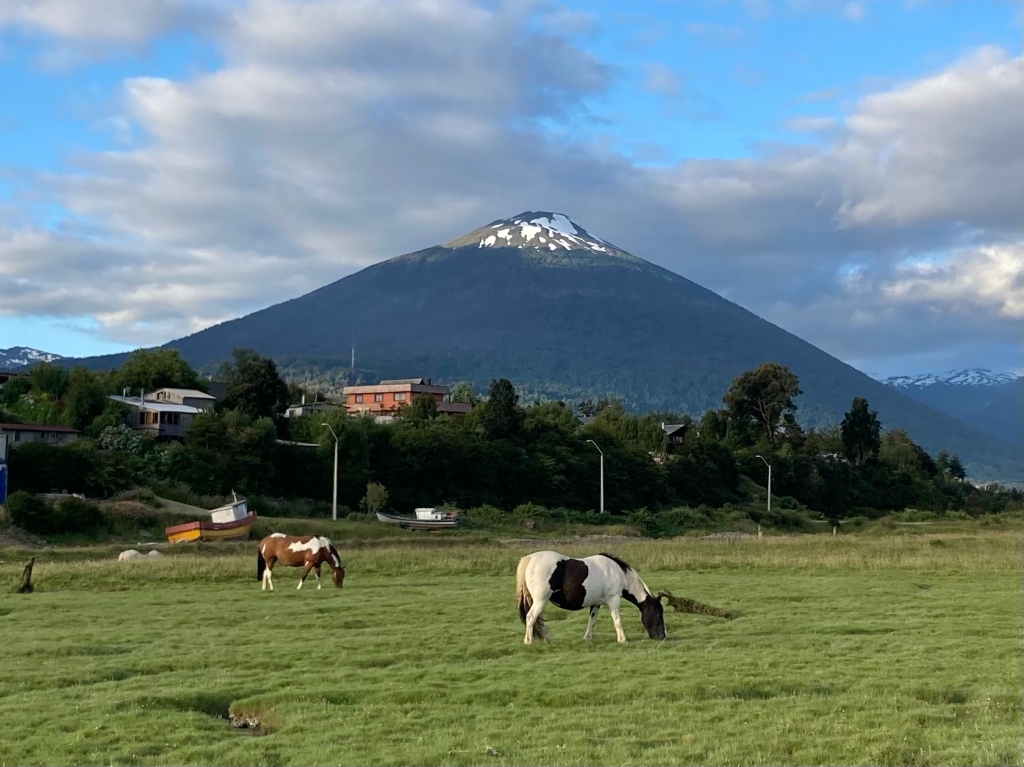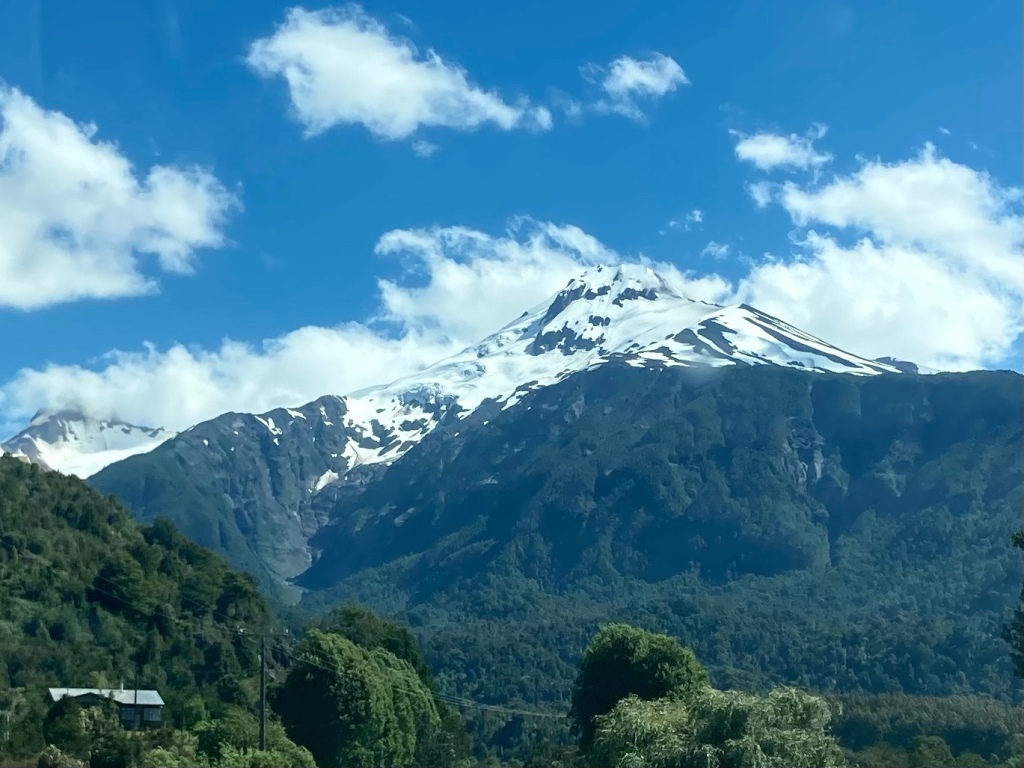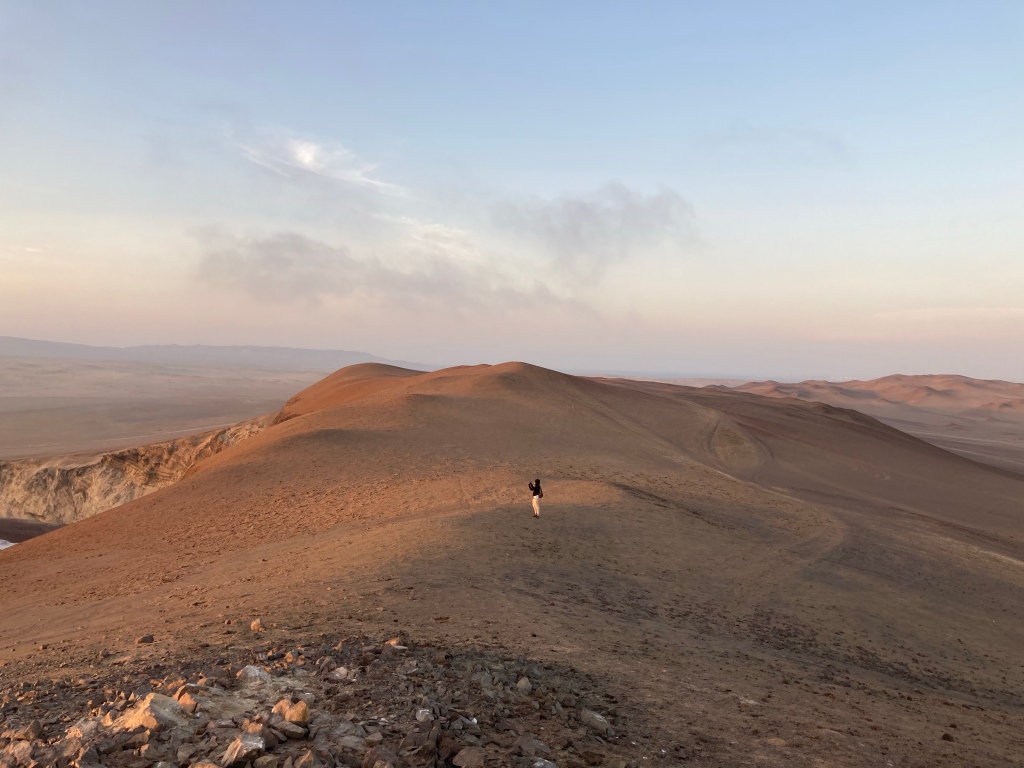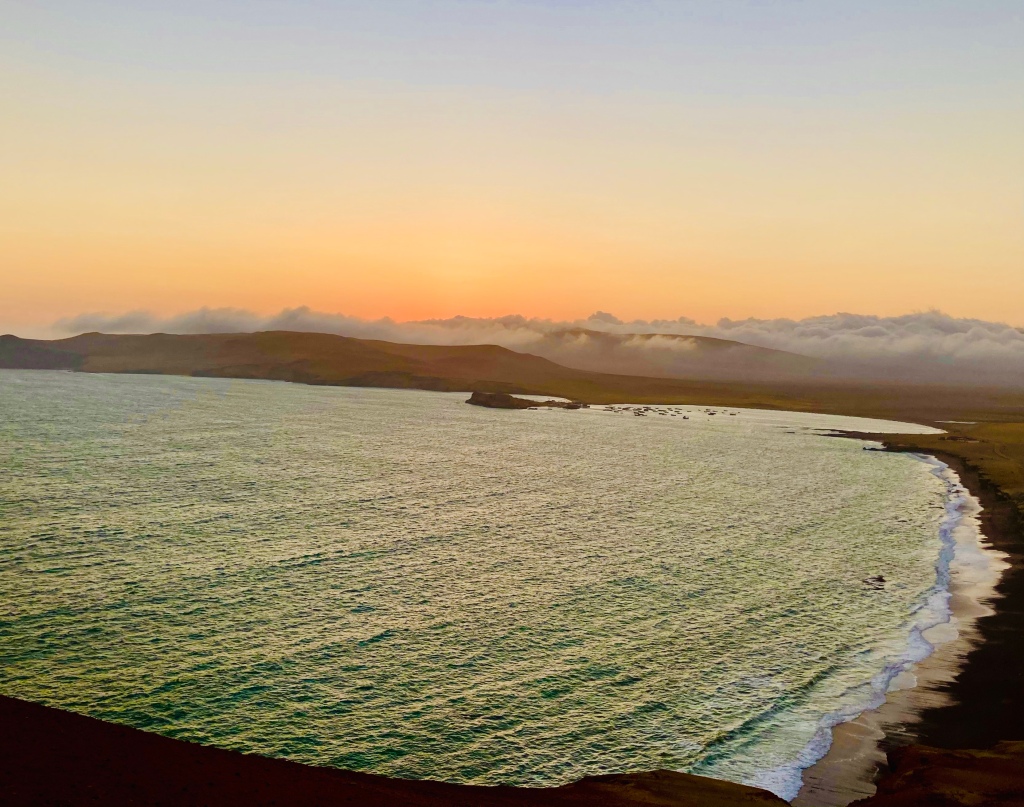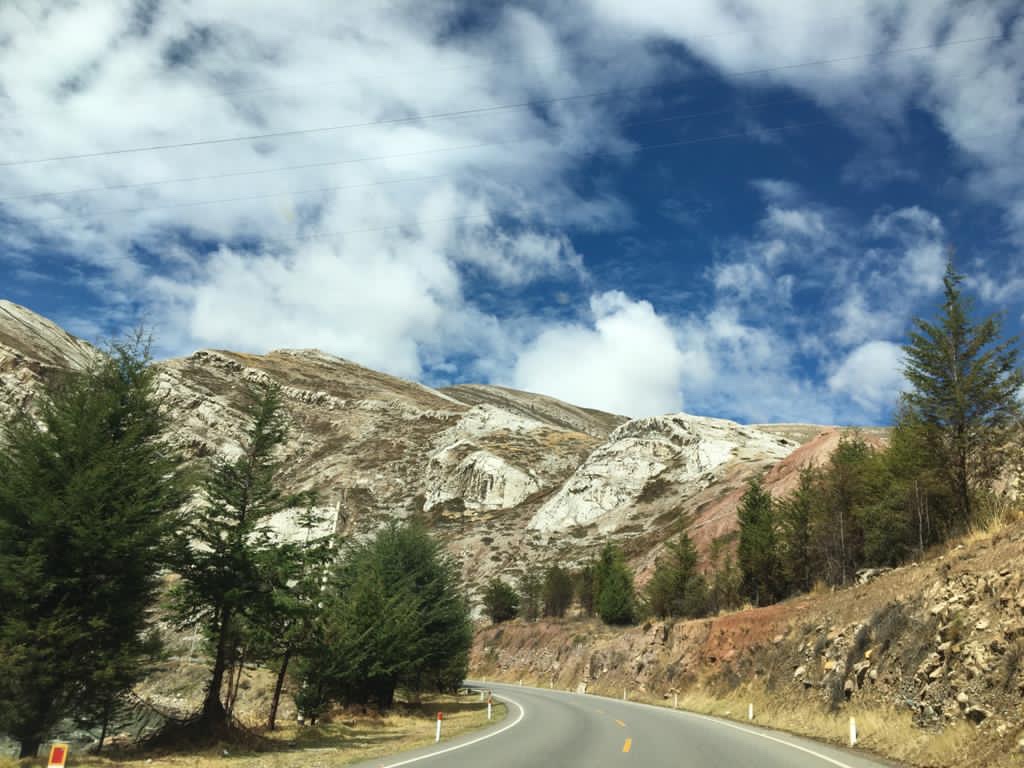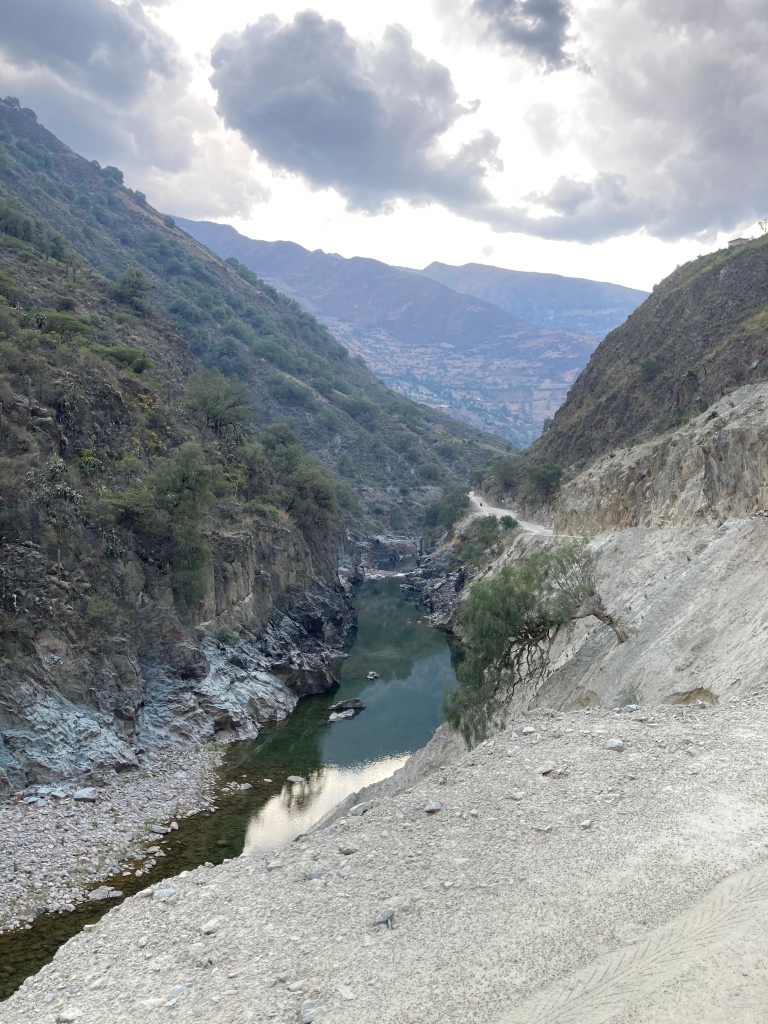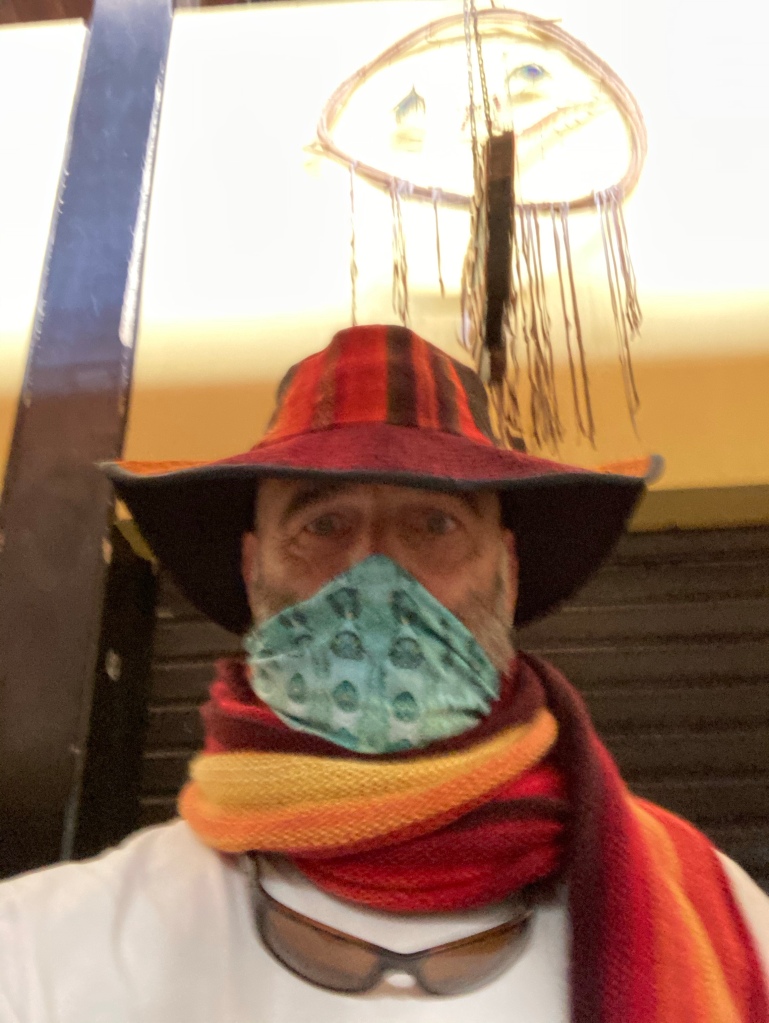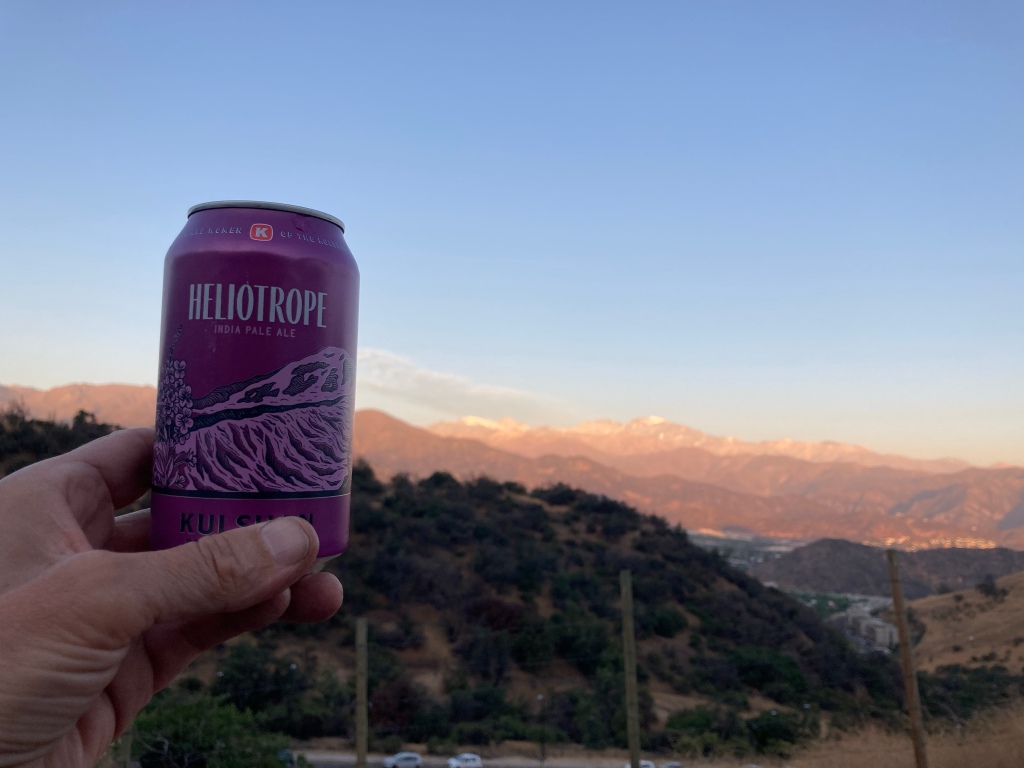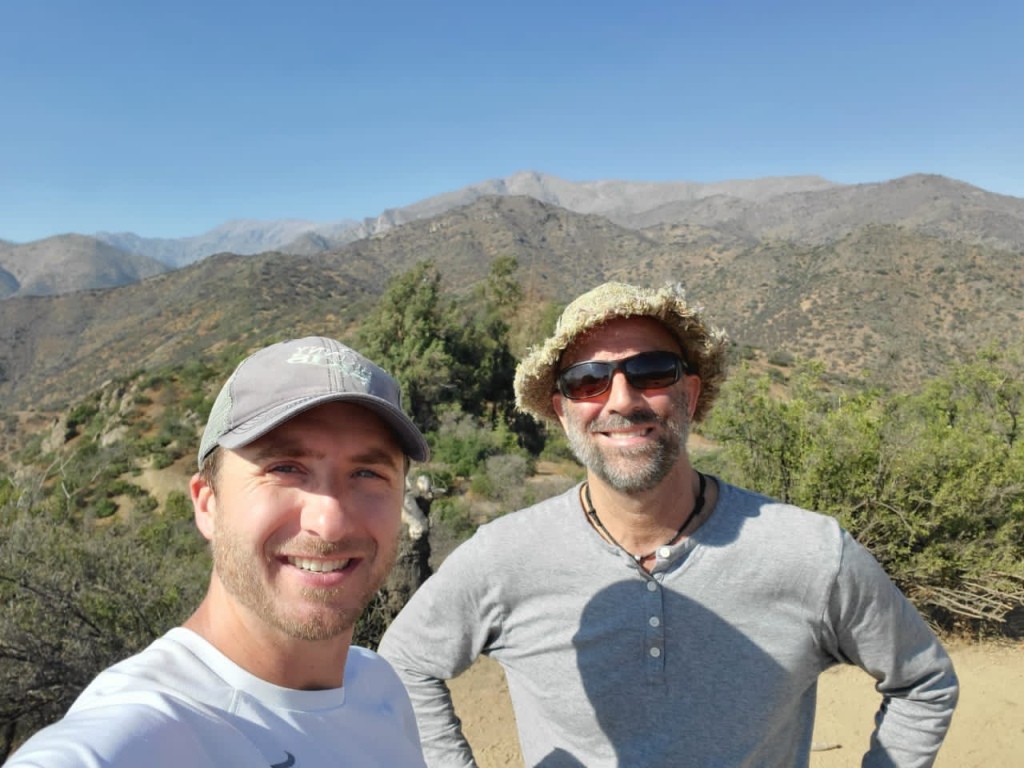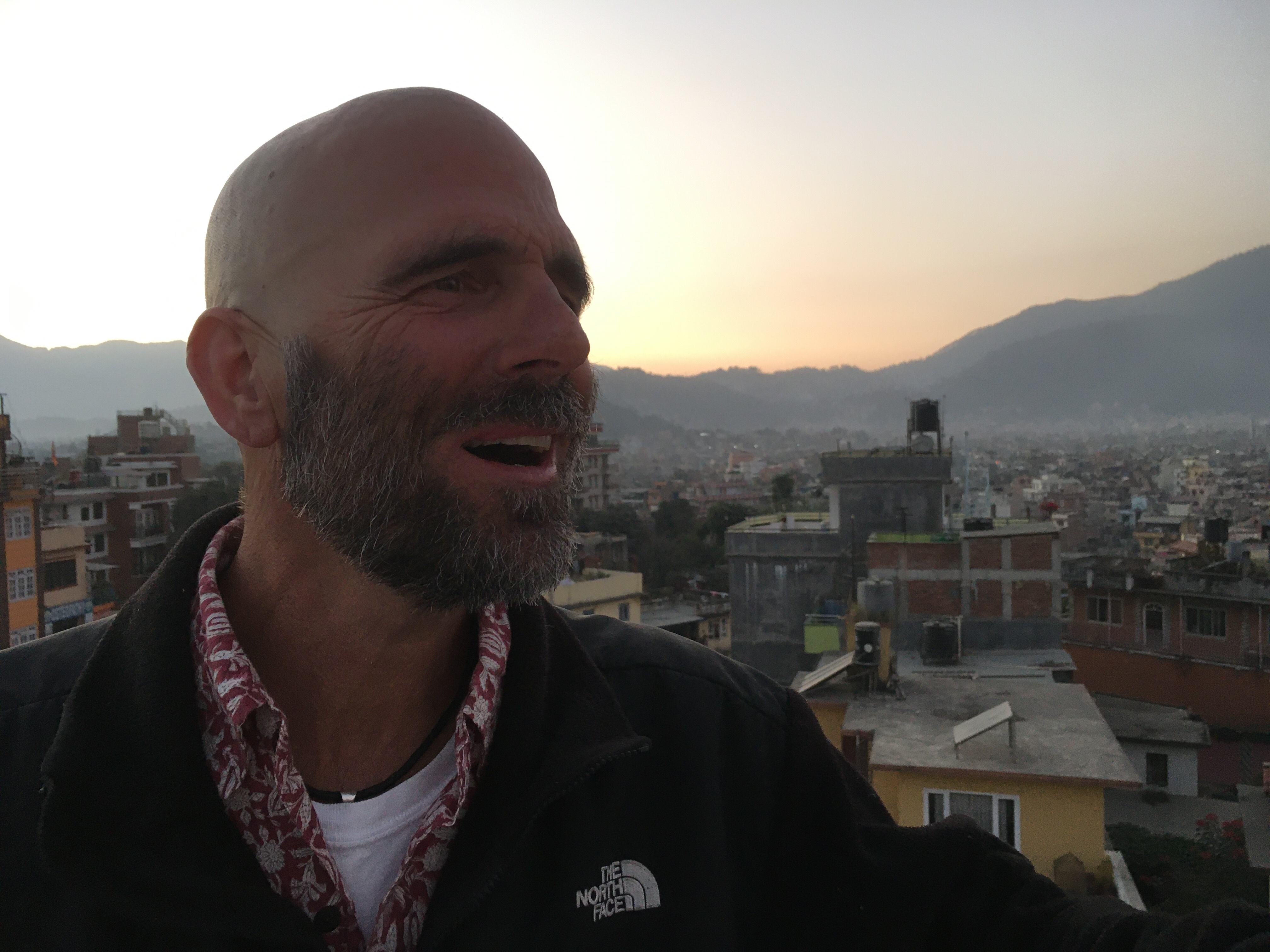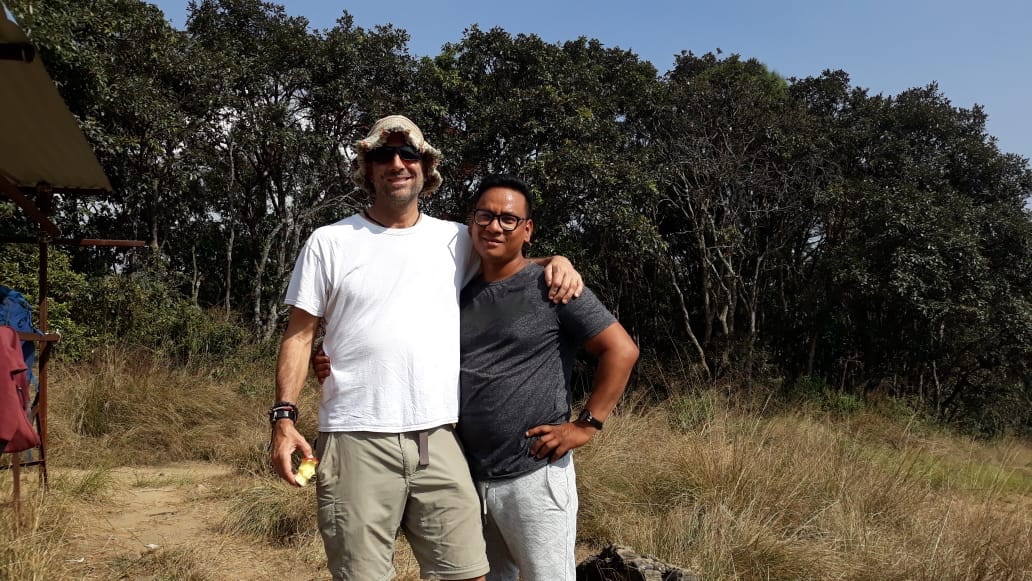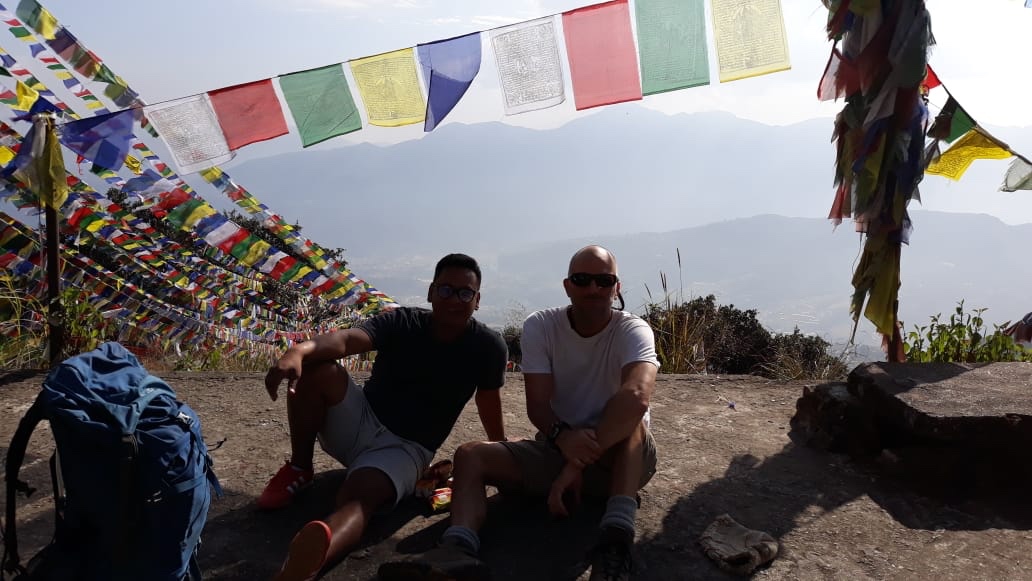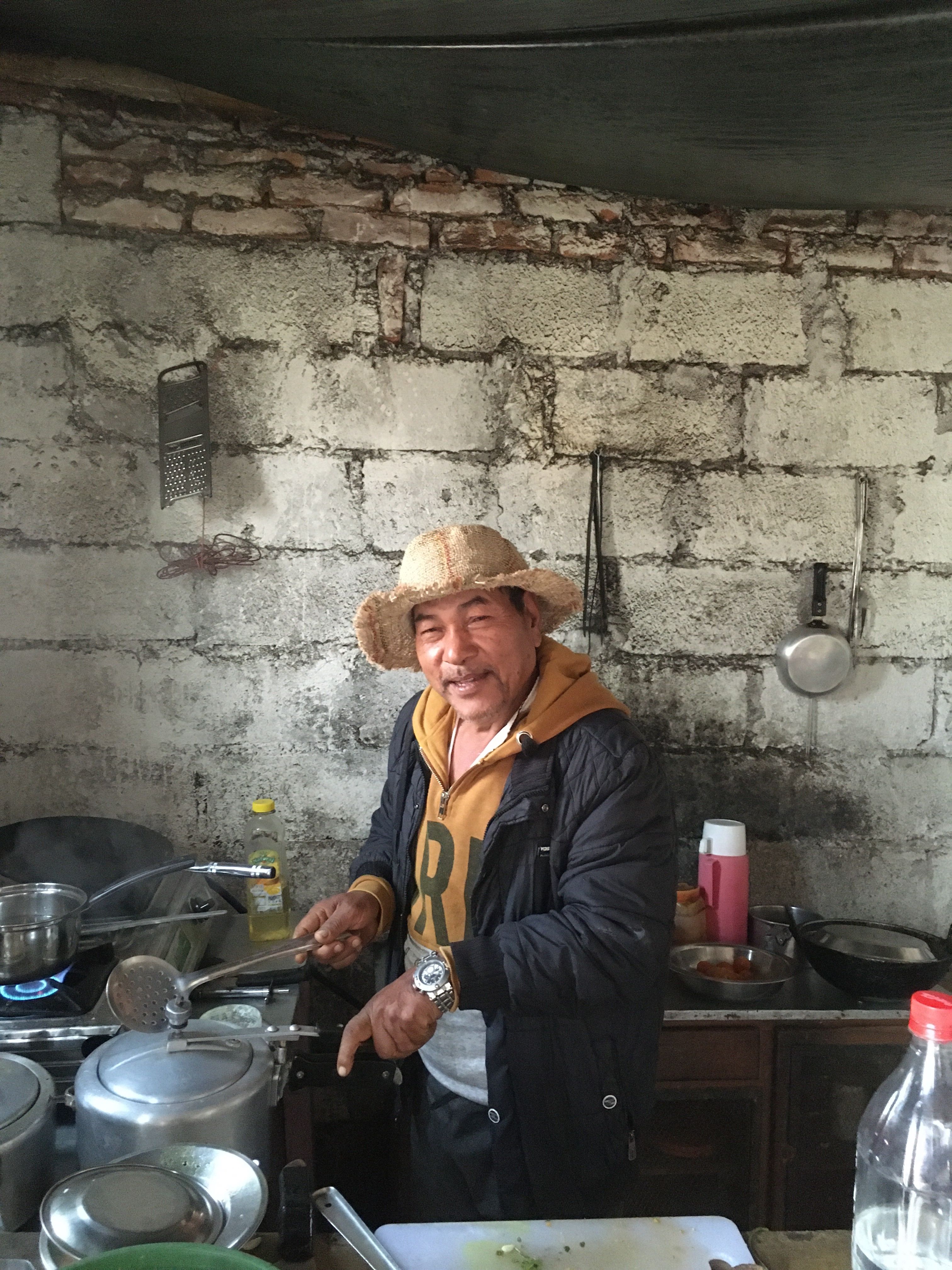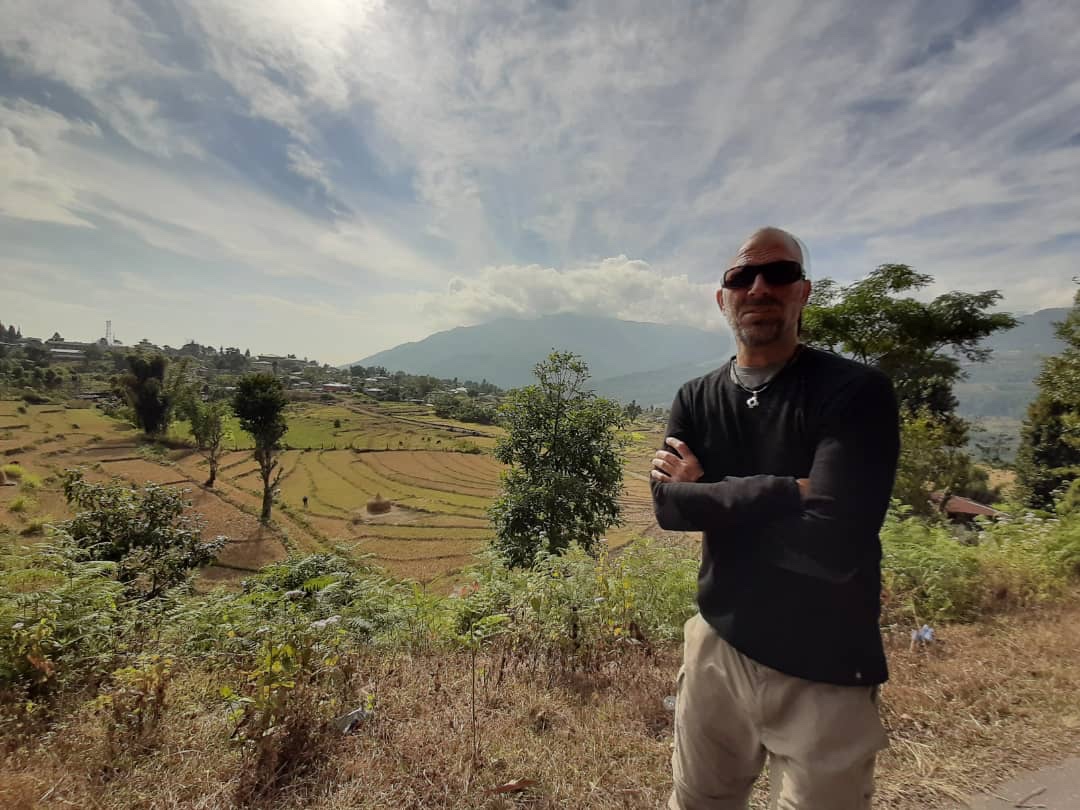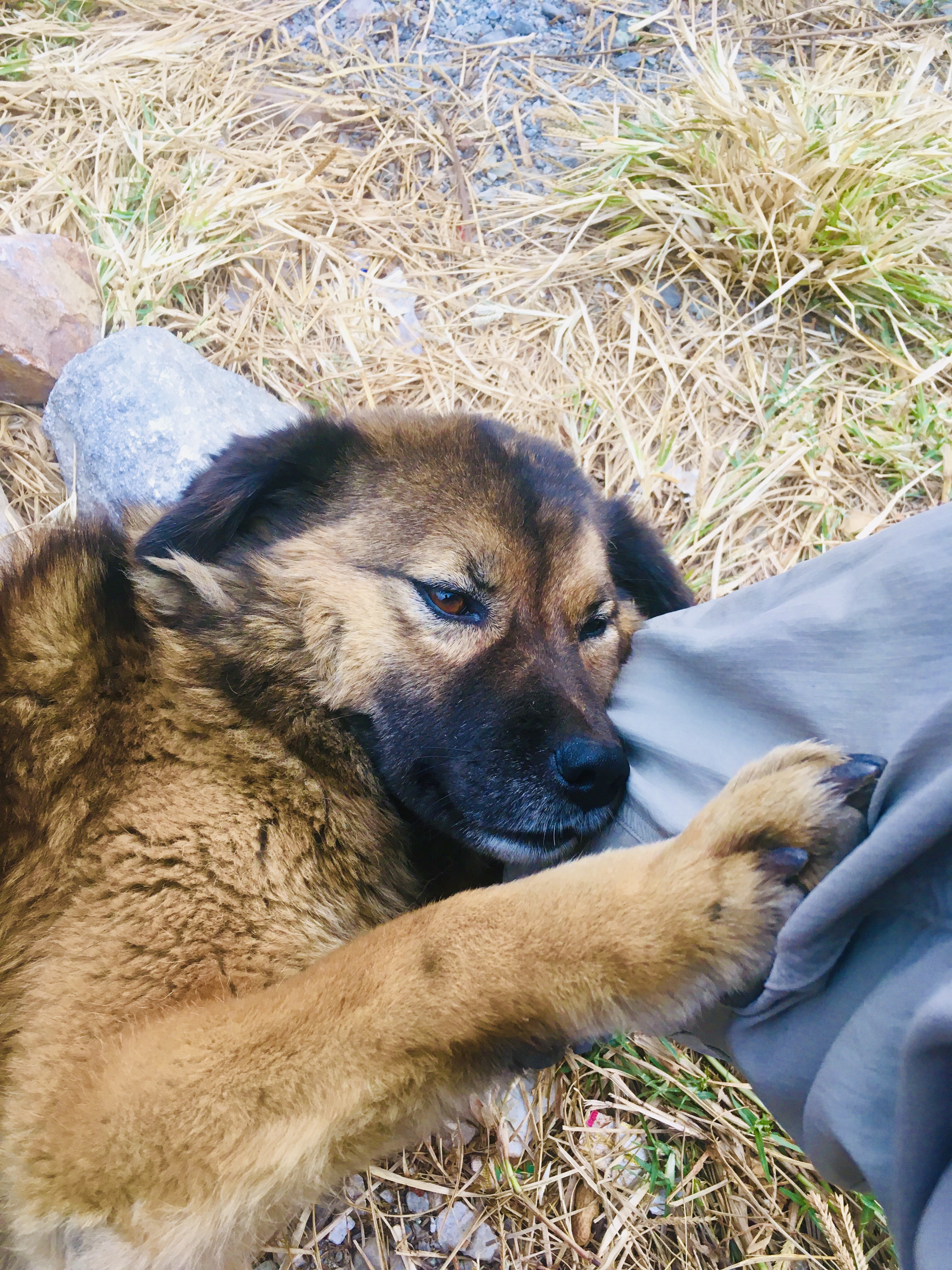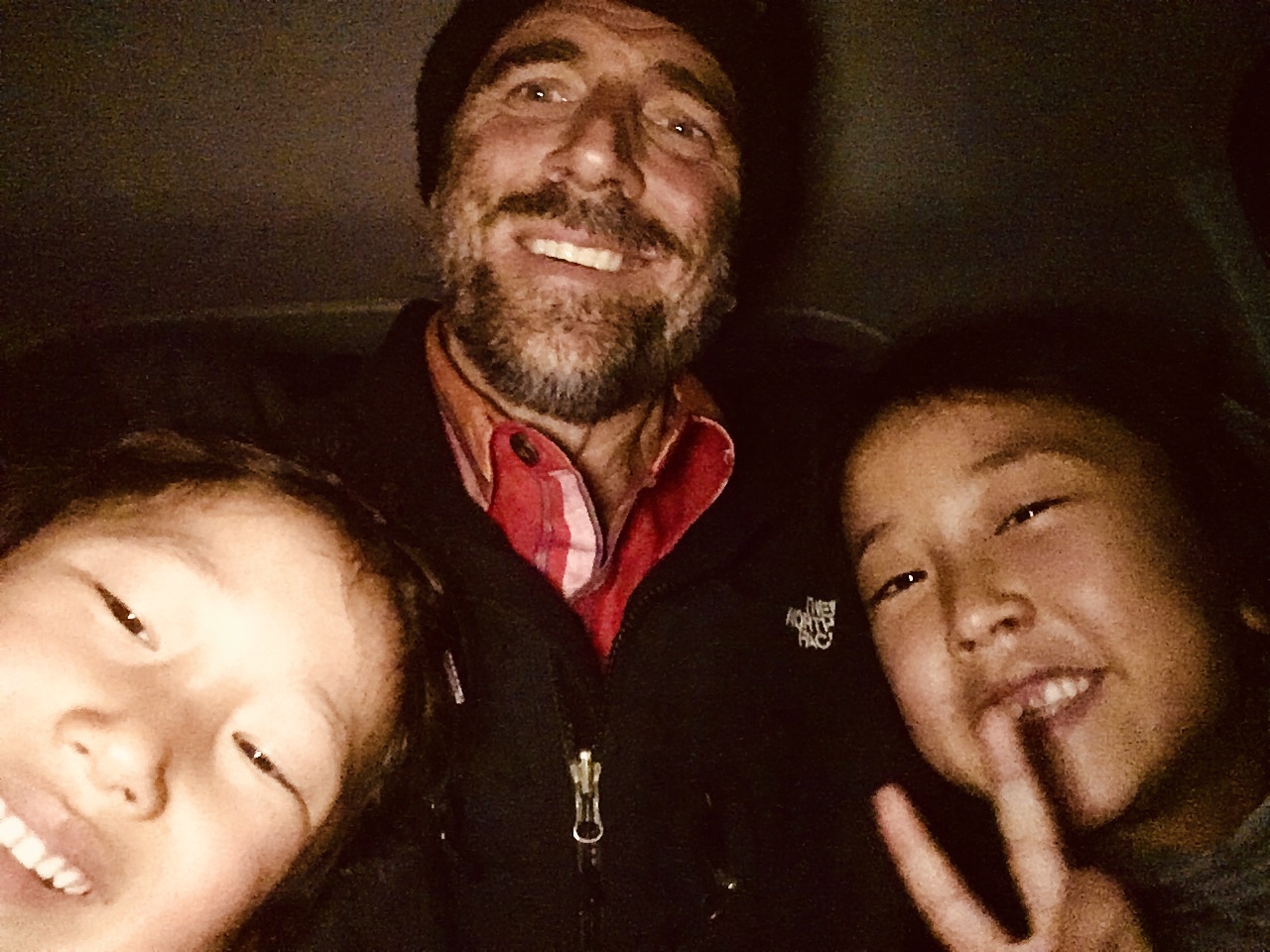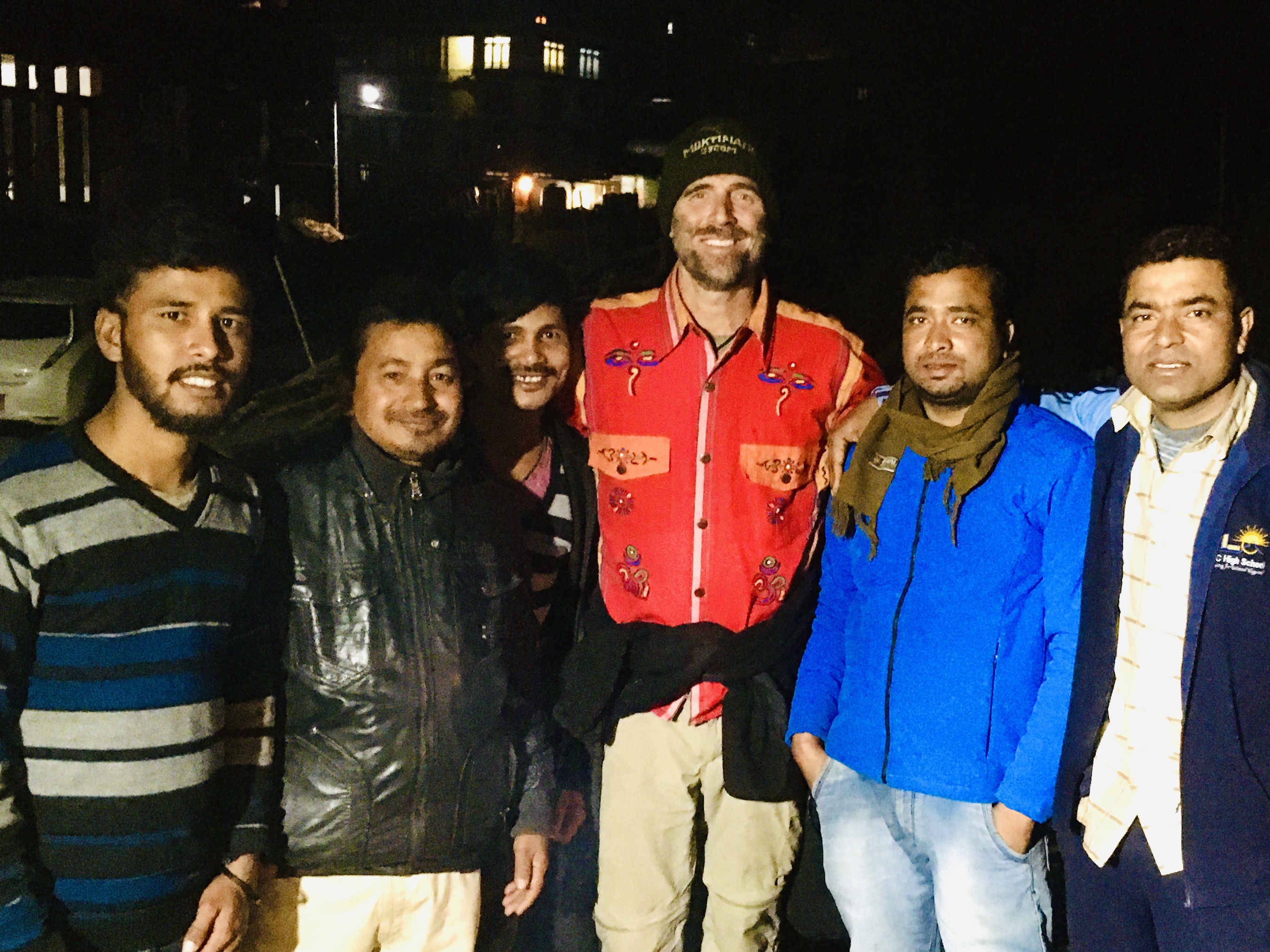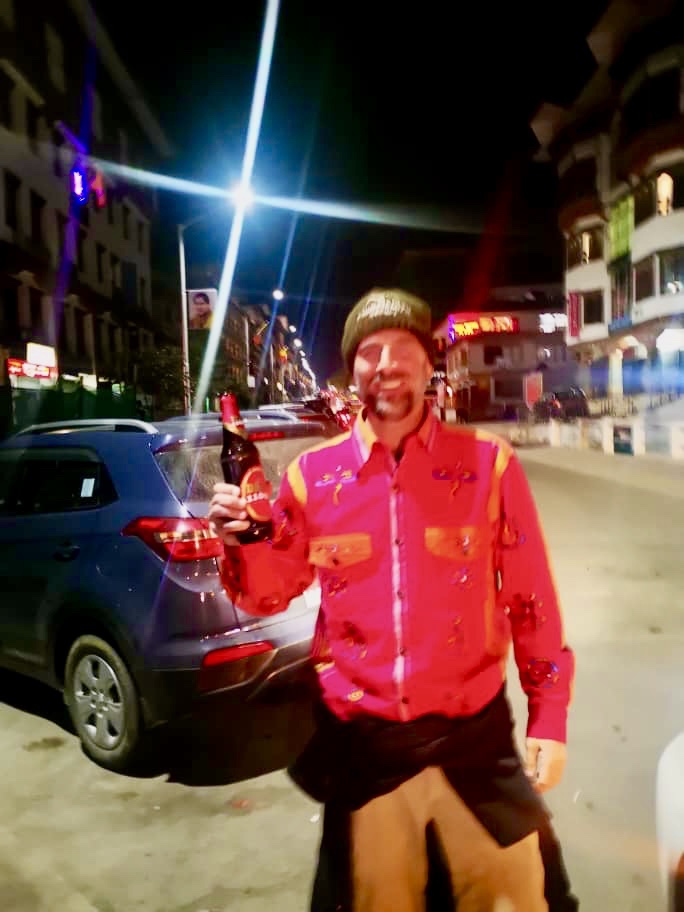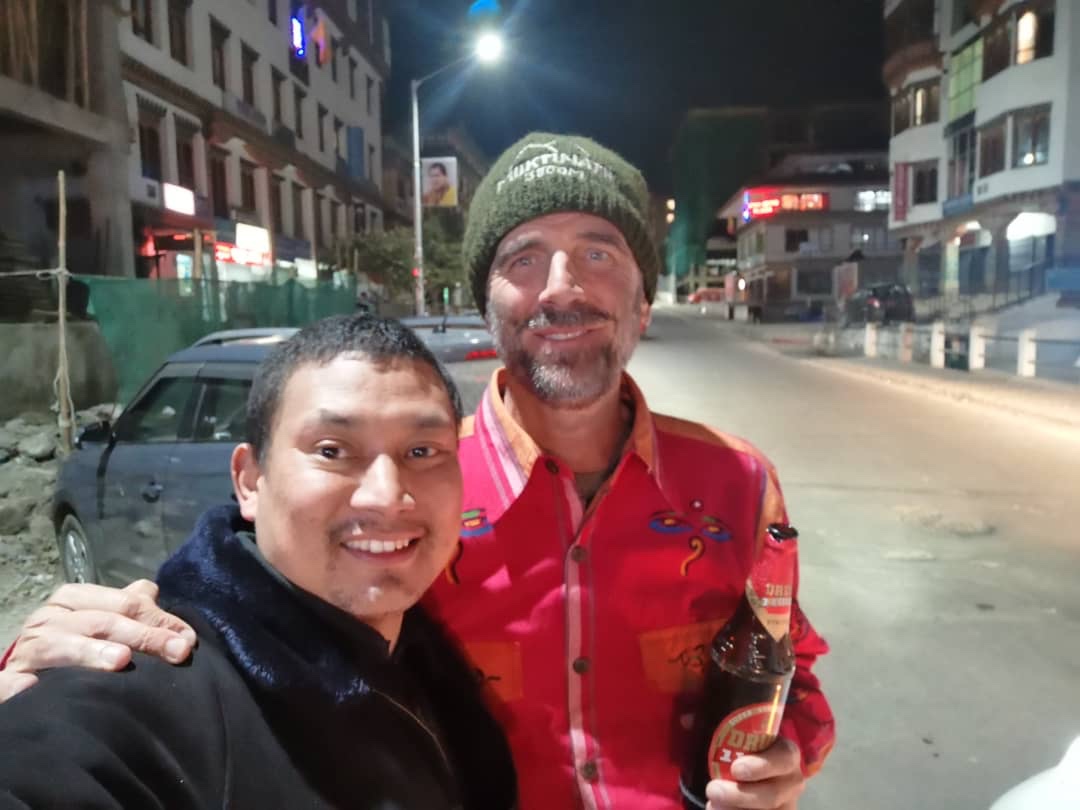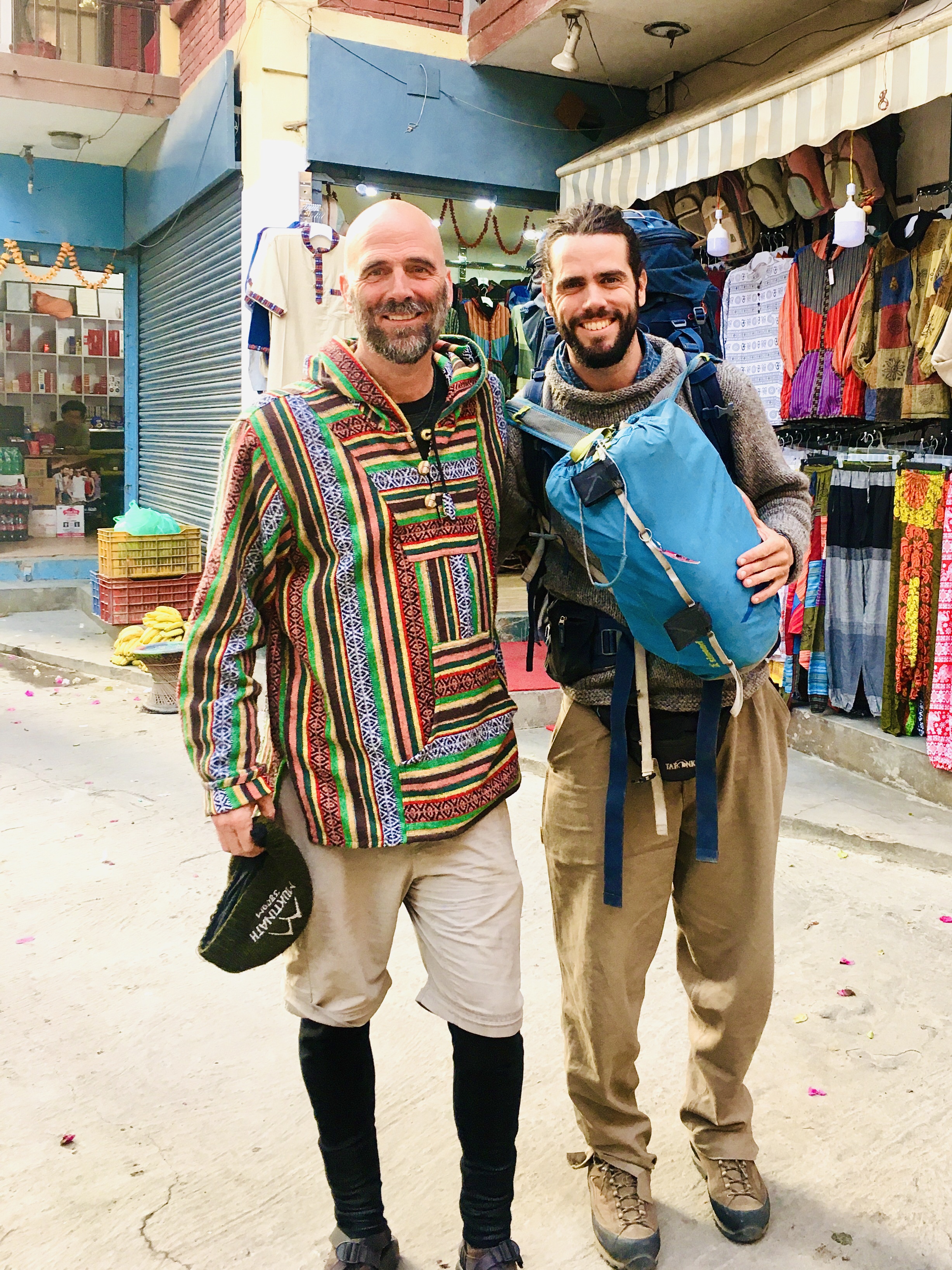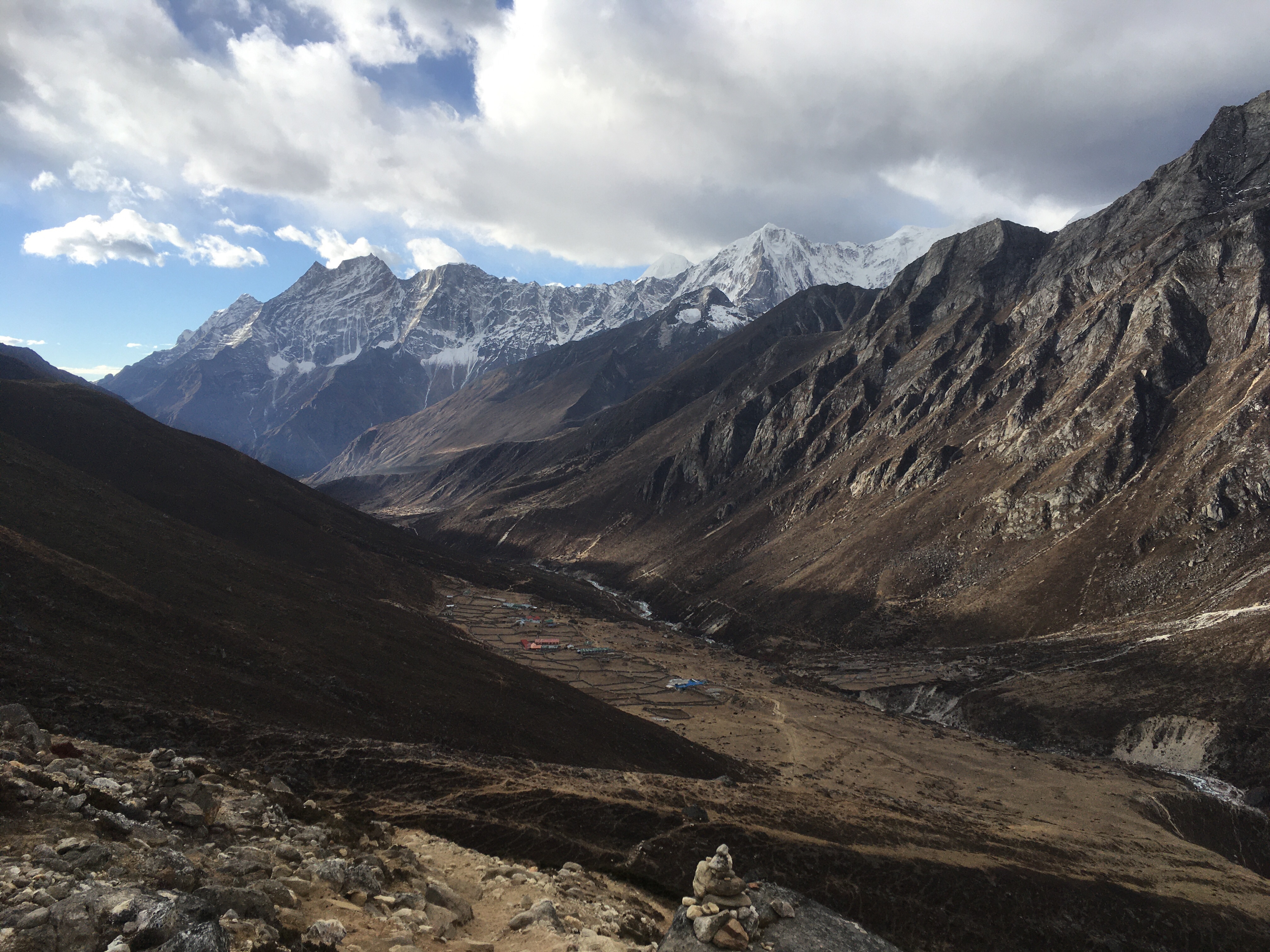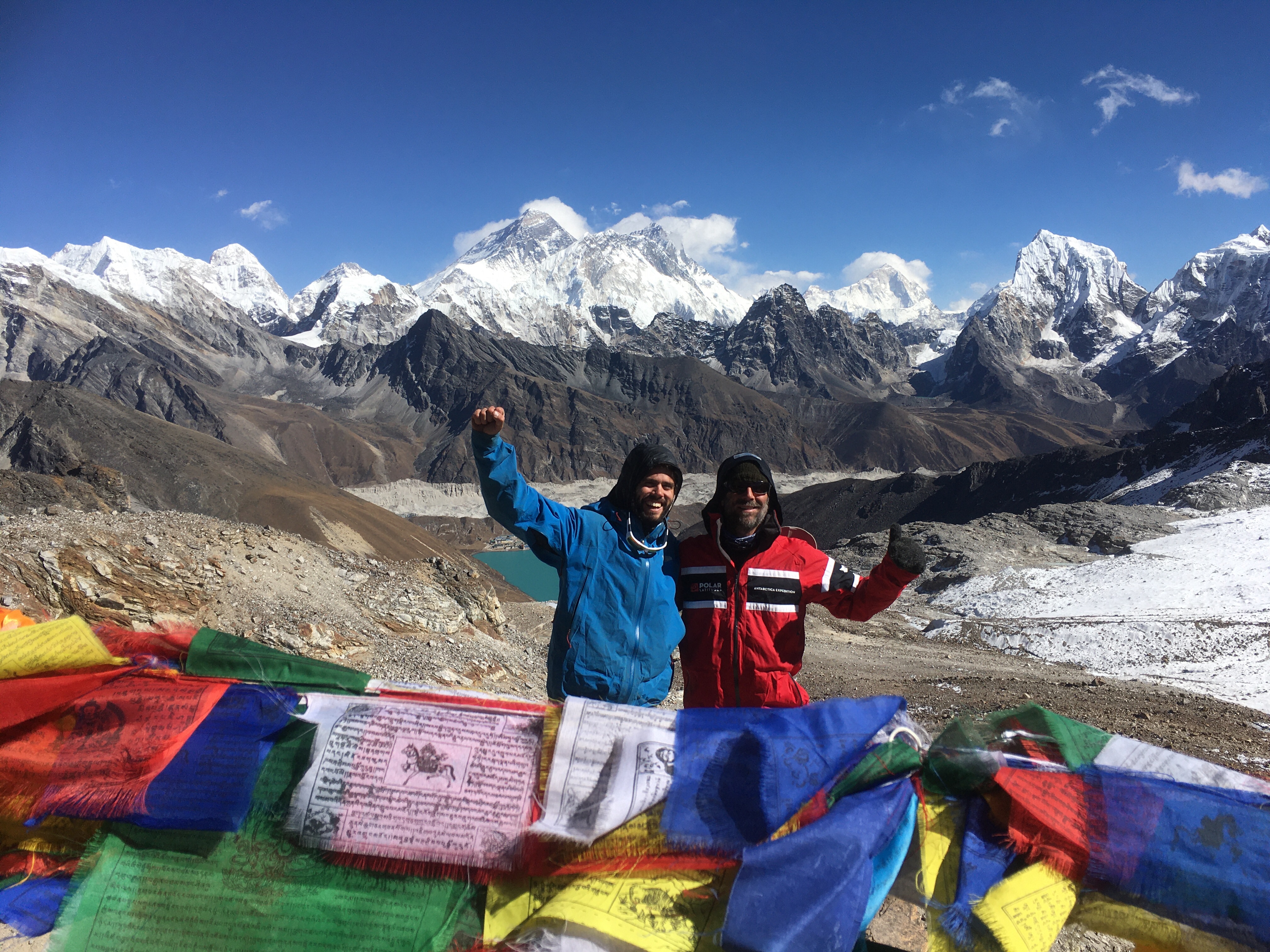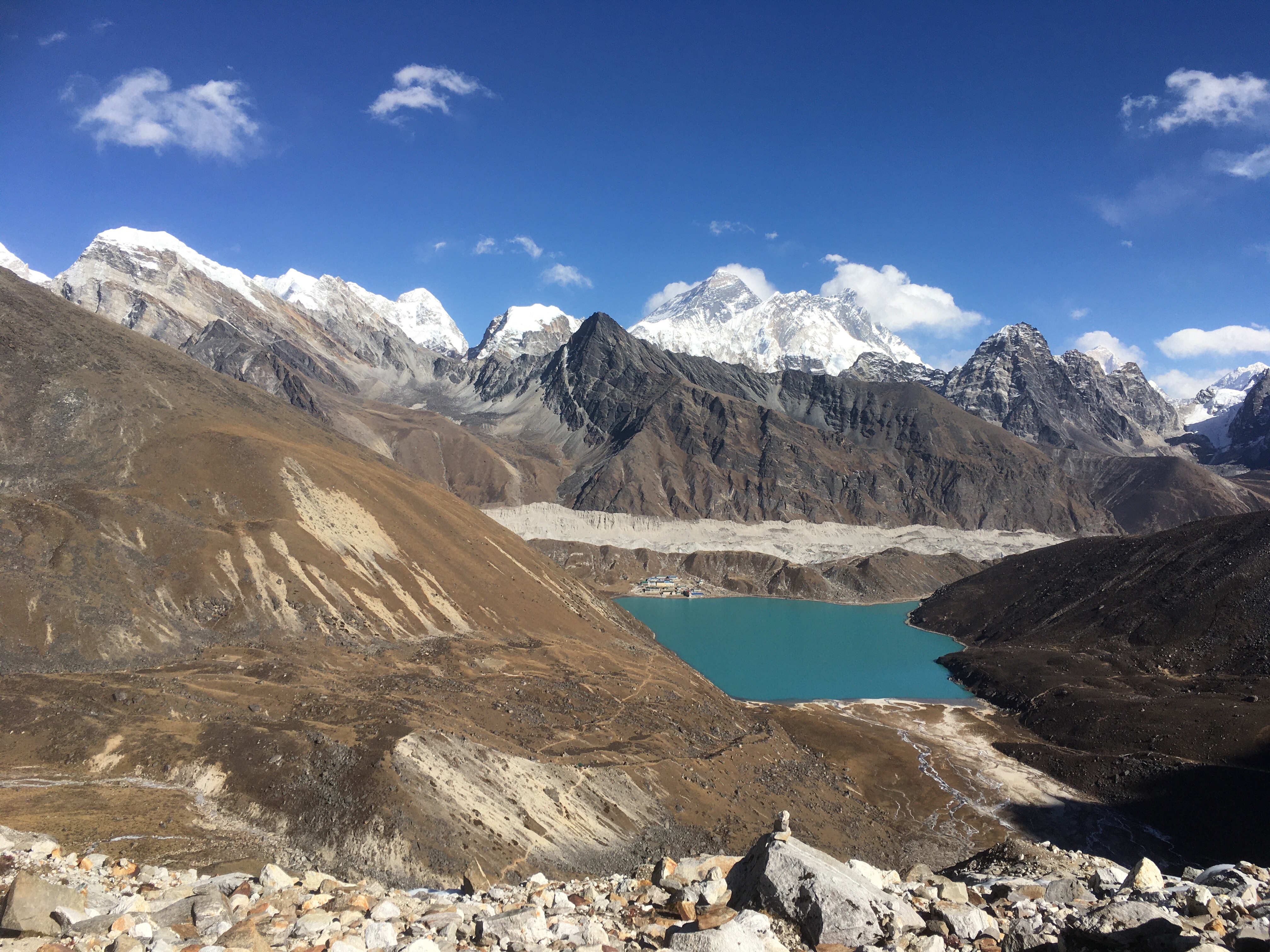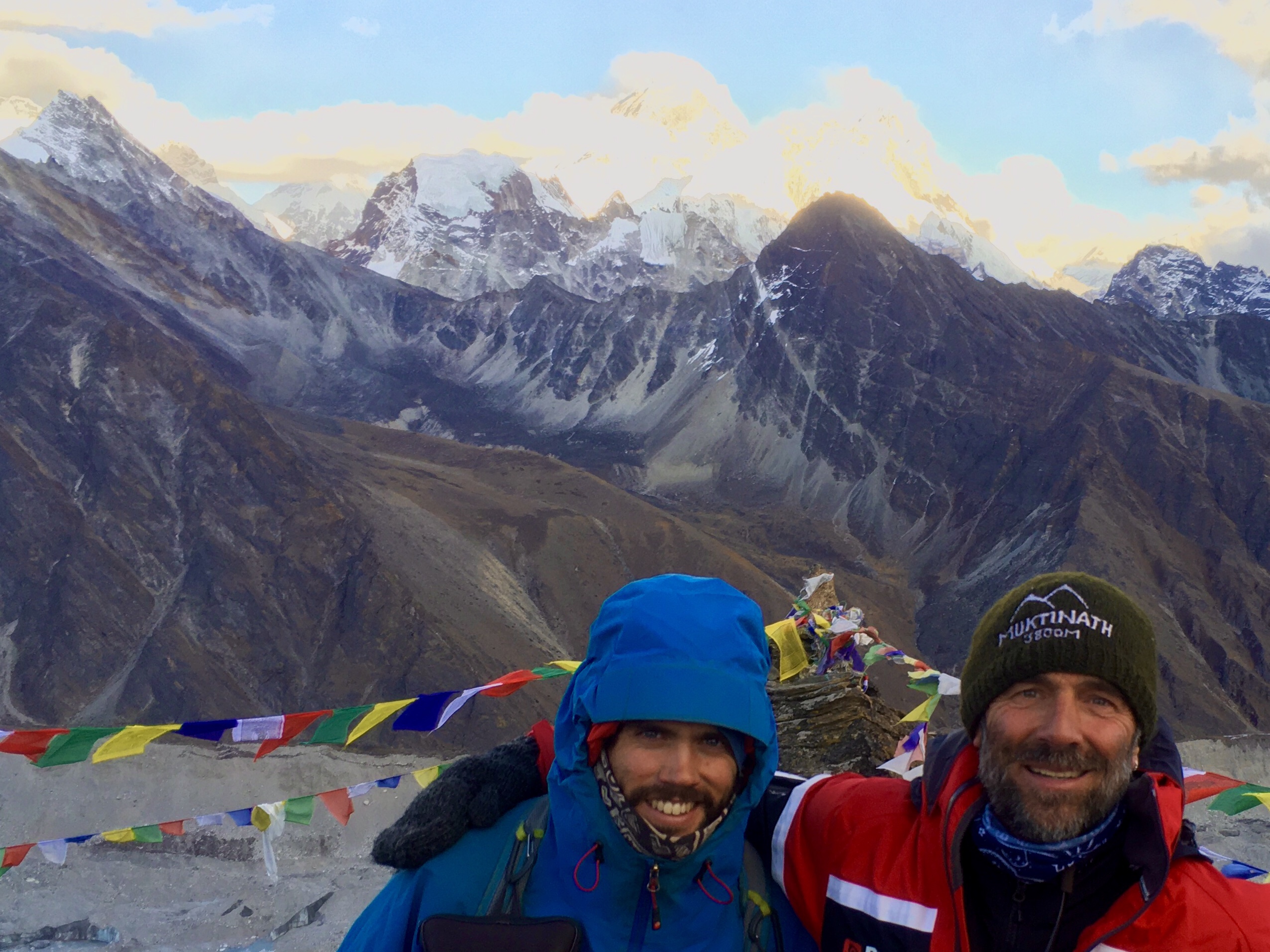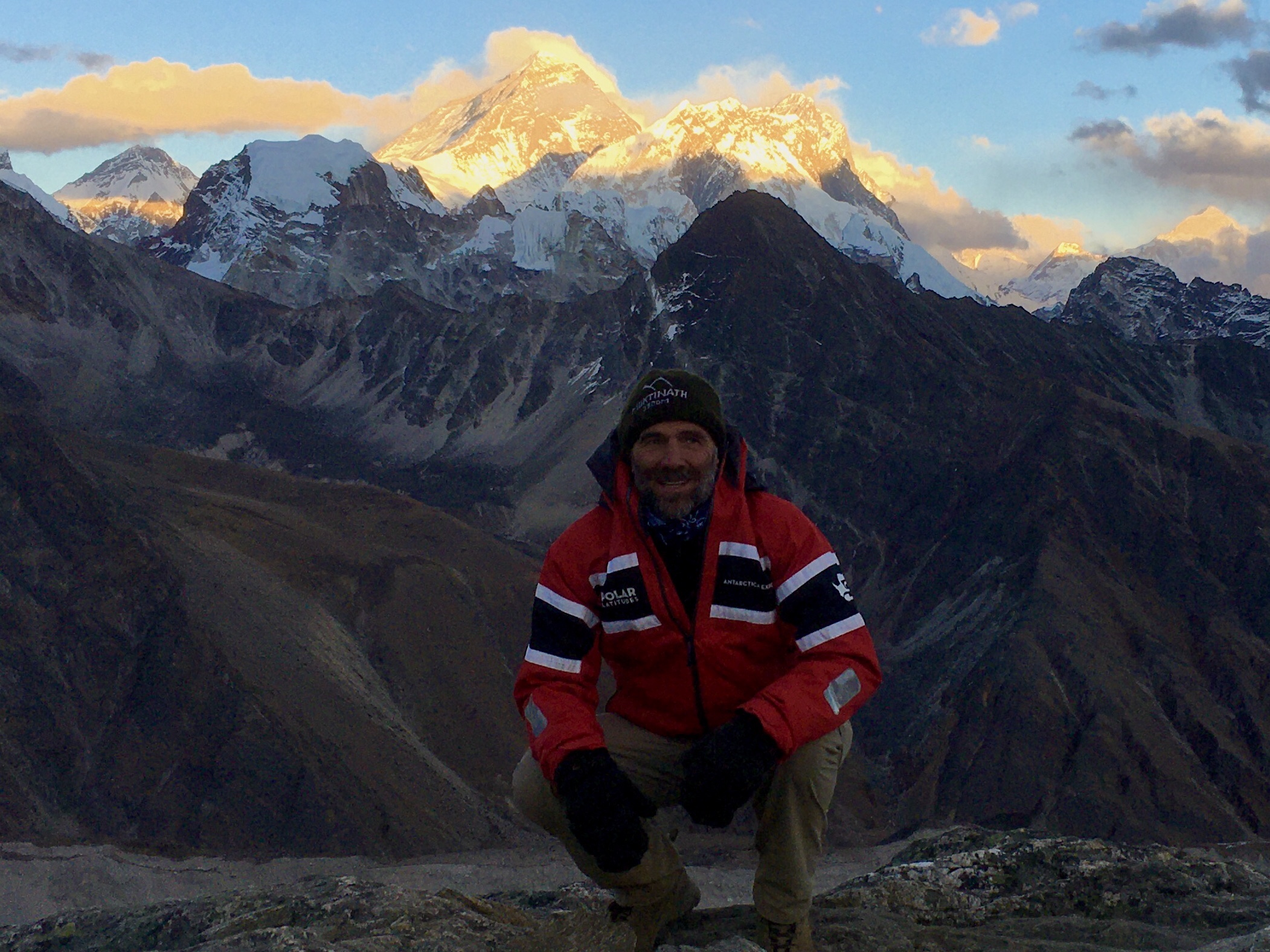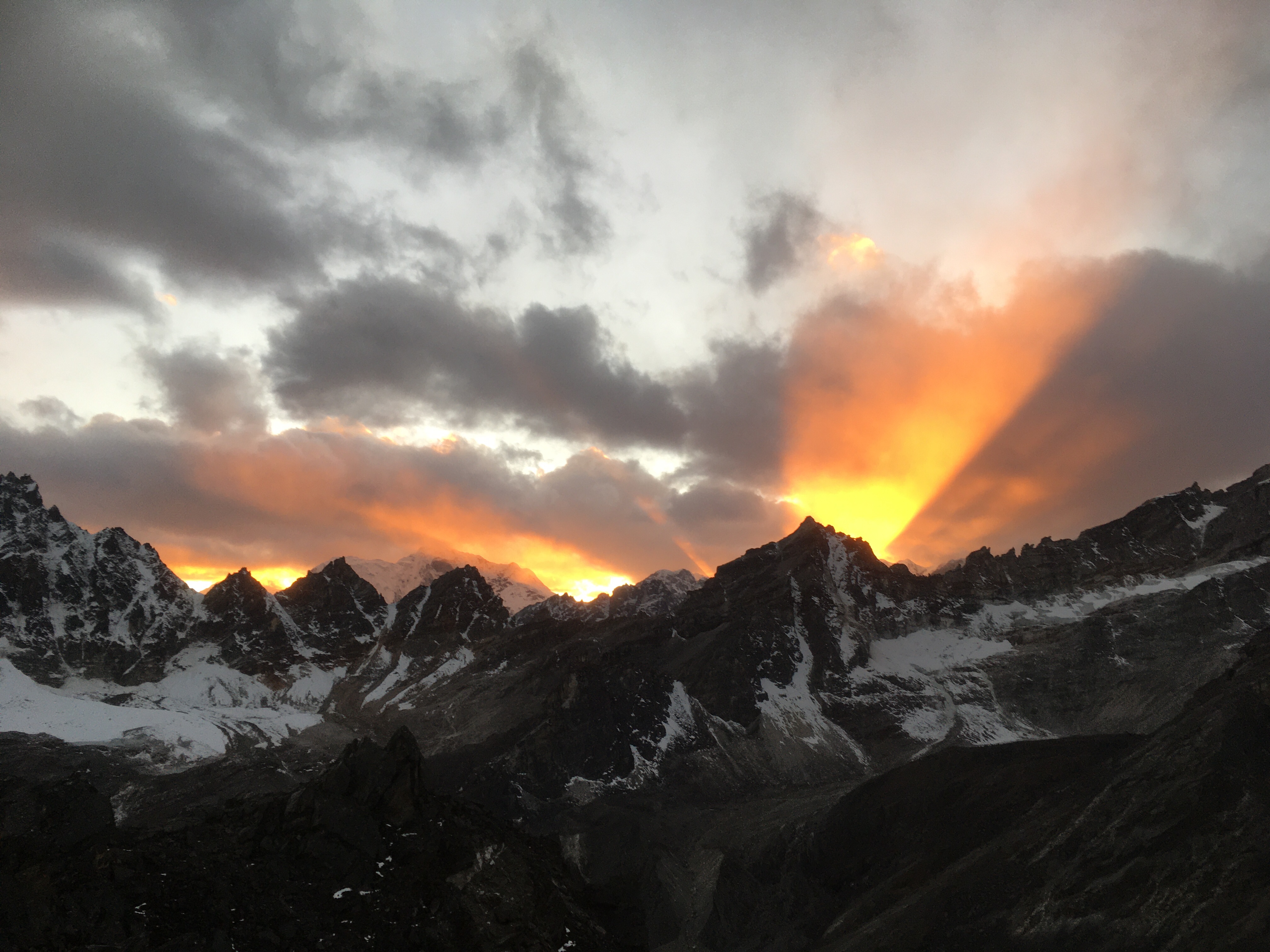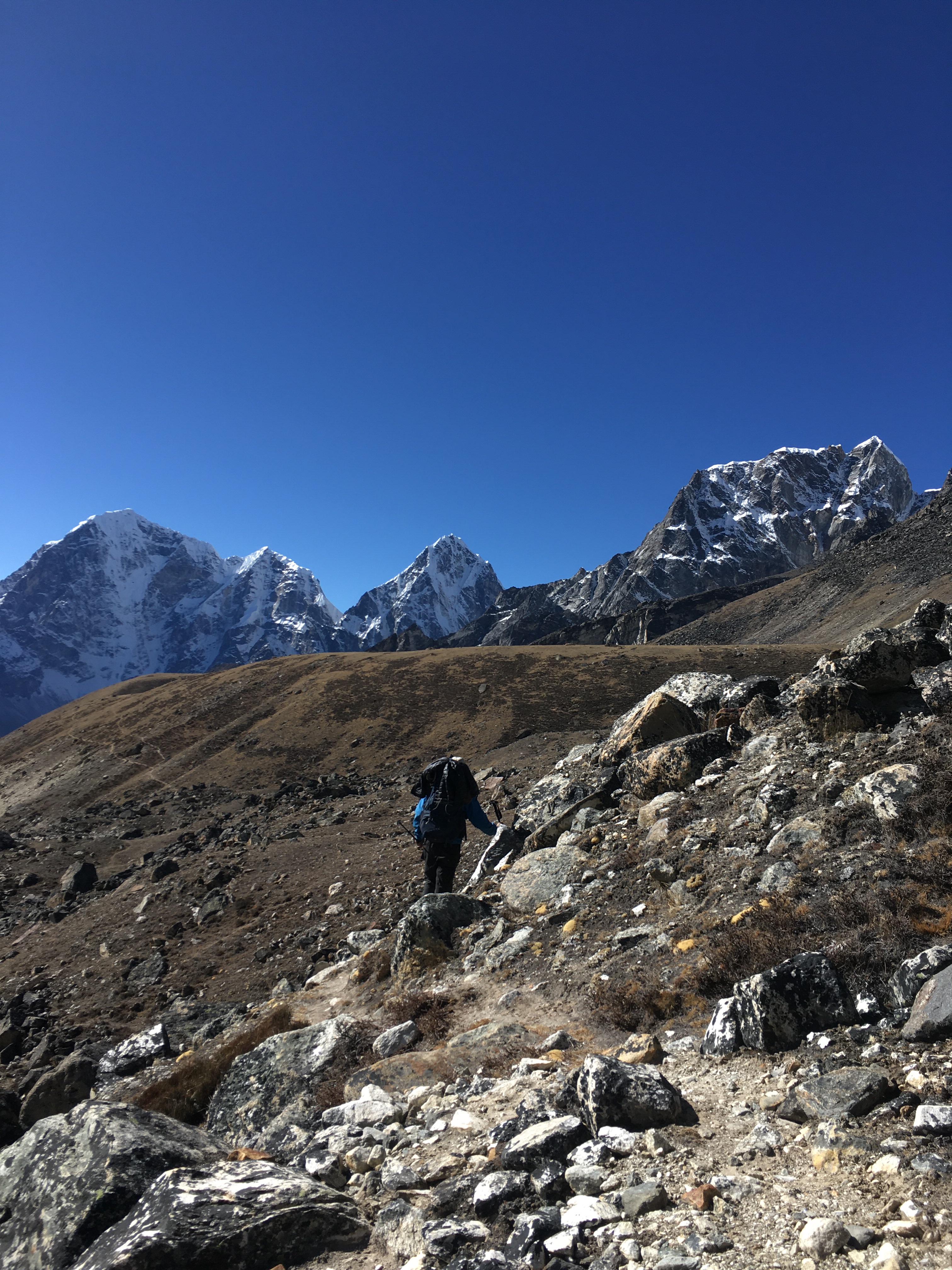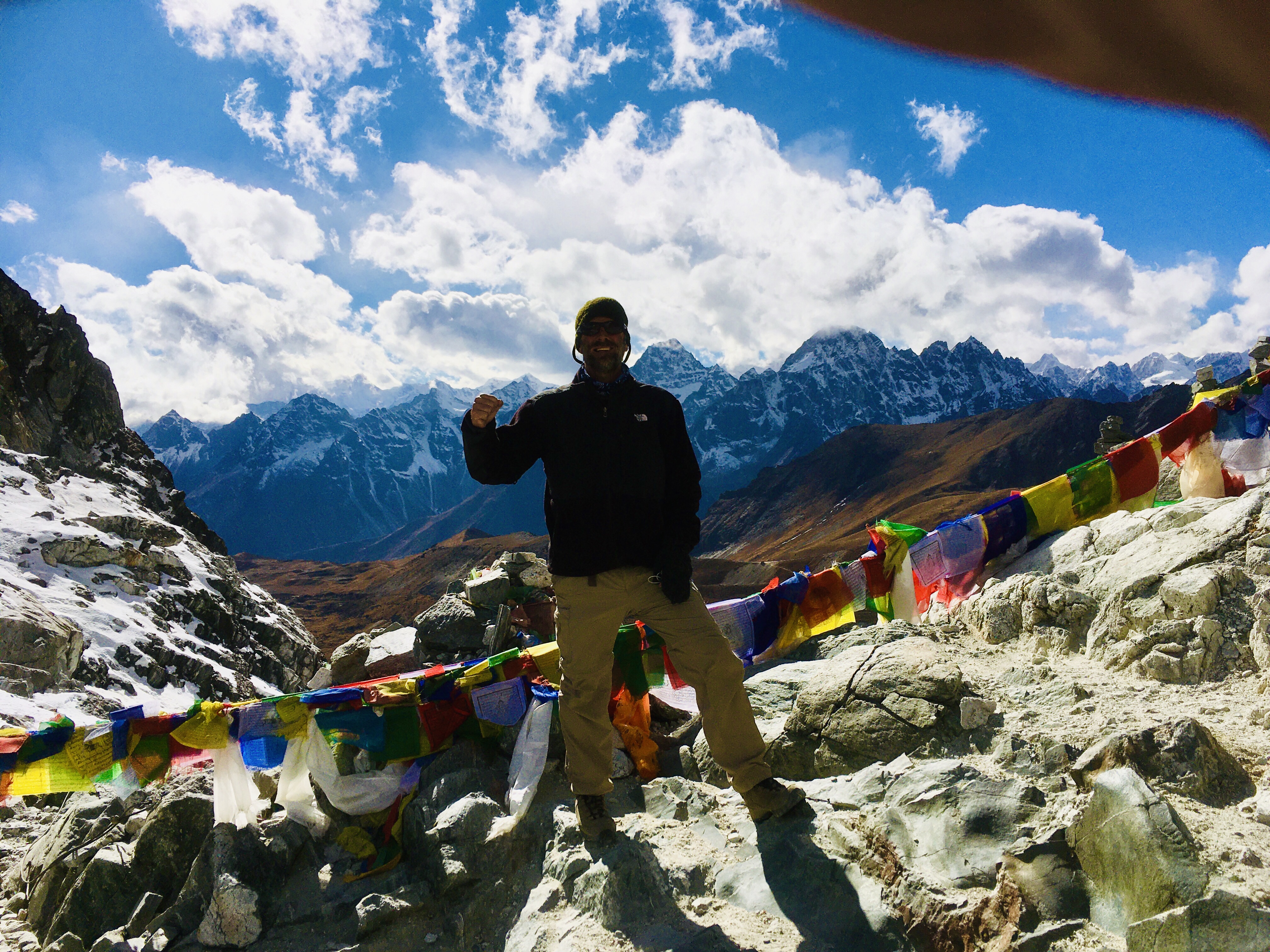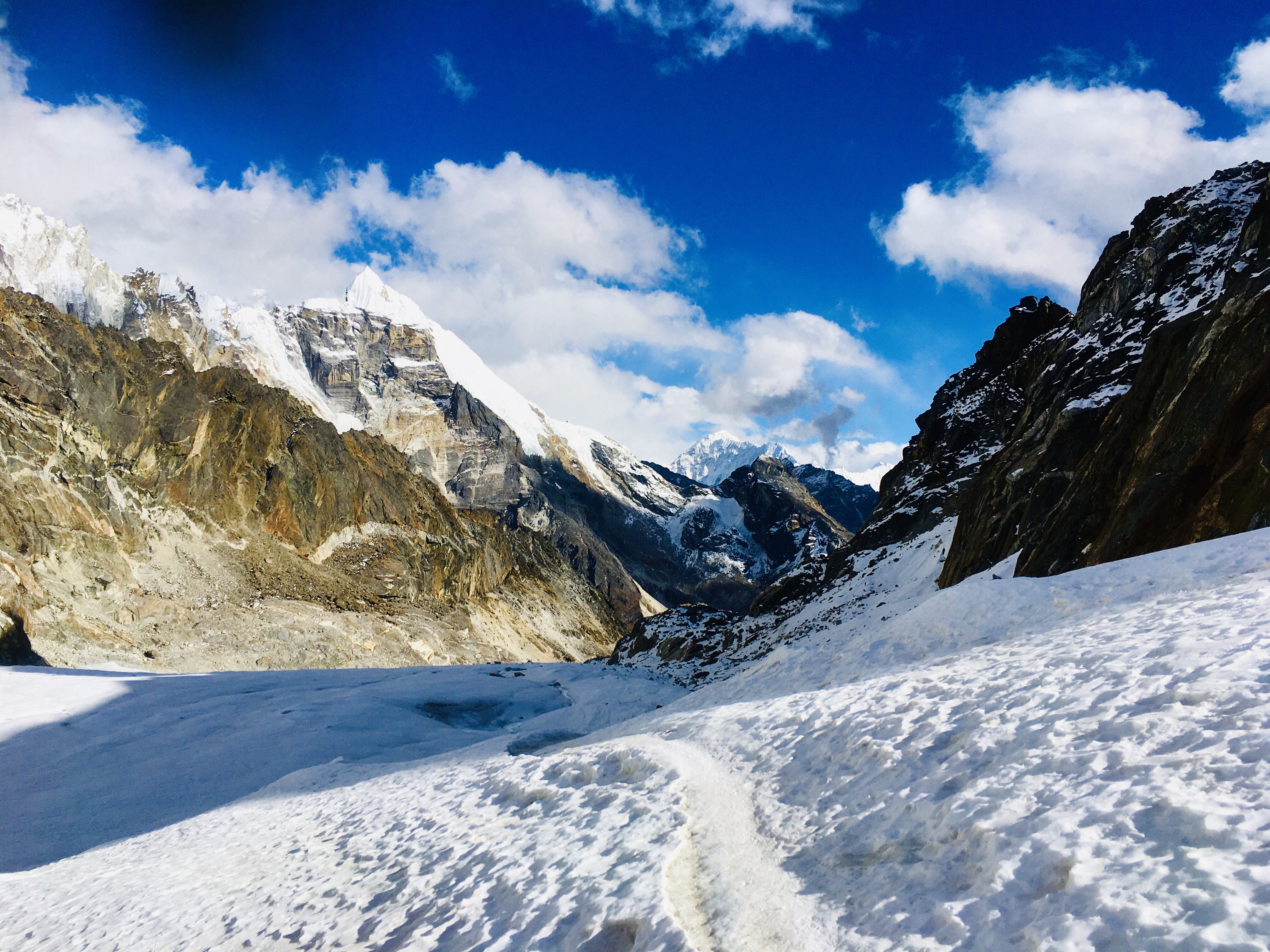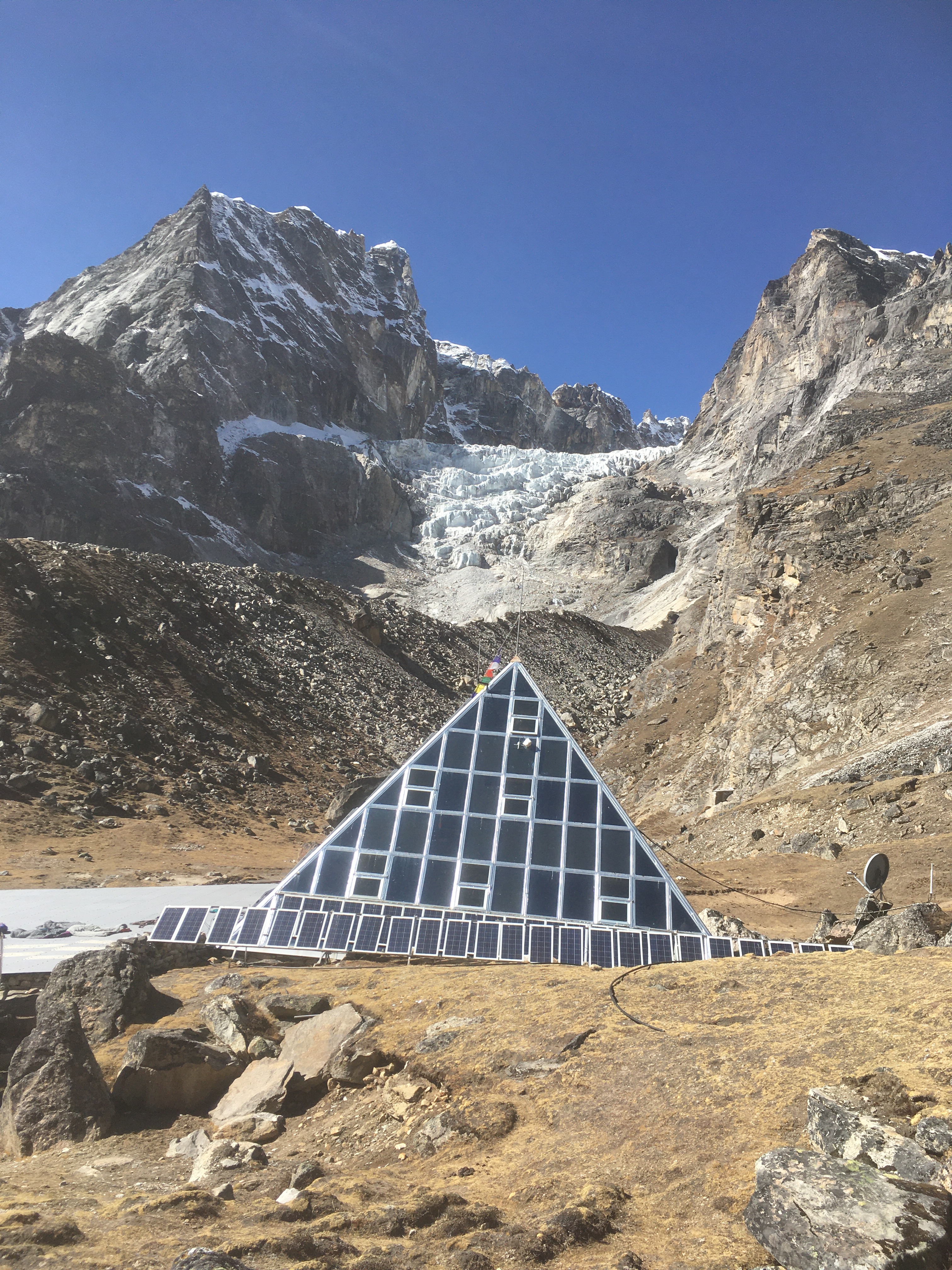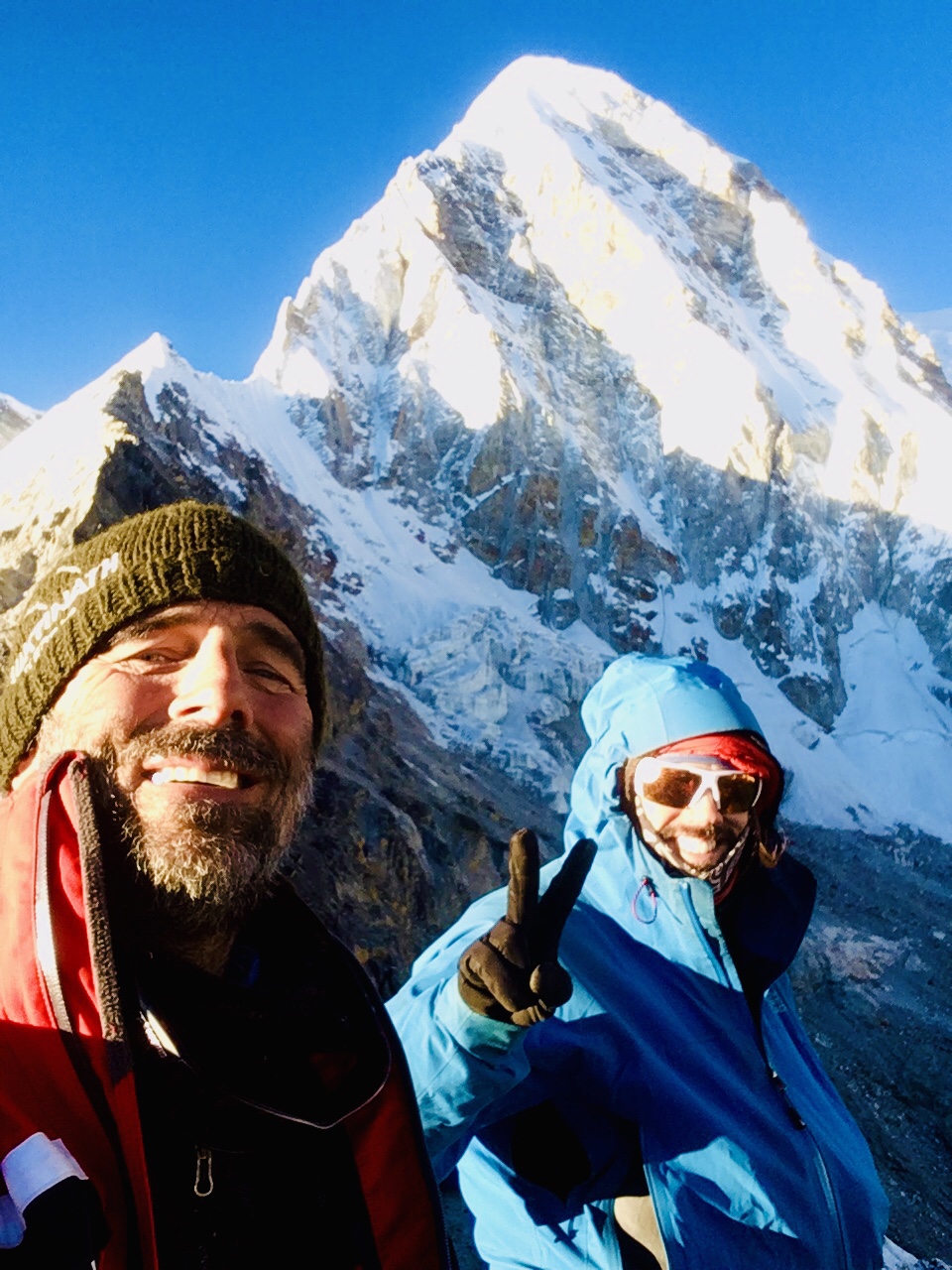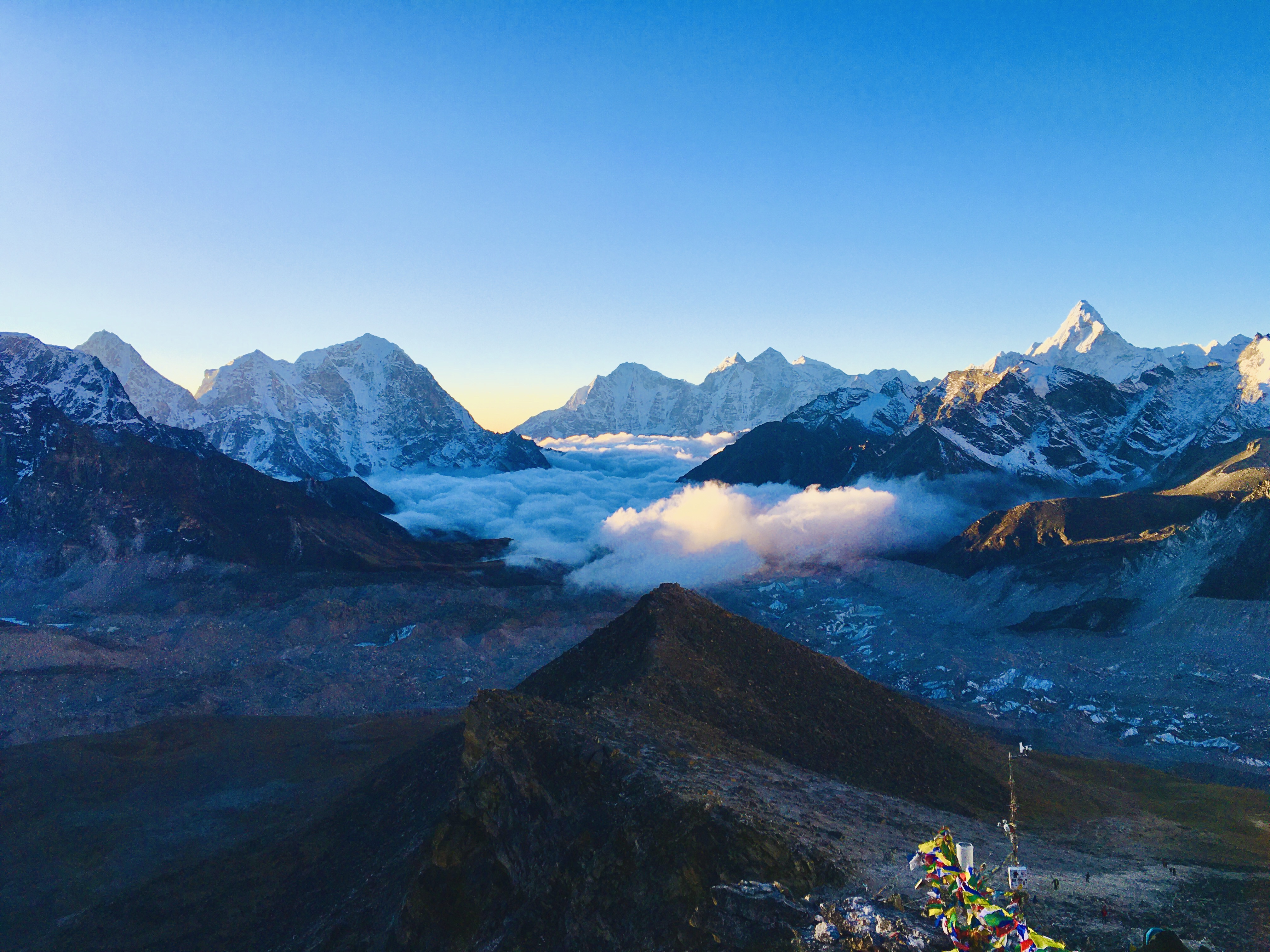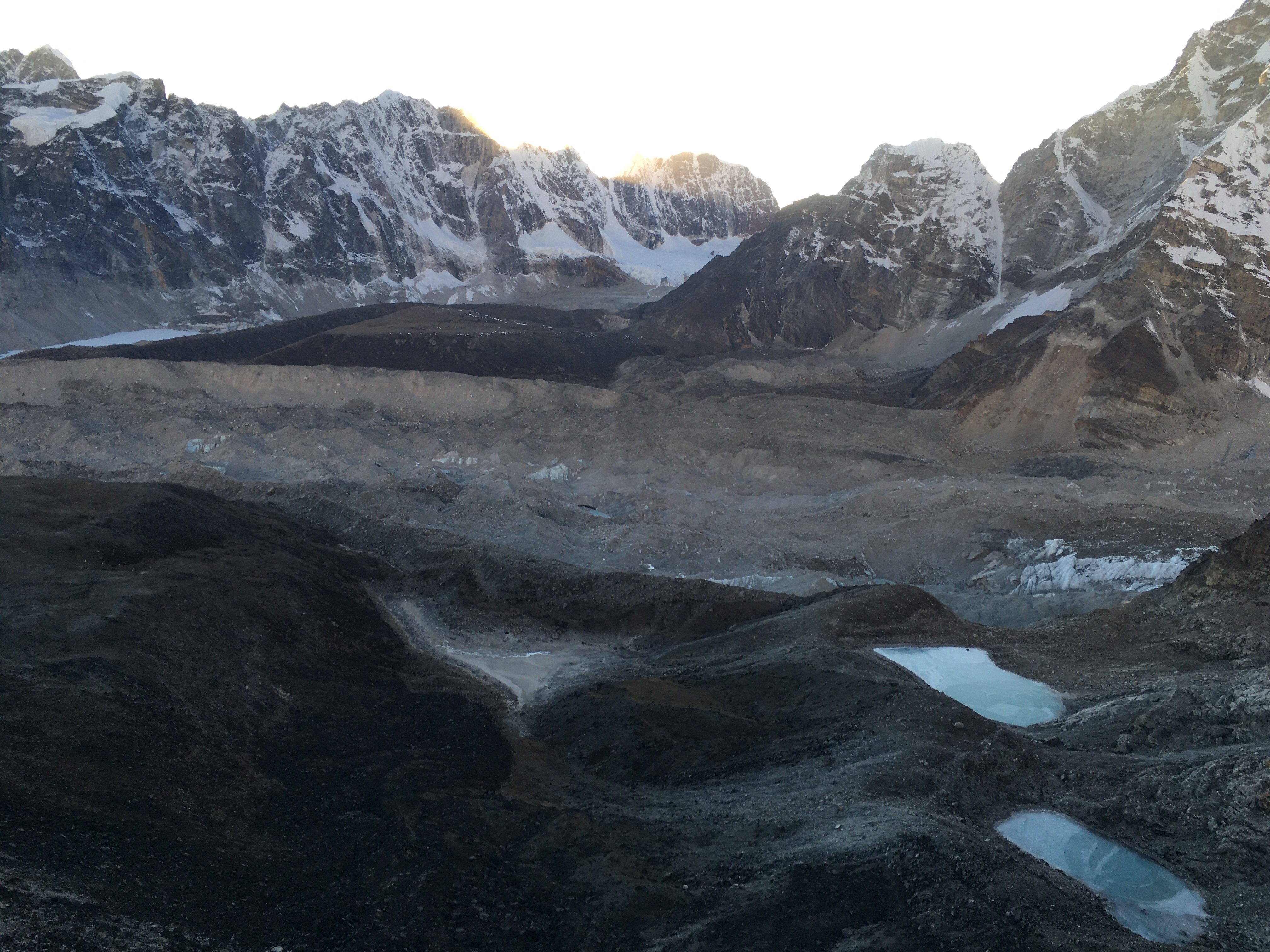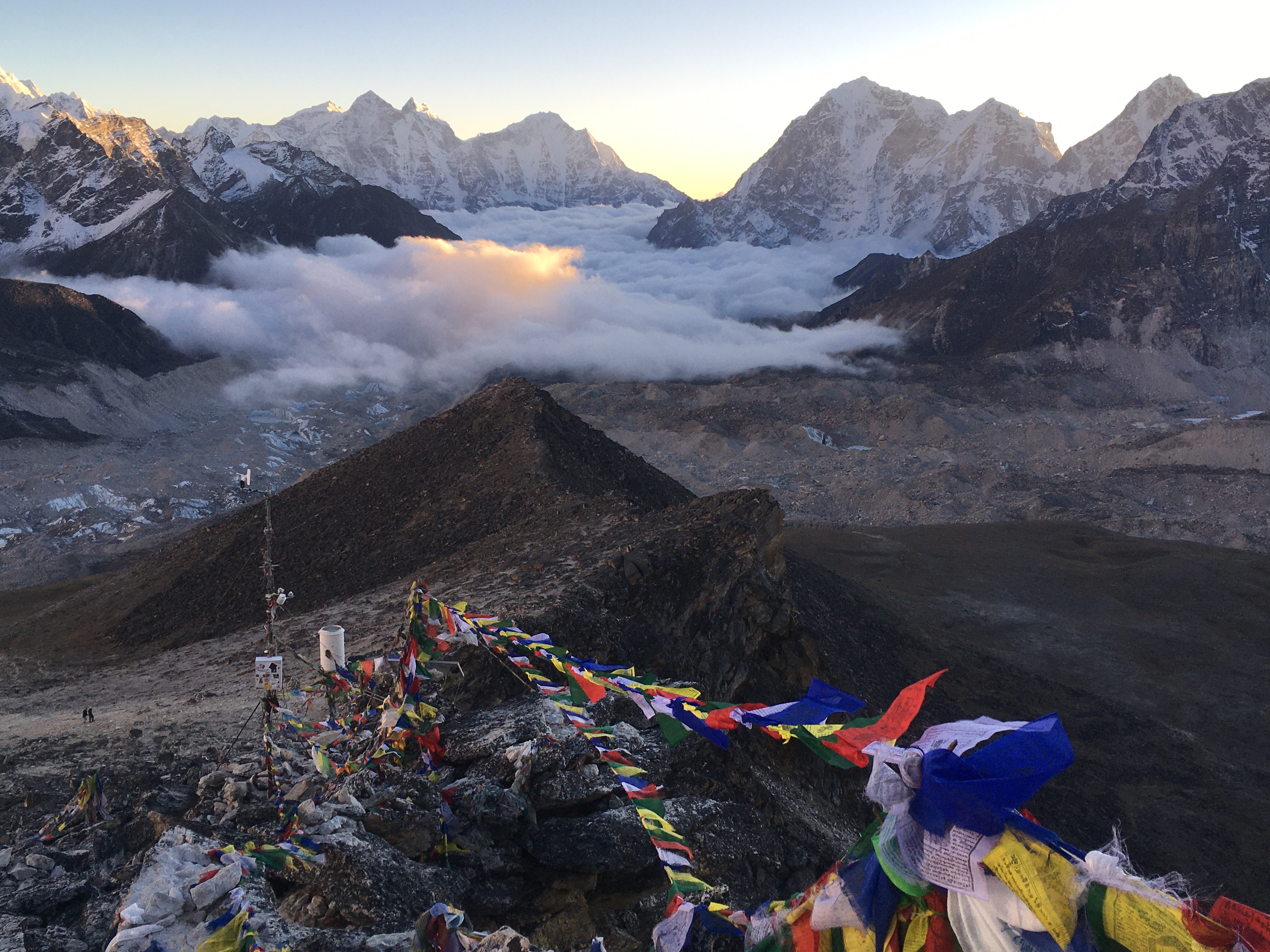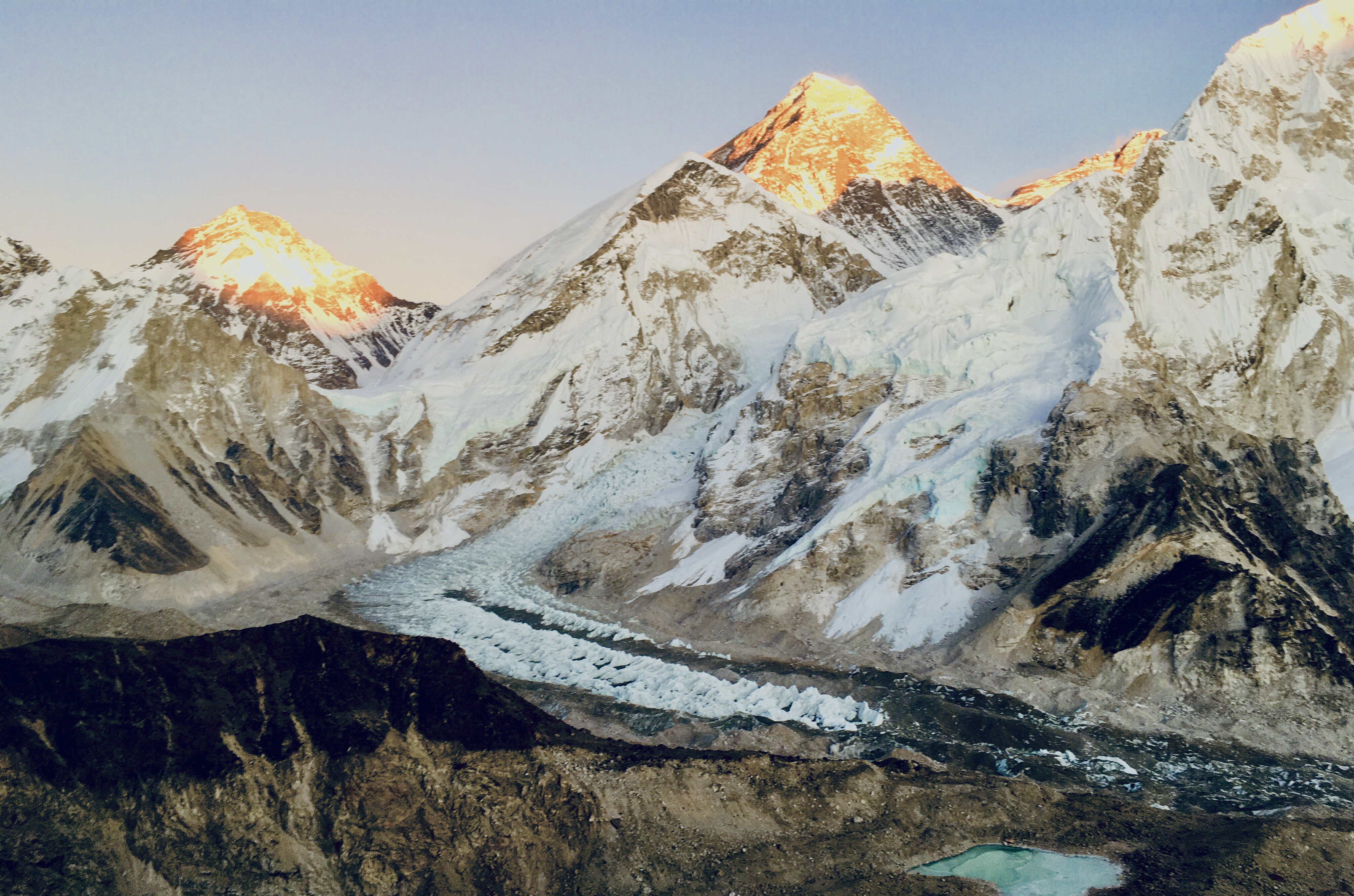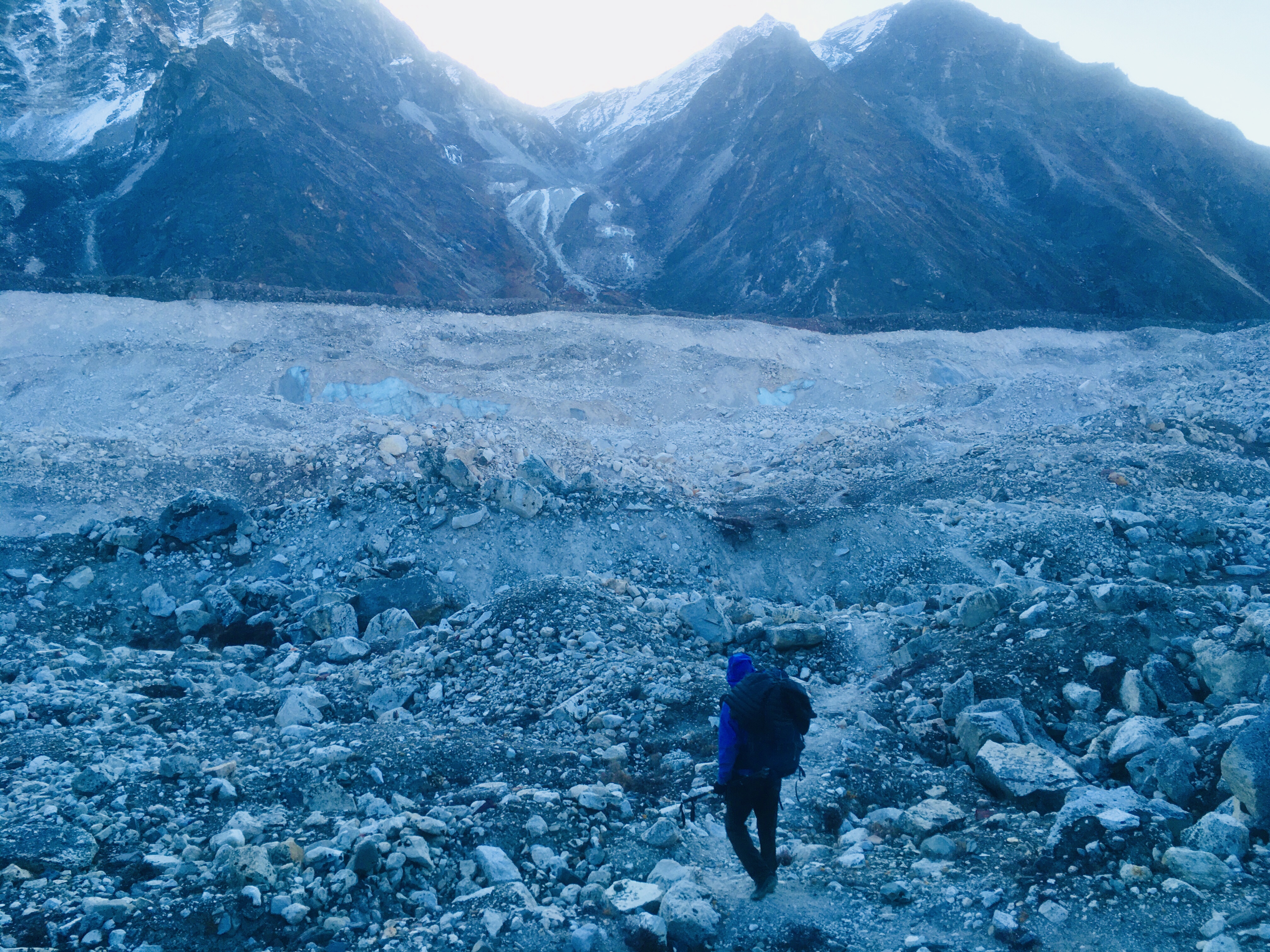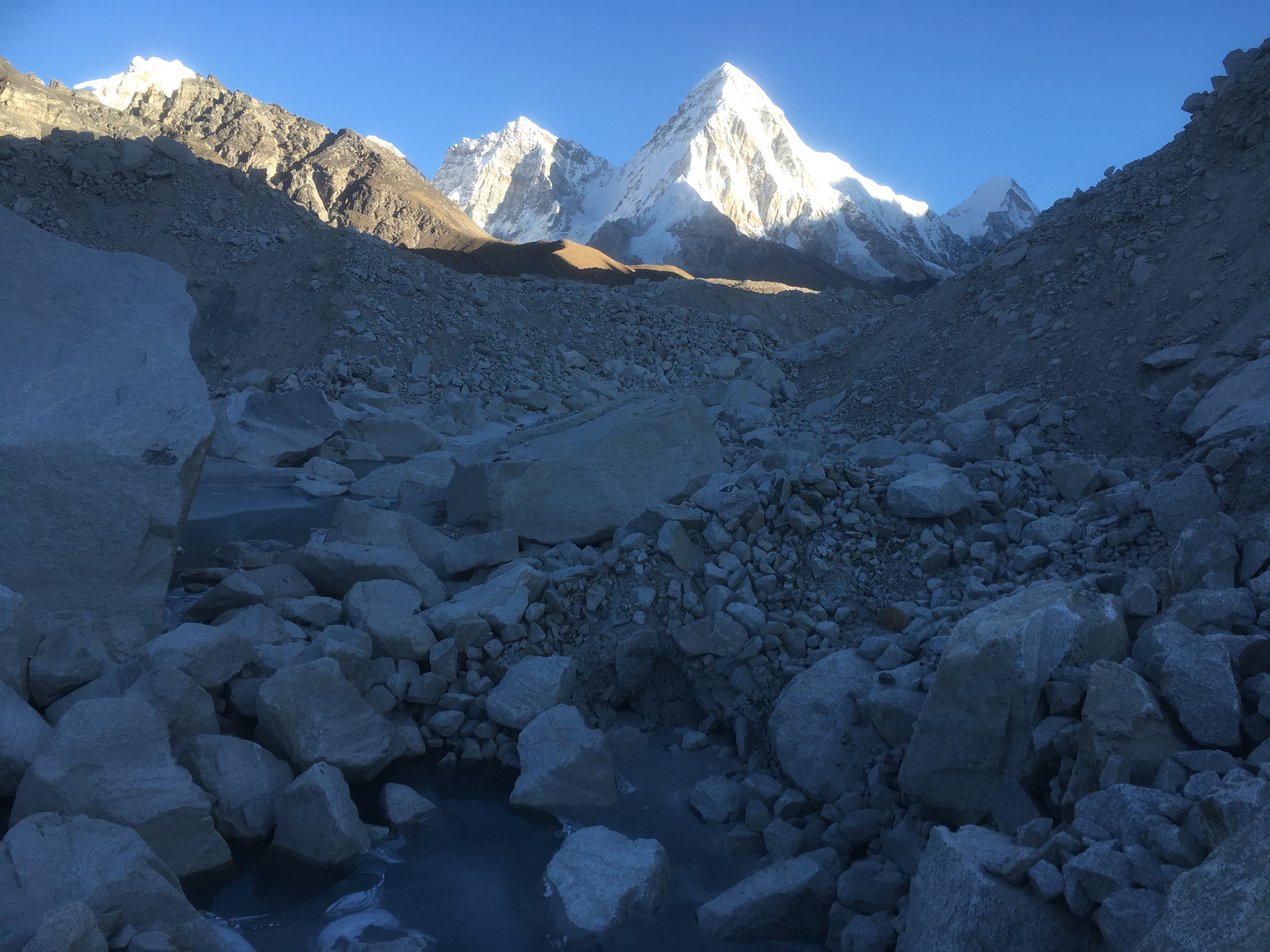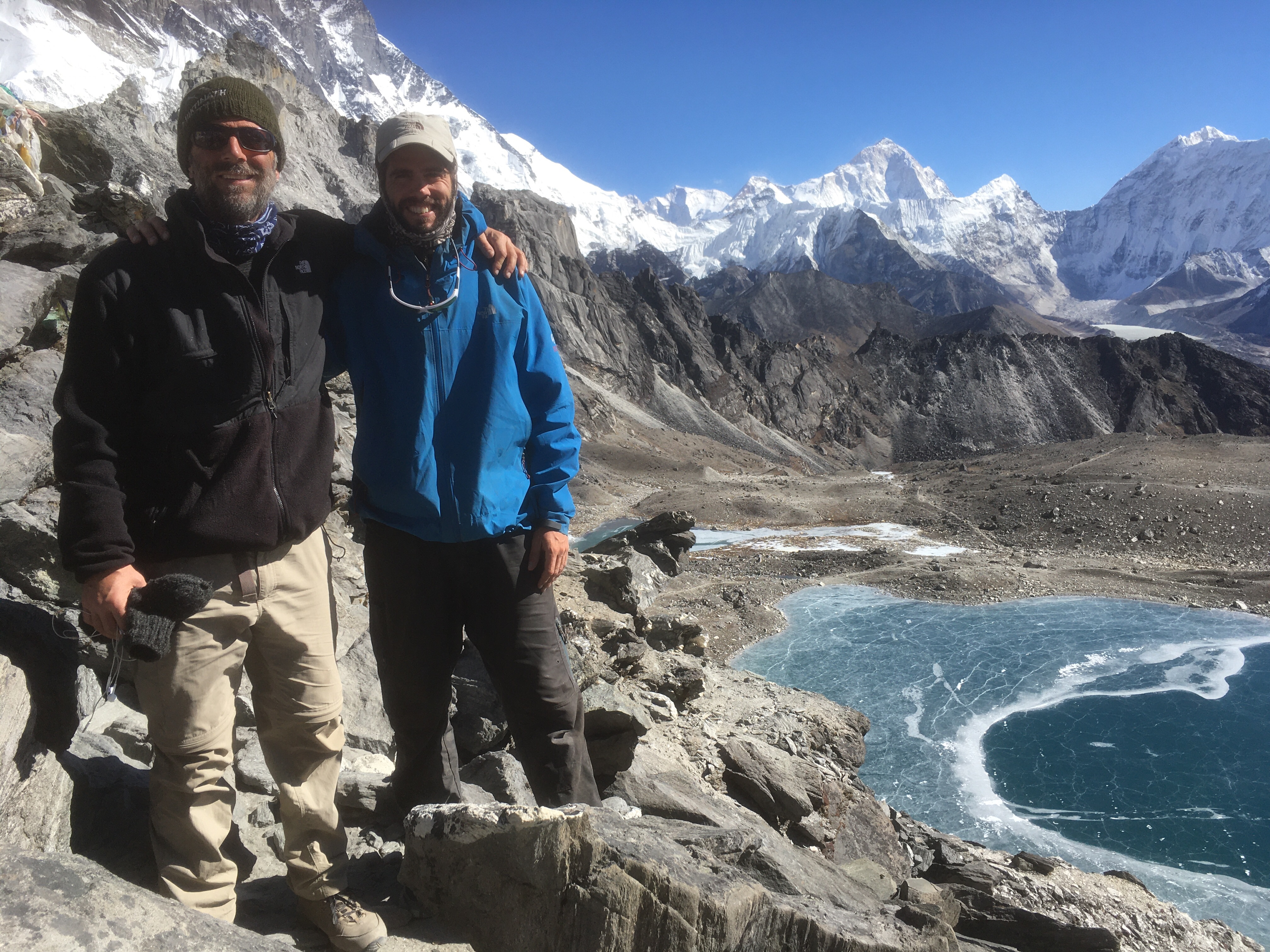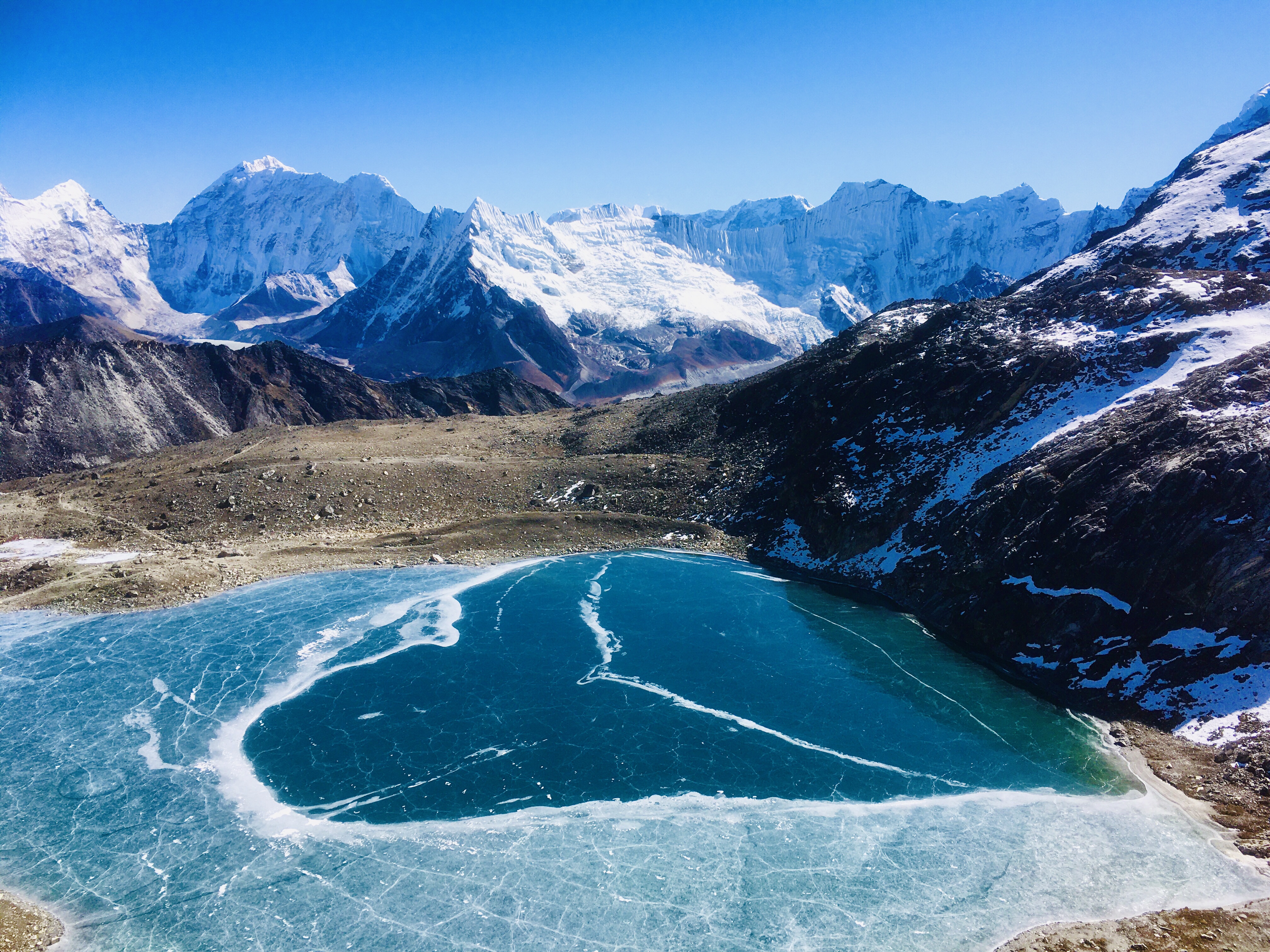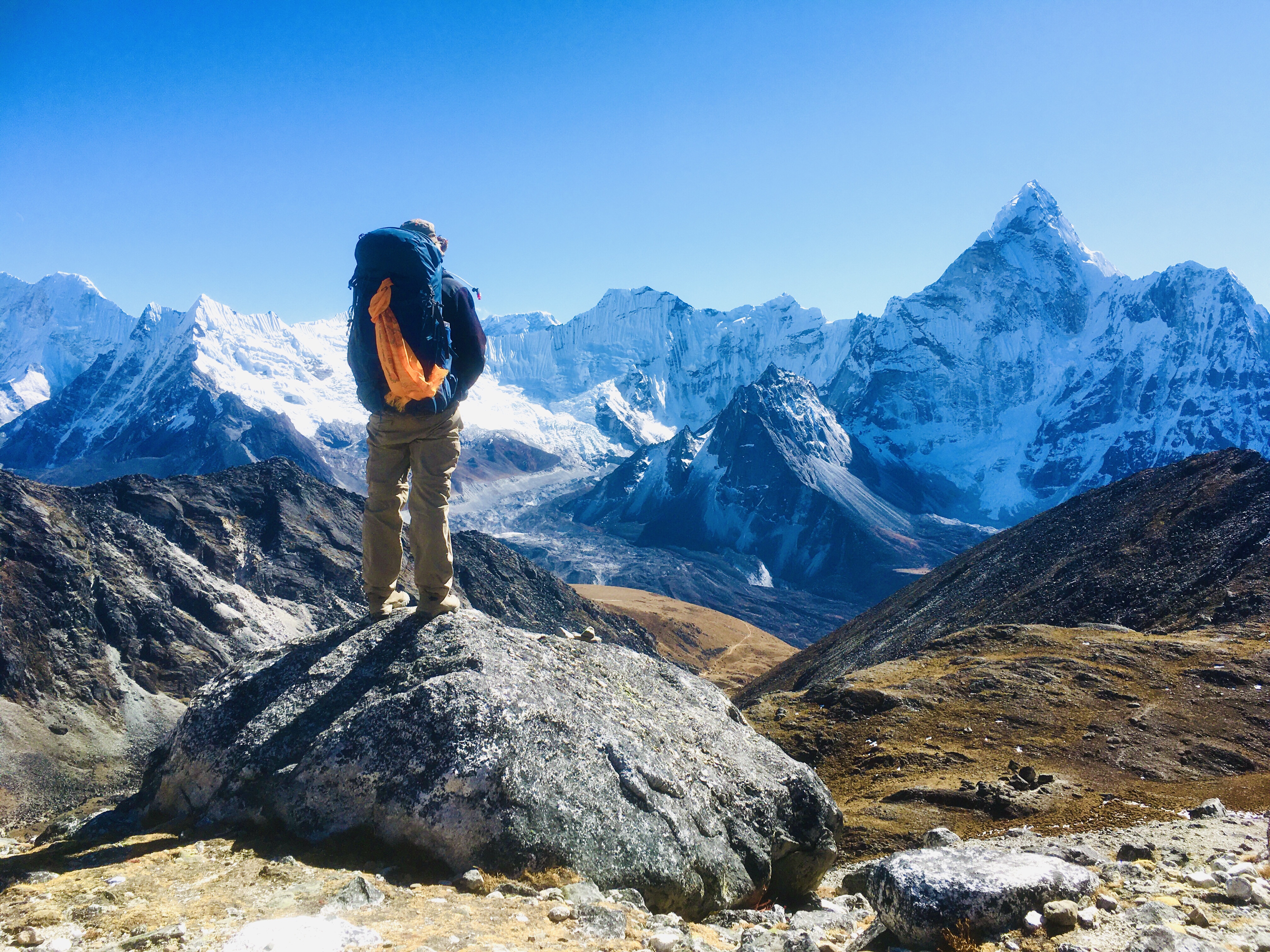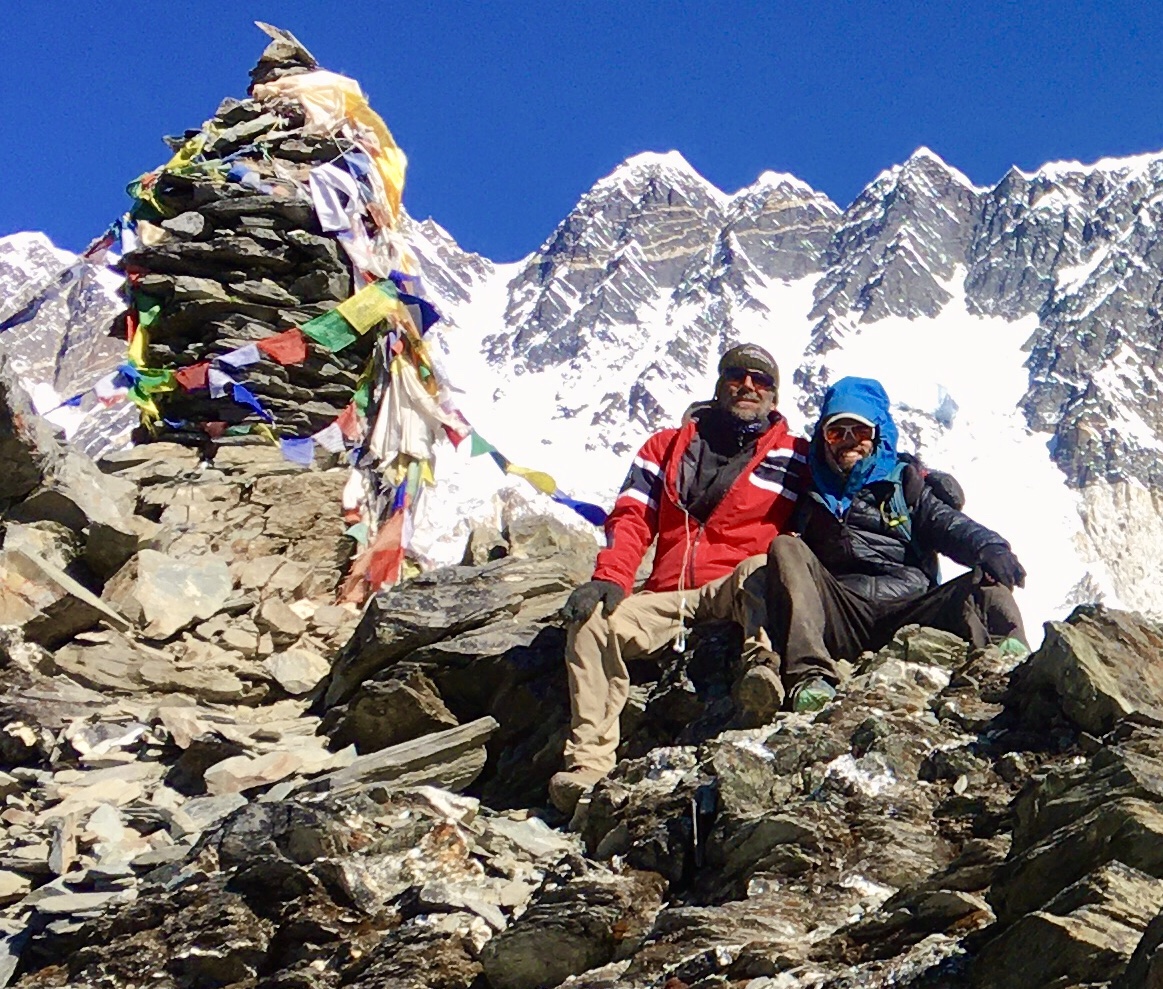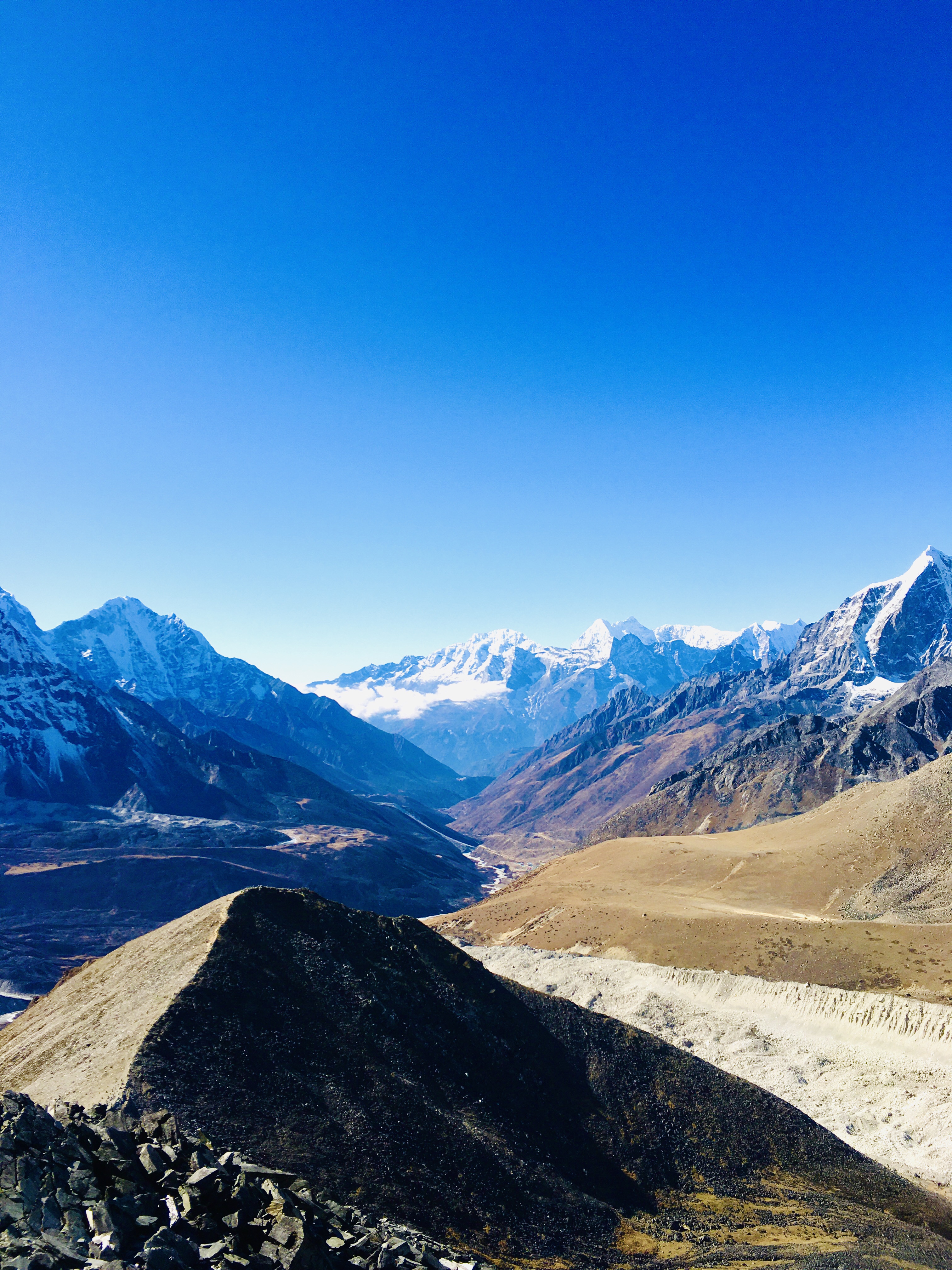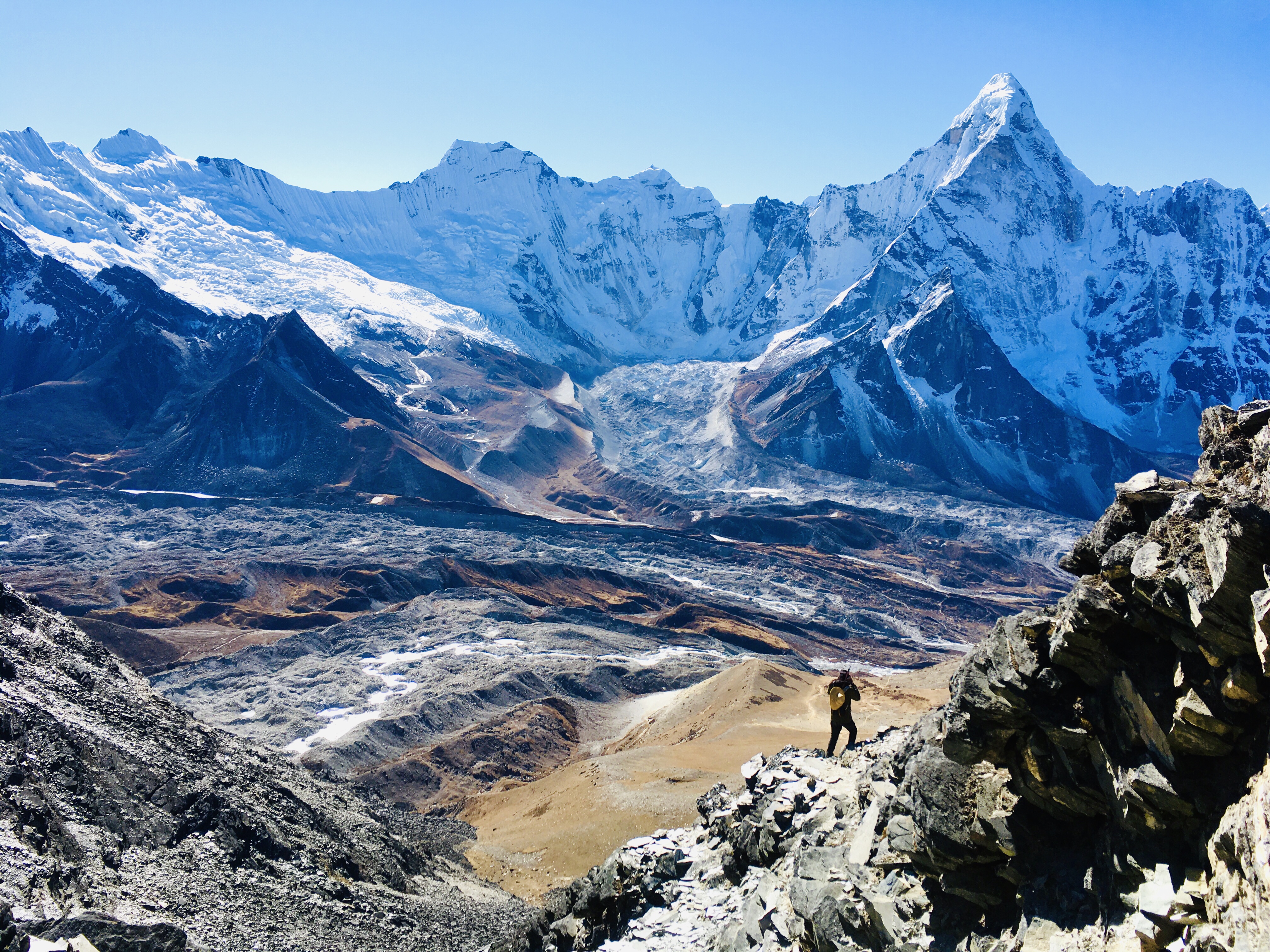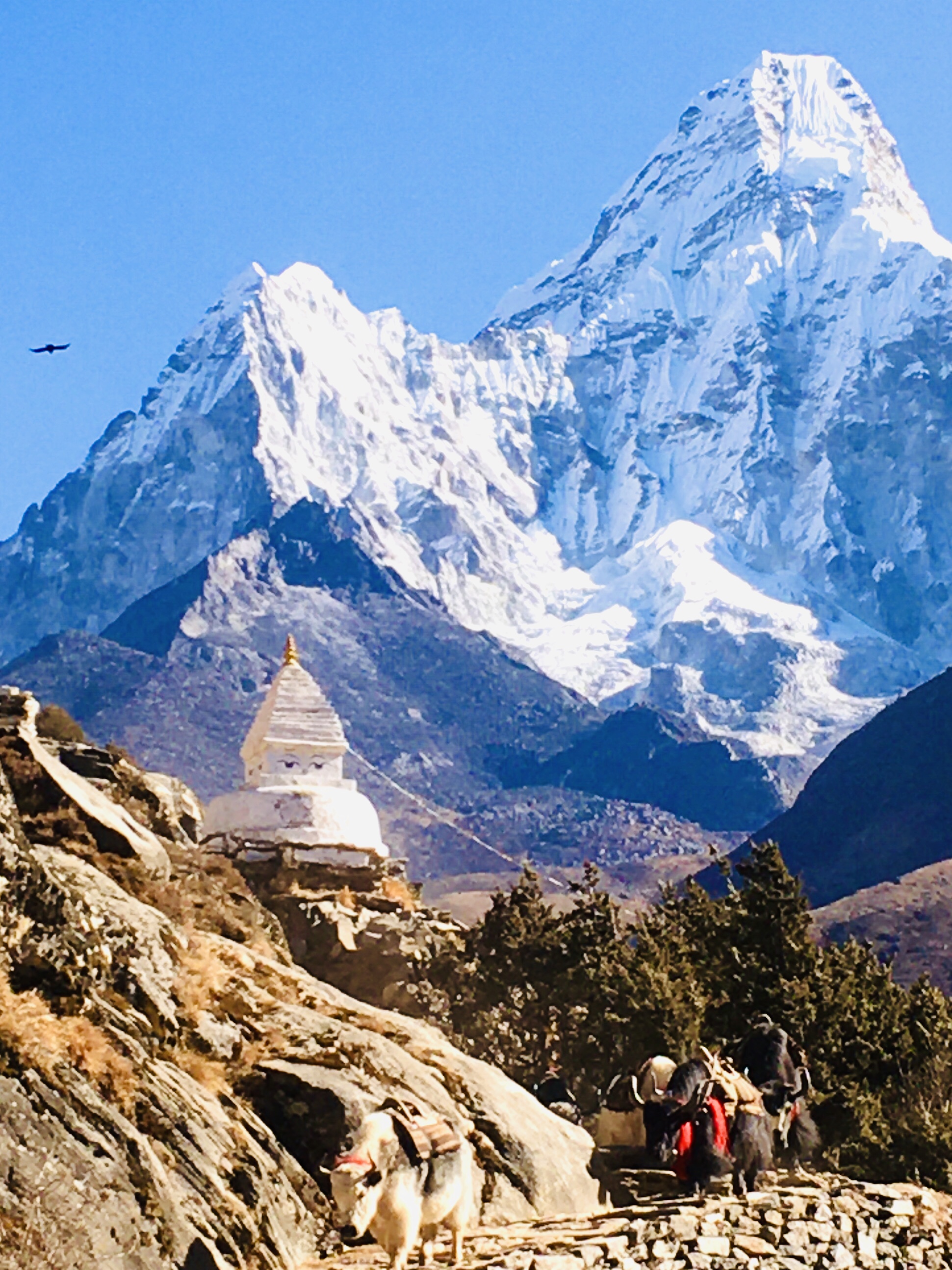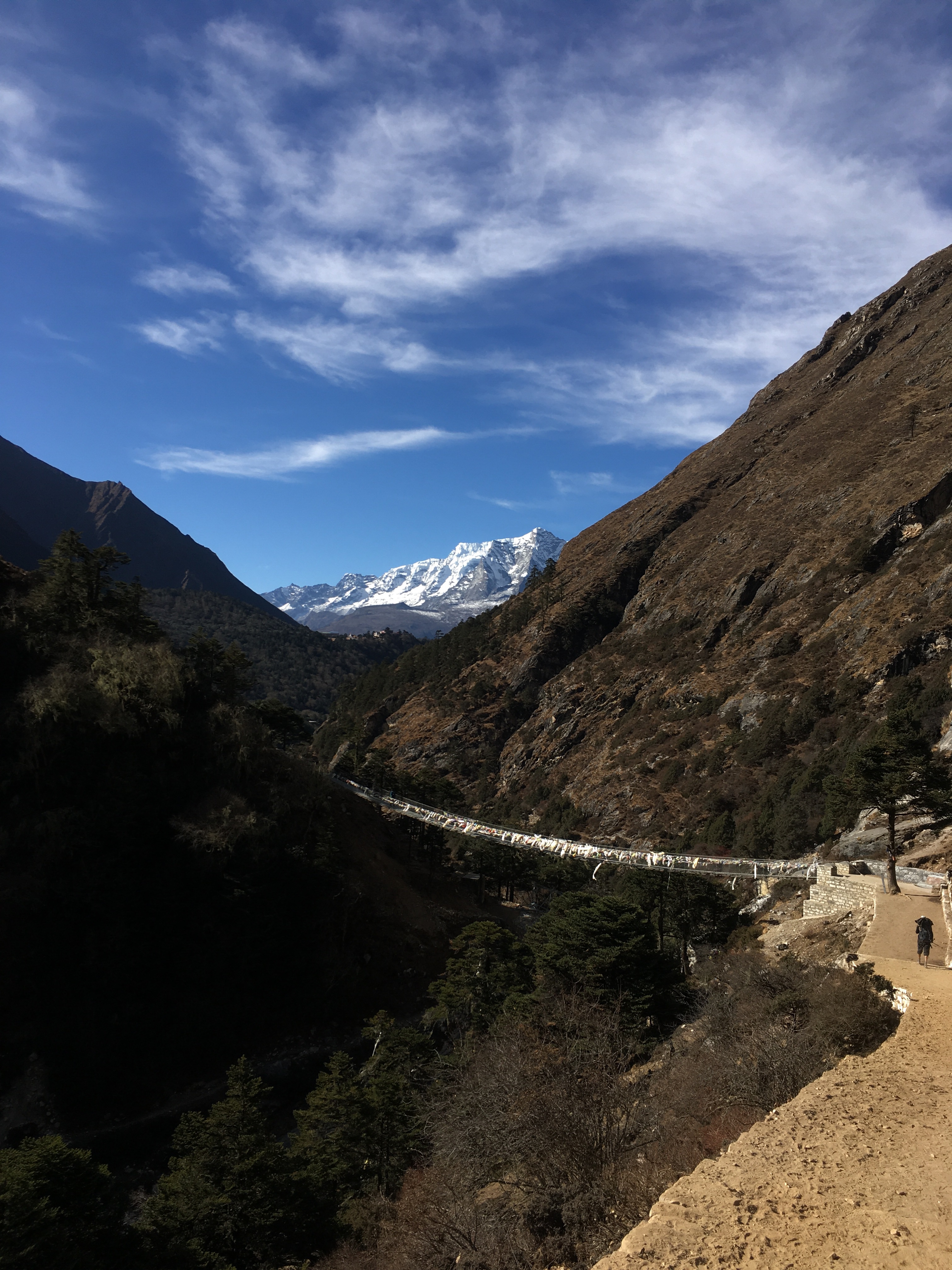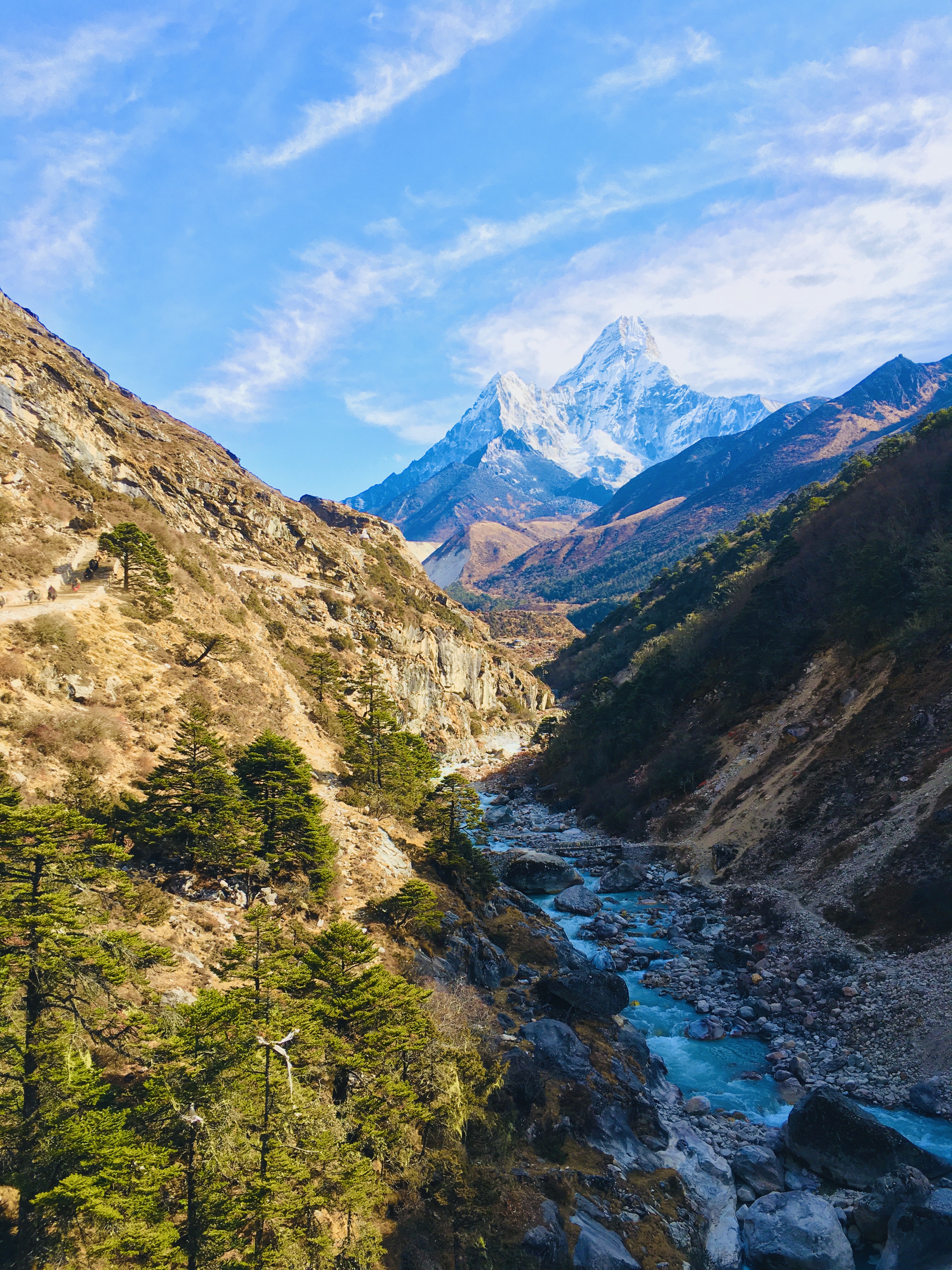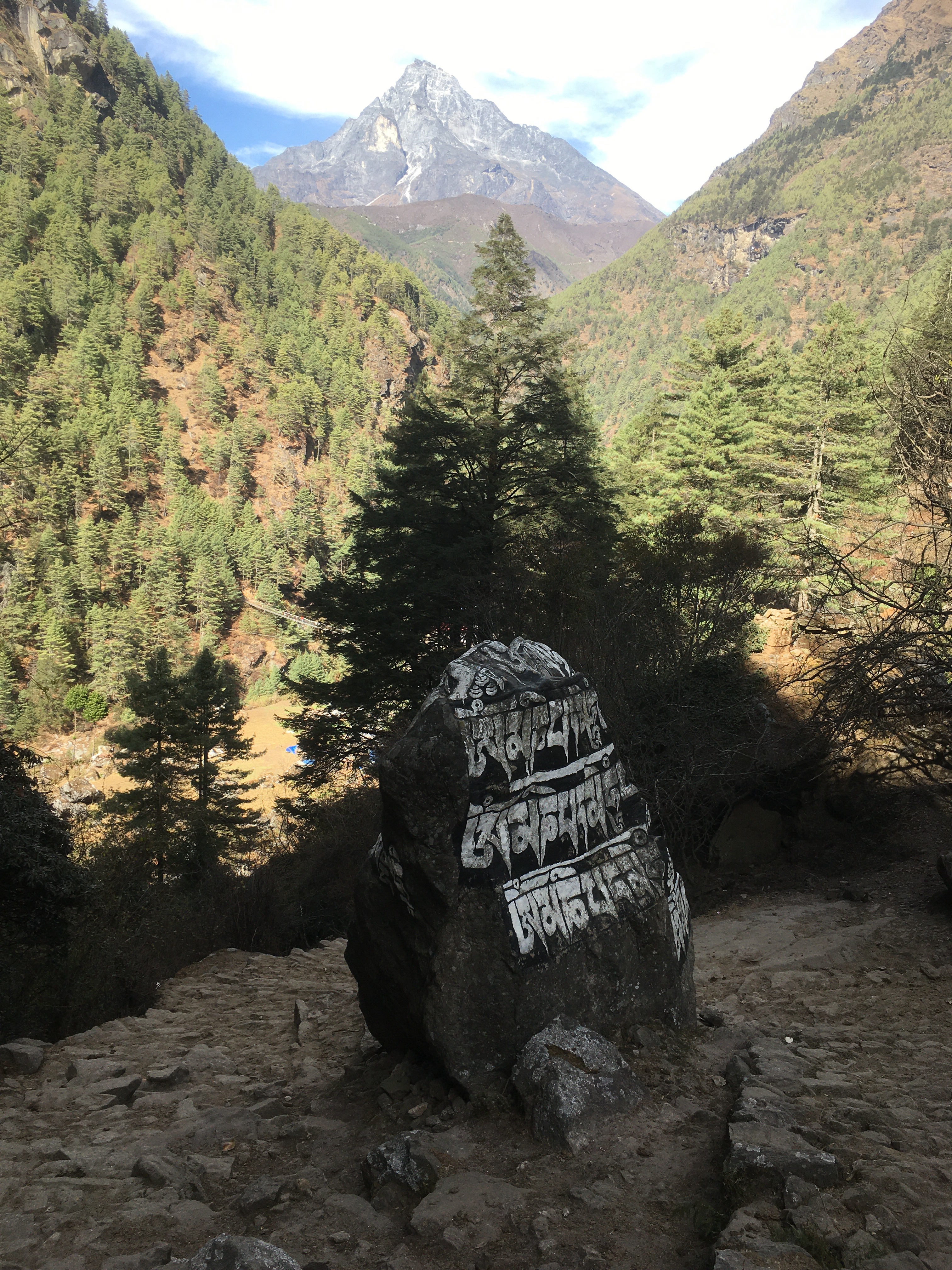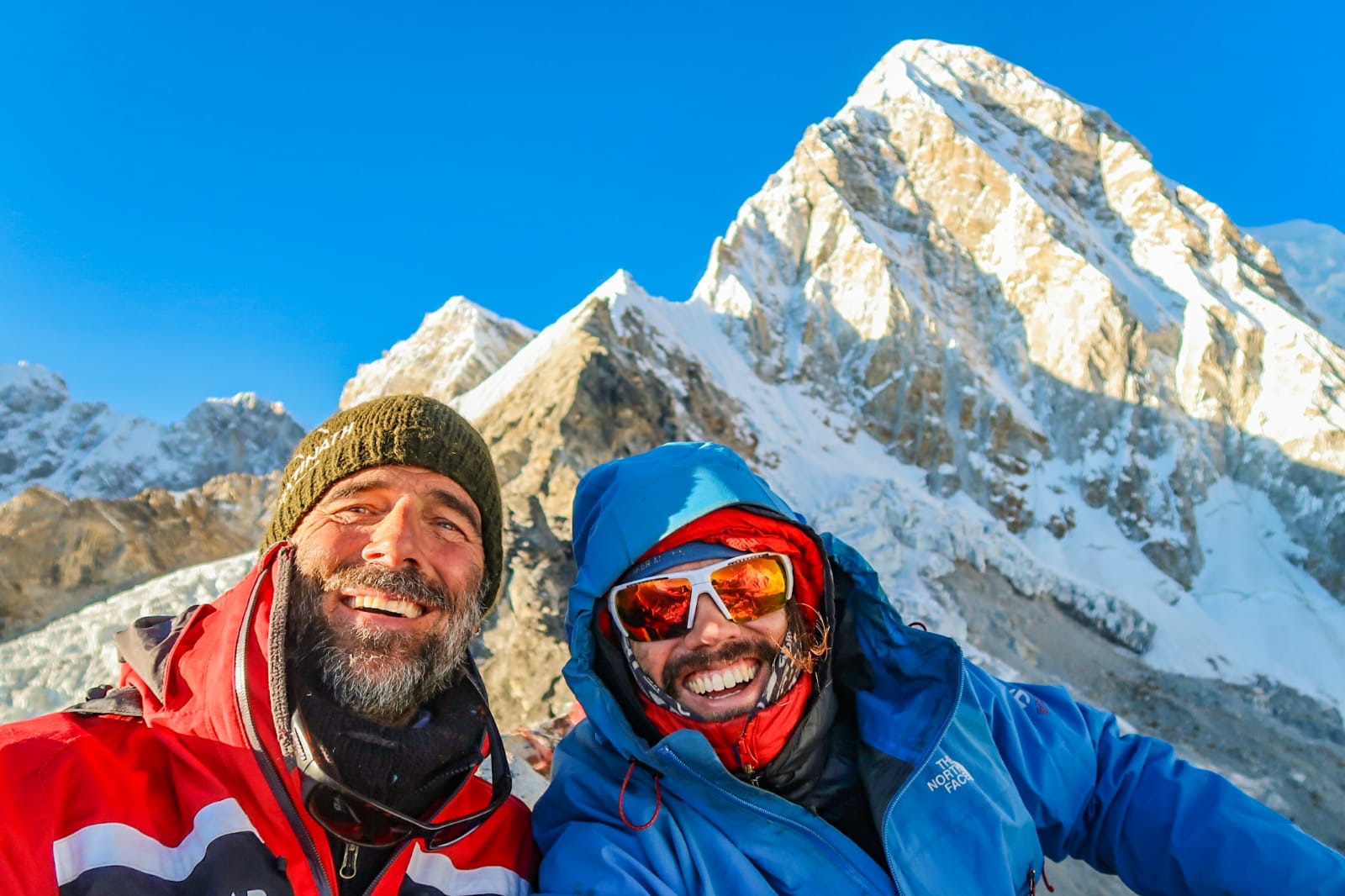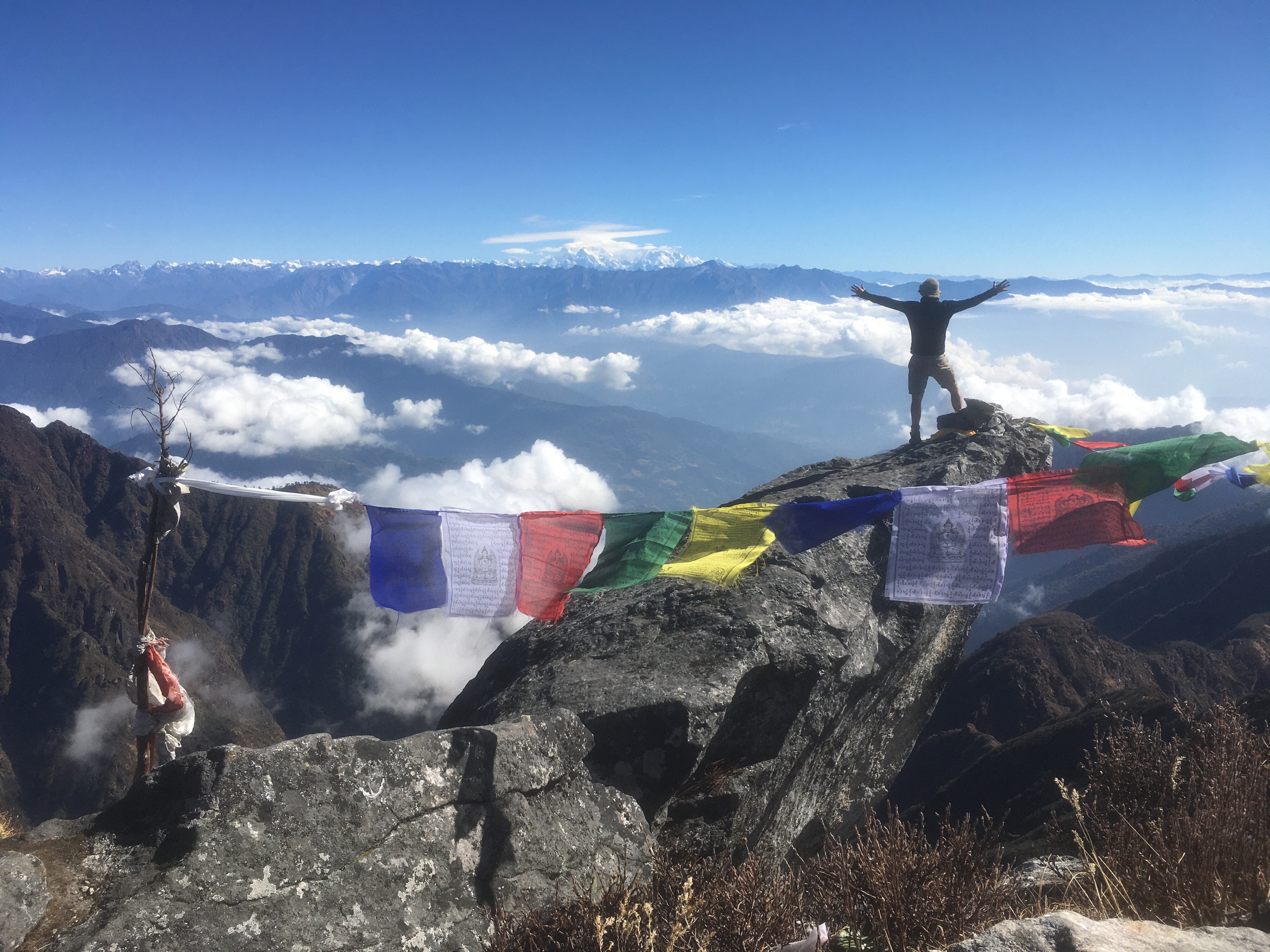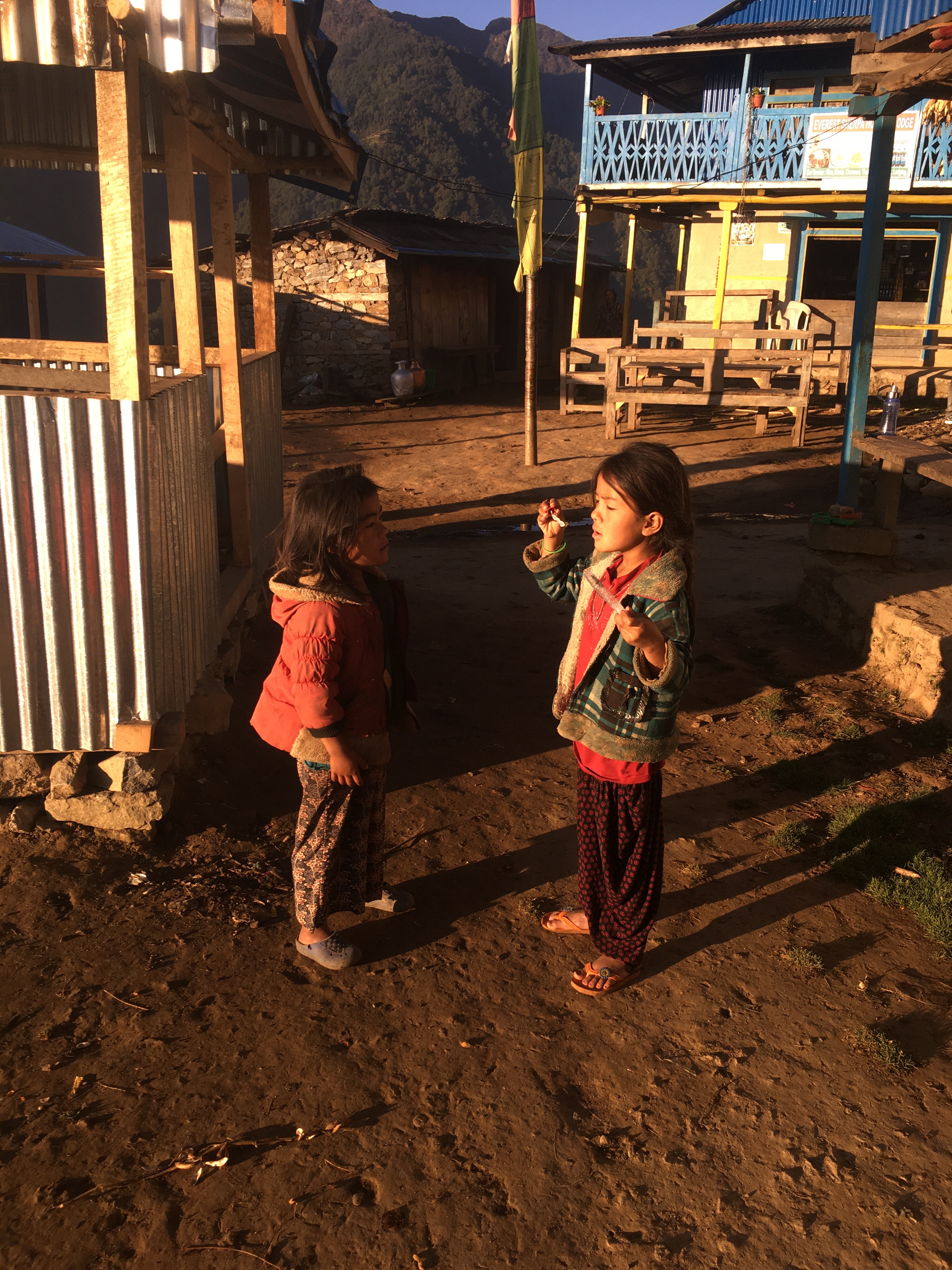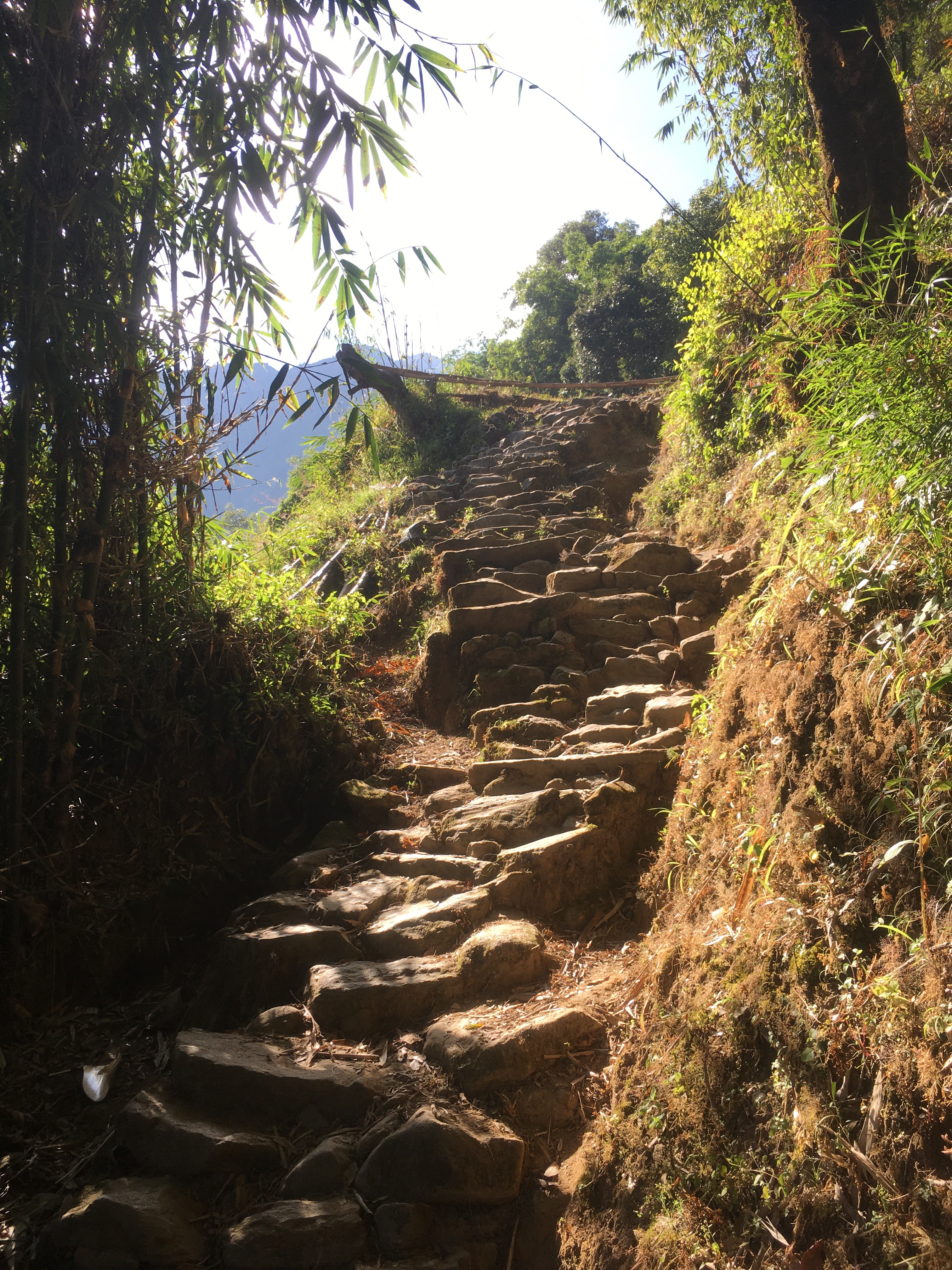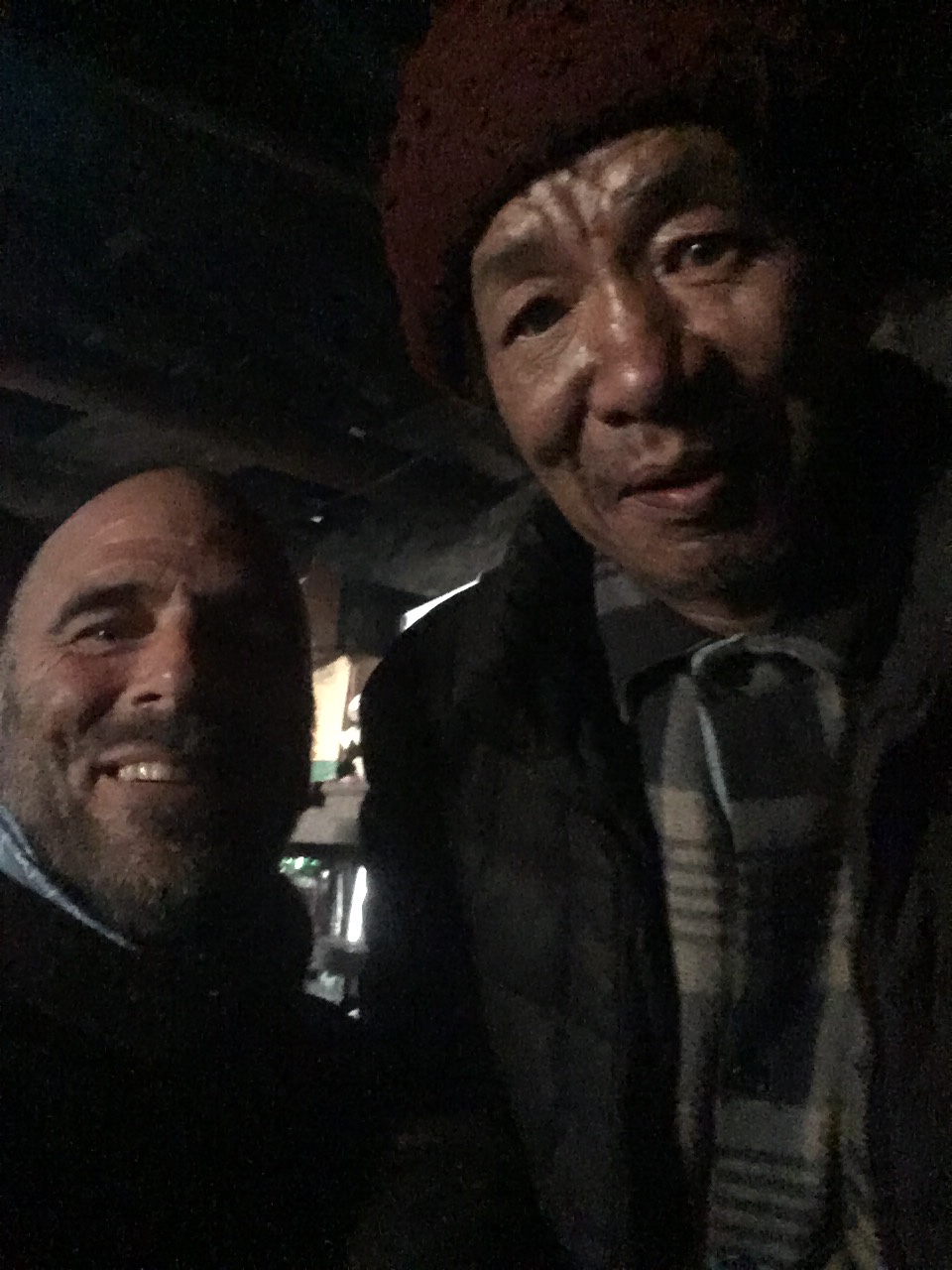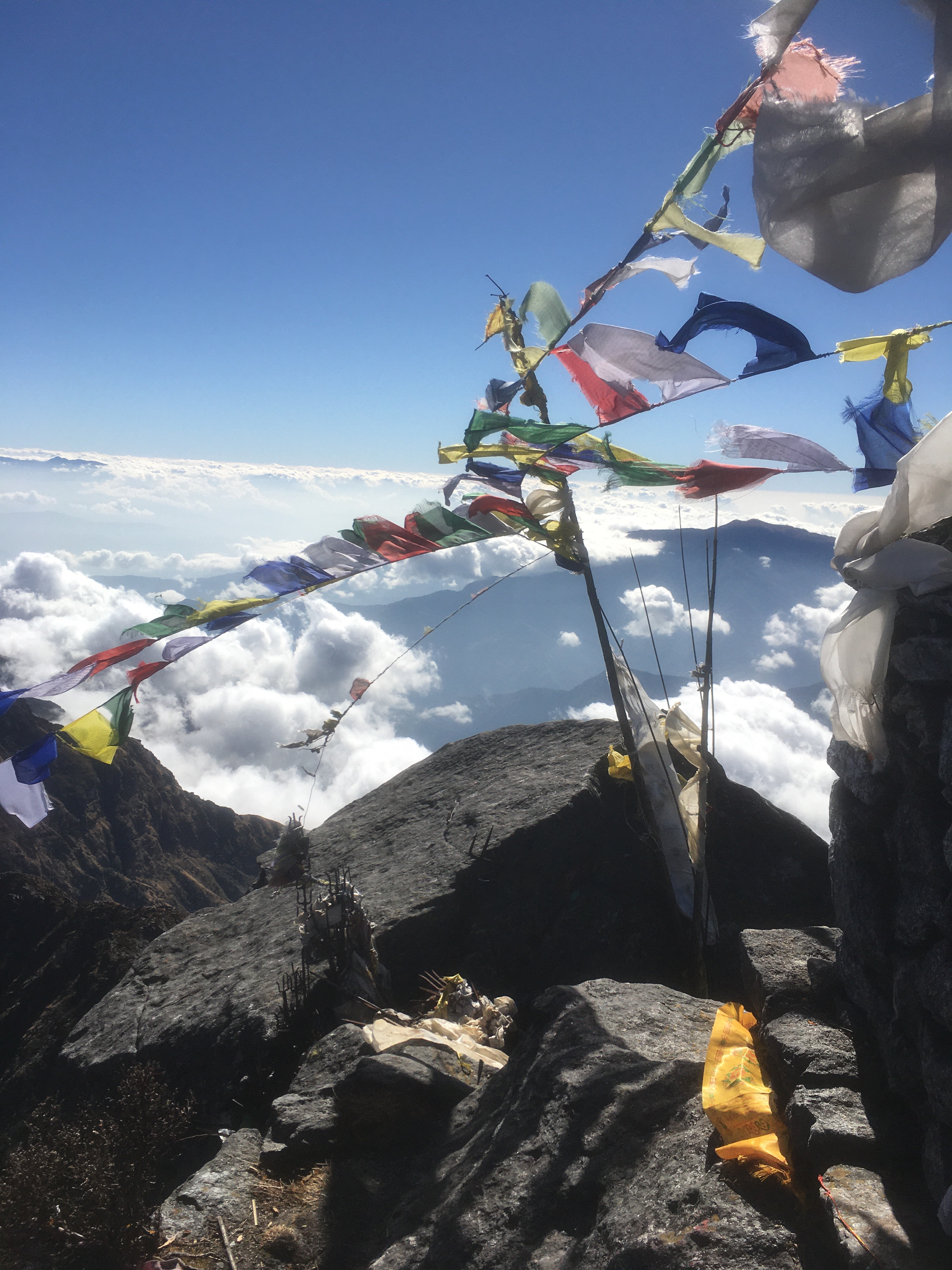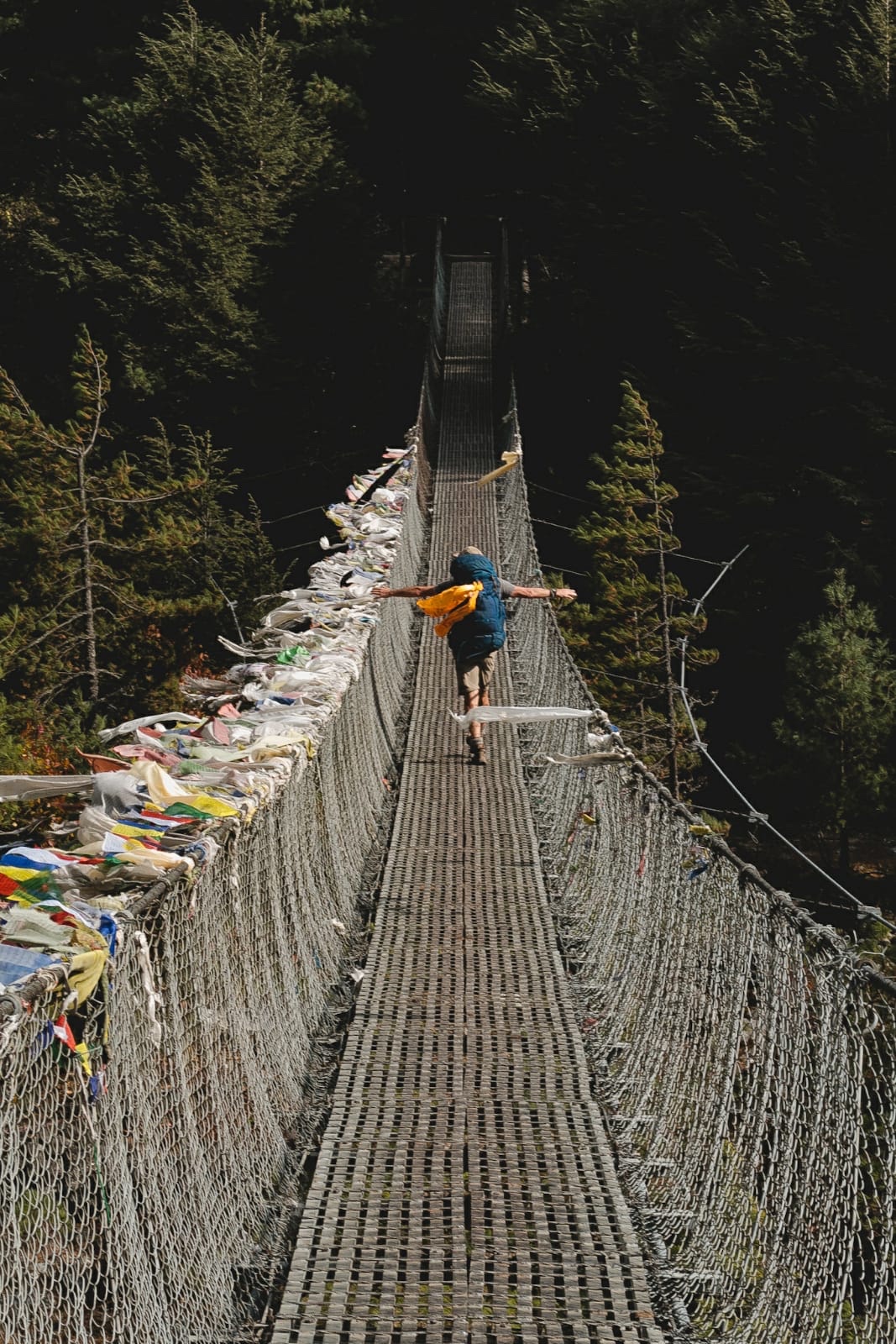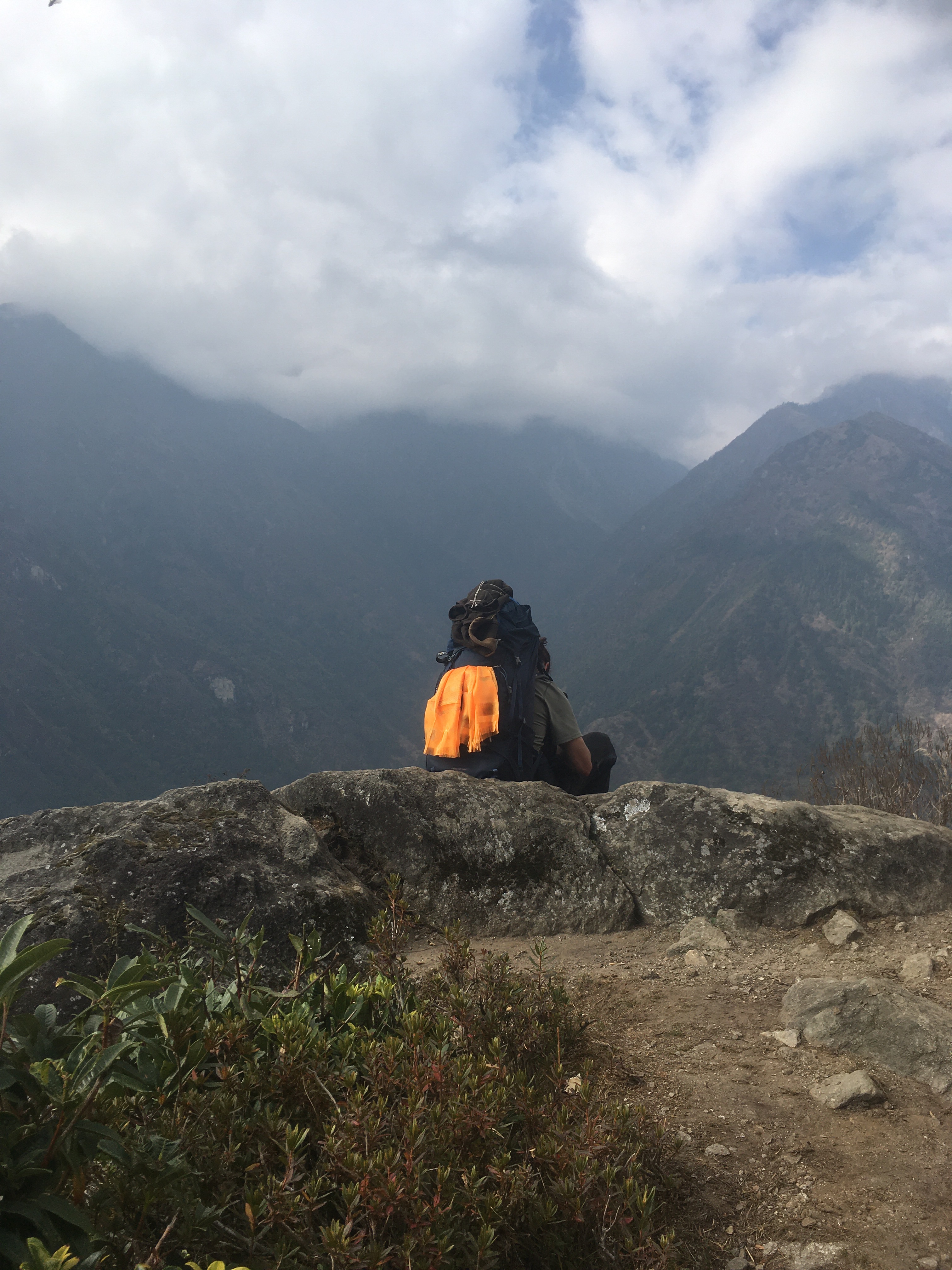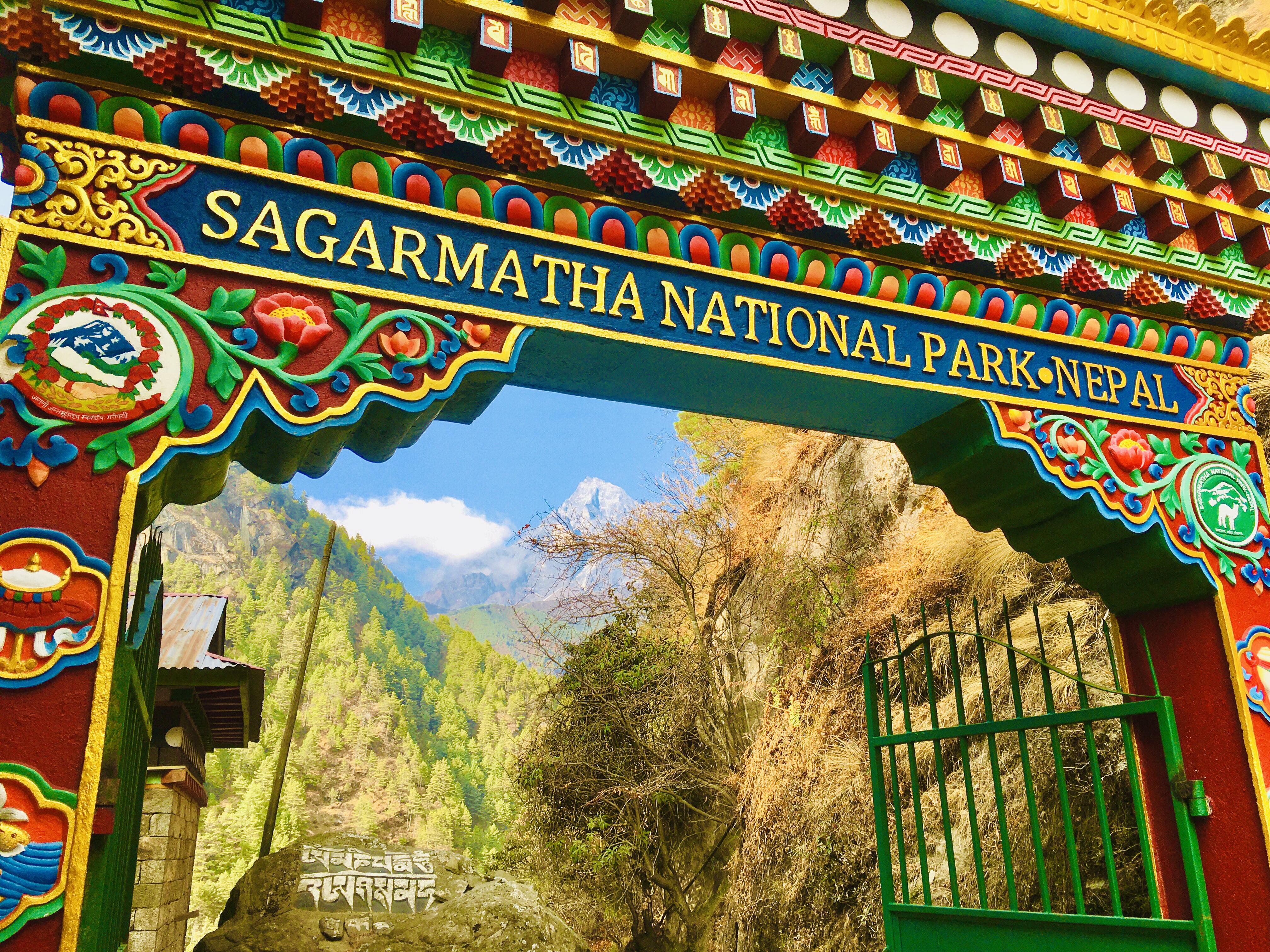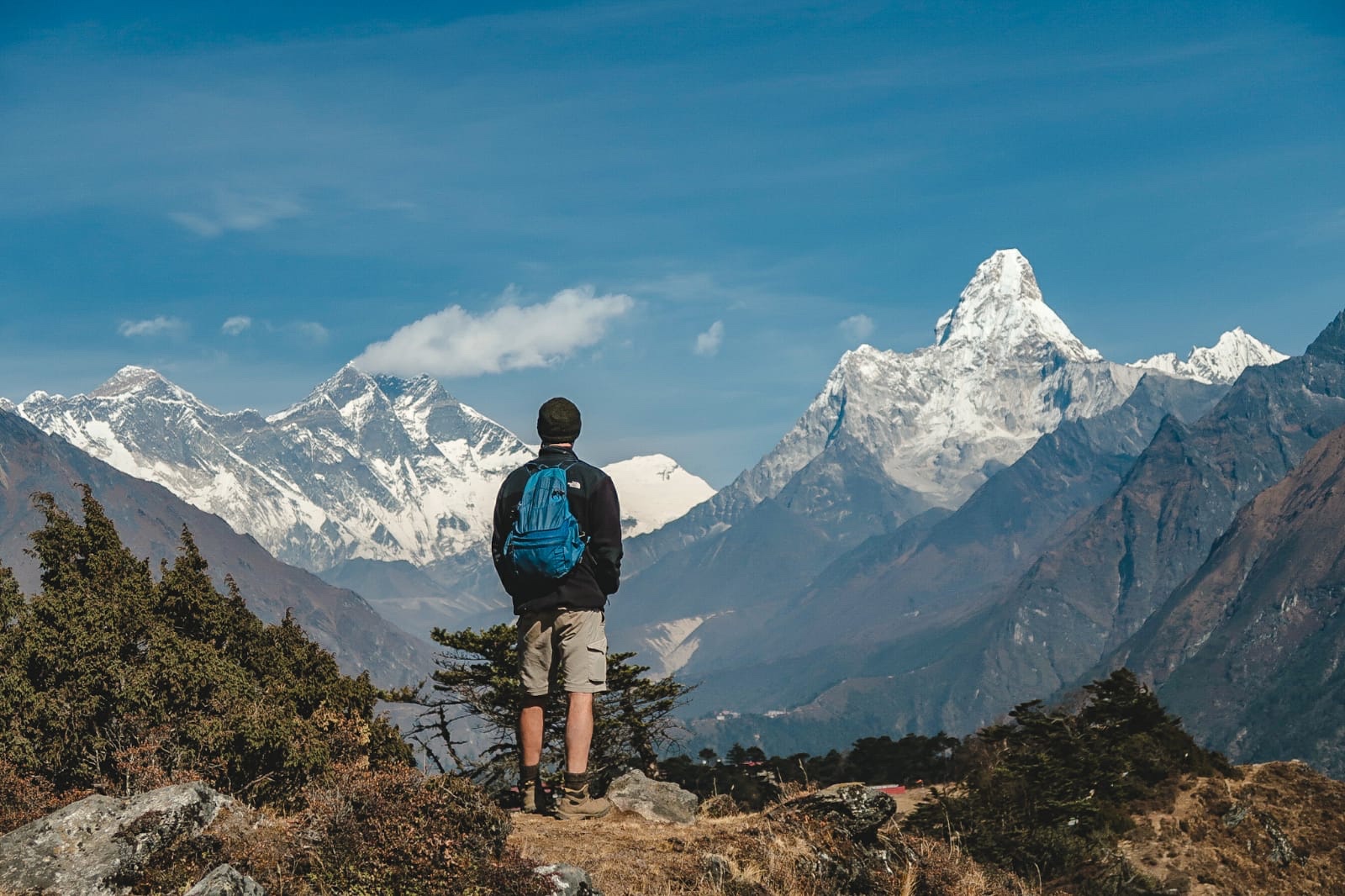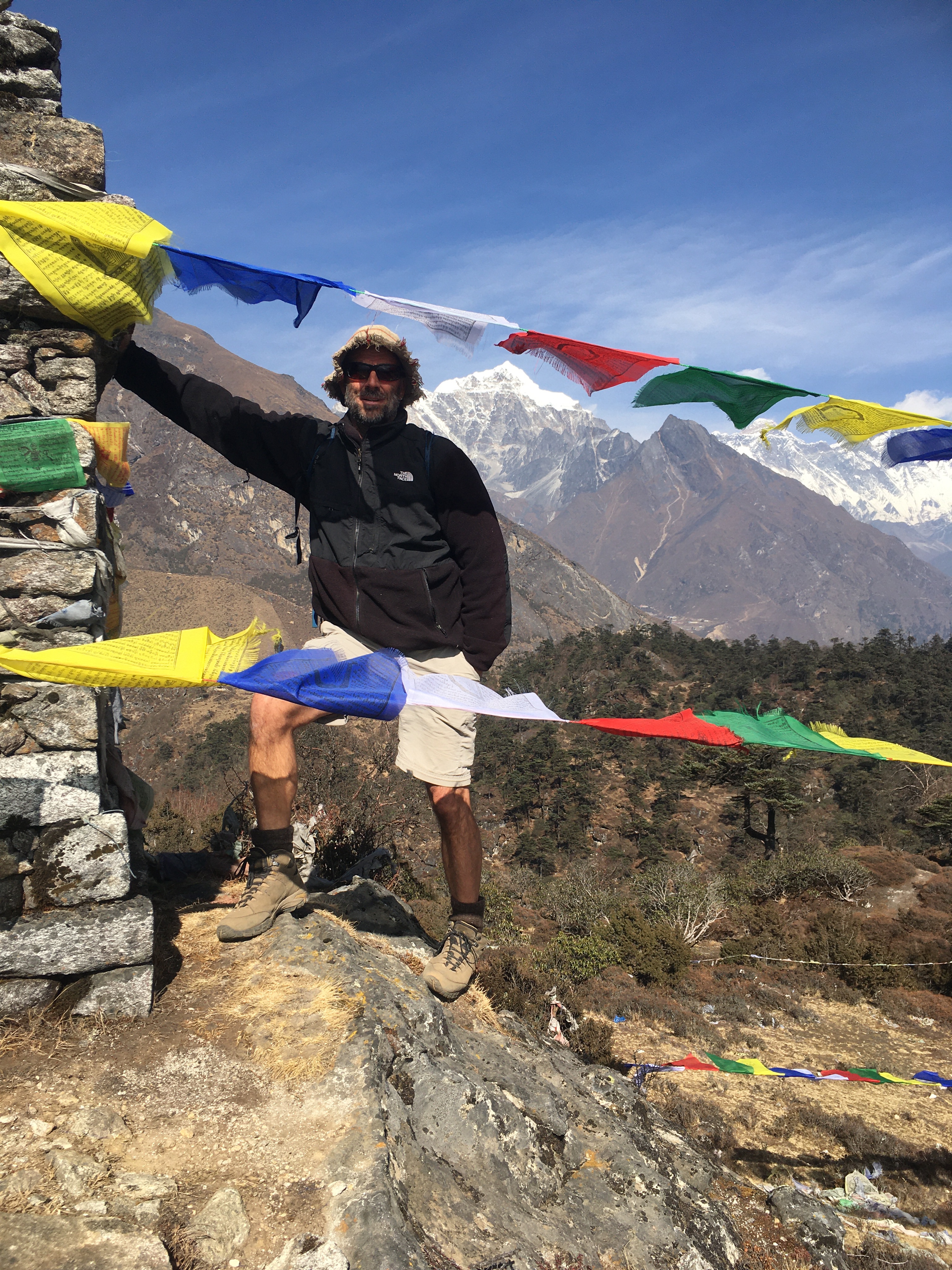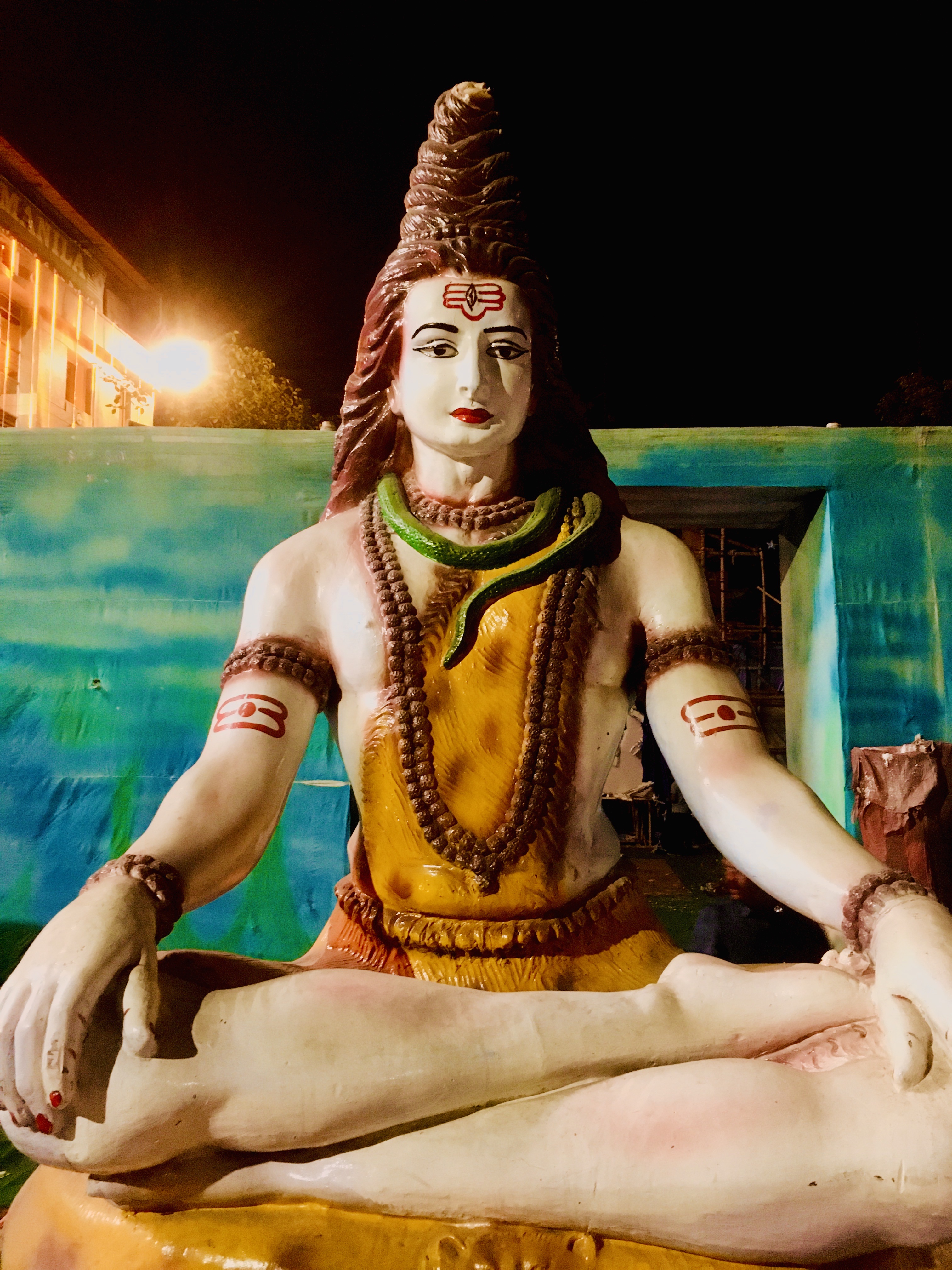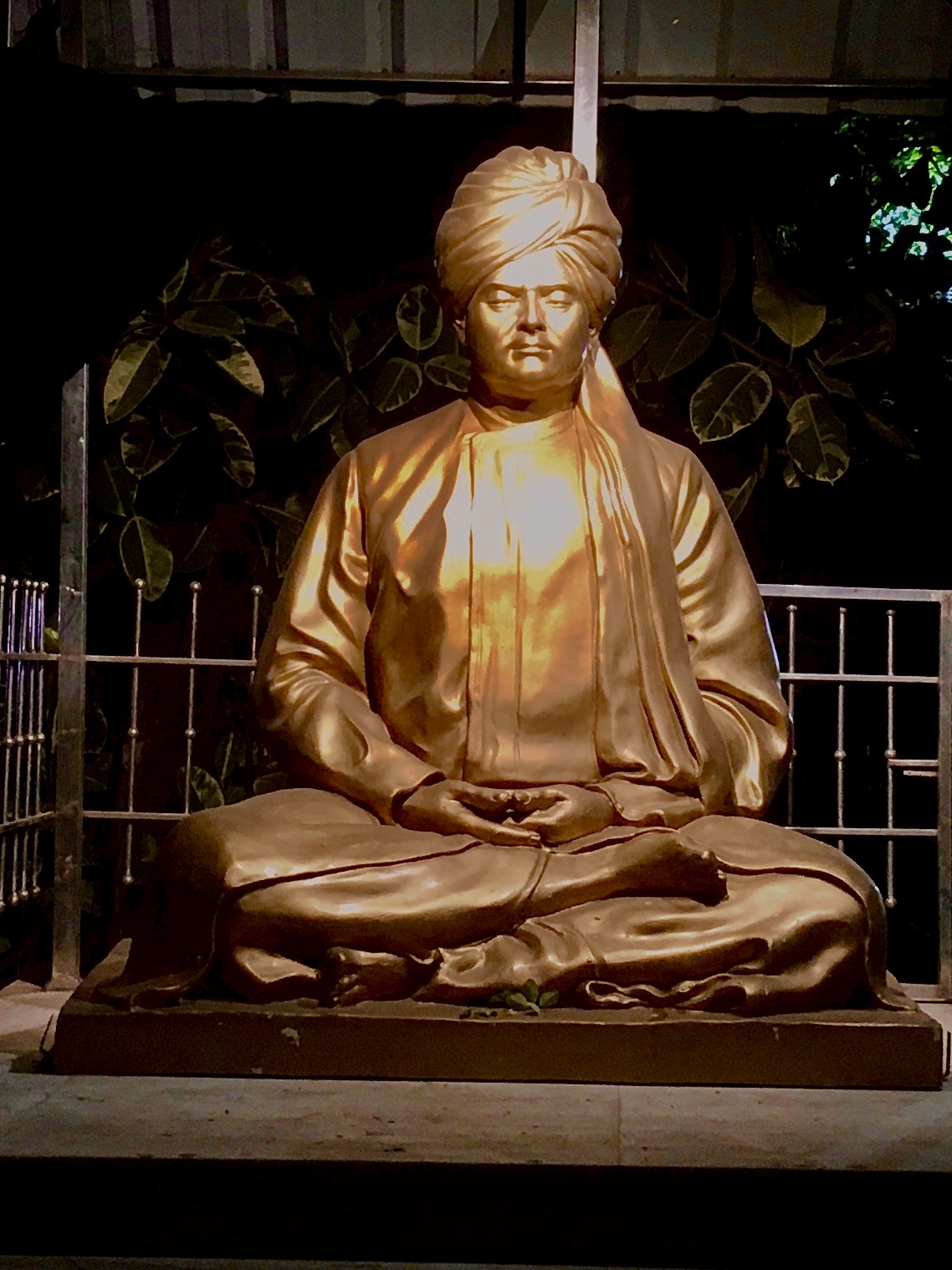Knowing we had a few weeks to make the 1000 mile journey back to Santiago, we gave ourselves extra time. We wanted to see some of the desert coastline that we missed on our long and fast journey northbound.
We, of course, built in extra time with a careful eye watching the changing communa phases that often disrupted any plans. We’d gotten our system down of moving from Phase 3 to Phase 3 communities. But we knew it was never a sure thing when moving thru a quarantined community. Rogue rules could be pushed on us at any time.
Having dreamed of driving up to a remote corner of Chile near Ollague and the Bolivian border, we opted for a (mostly) better road to ease my mind and protect my blown shock.
Skirting around a Calama in quarantine, we made our way up to the beautiful salars and active volcanoes around tiny Ollague on the Bolivian border. The drive up and back had us witness stunning changing landscapes and contrasting colors along with some wildlife.

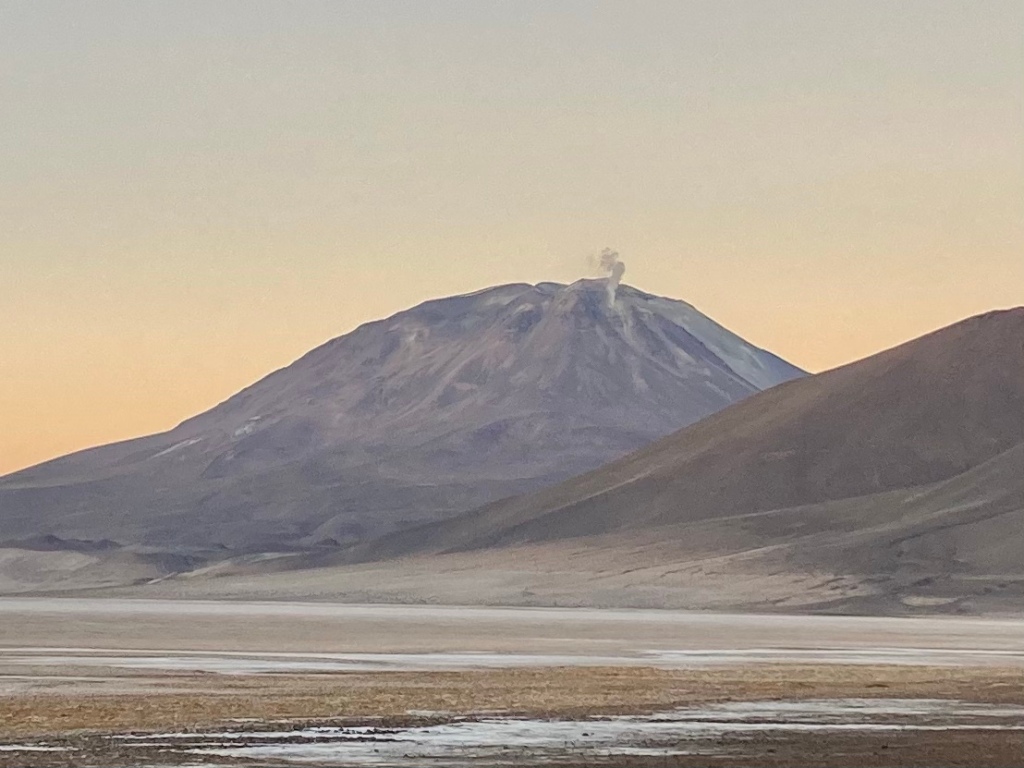
It’s so strange when someone tells you that you can’t do something. Especially crossing a border. I had done a border crossing or two into Bolivia before and wanted to go again. But we couldn’t. I wanted to take the back roads to the coast. But while filling up the van with five gallons of shitty gas purchased at a restaurant, I queried the owner about conditions. Muy mal he says.
Knowing it would be stupid to try it with many potential mishaps ( gas, shocks, altitude, quarantine) we opted to wild camp that night. As we drove out of the 12,000 foot town we felt ourselves going up. It was getting cold, the road worsened and well, we’d seen the town and were feeling the rarified air.
A quick calculation had us able to get below 10,000 feet, returning the way we came, in a few hours. As we settled into the pitch black drive on the lonely altiplano roads, we guessed about where that checkpoint was we passed on the way up. Could we make it before the lockdown hour of 9 PM? Let’s go for it.
Arriving at the checkpoint right after 9, we braced ourselves for a scolding, a fine or an order to sleep right there. What we got was genuine concern that we were traveling at night along a dangerous border region. “Don’t camp on the road. Be more hidden” he told us and let us pass.
Another hour and finally we descended to lower (maybe 9000 feet) and warmer climes. A nice roadside wild camp on another road up to the volcanoes. I could only dream of more time, more gas, and less restrictions to explore.
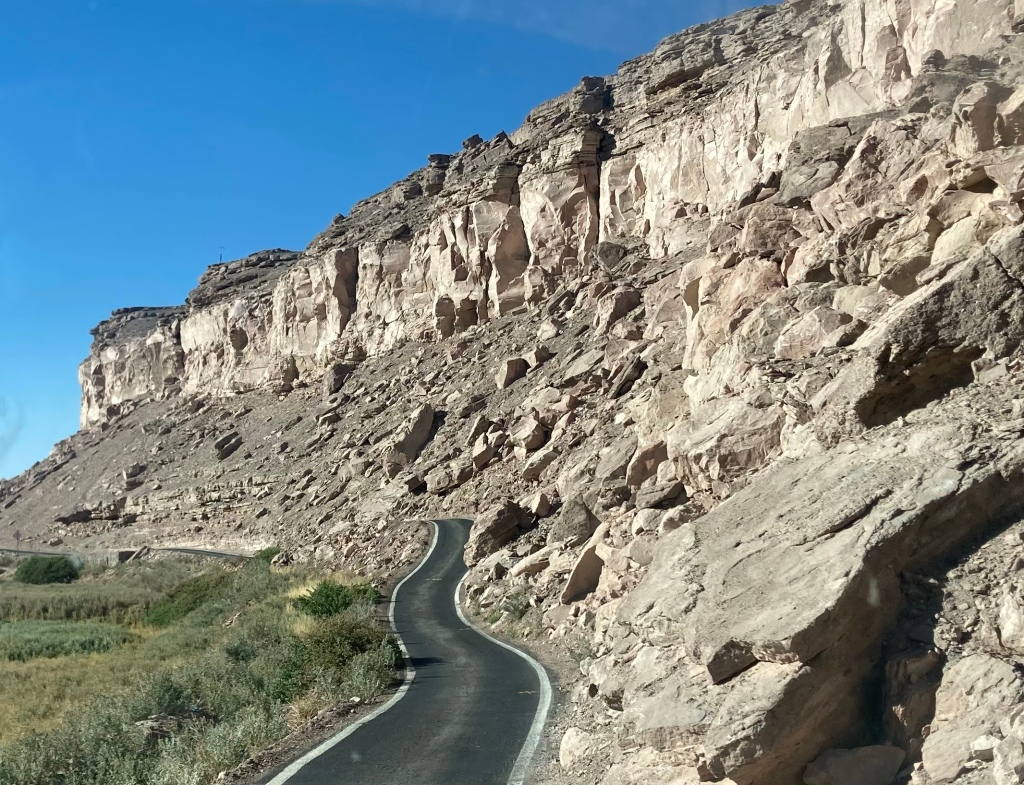
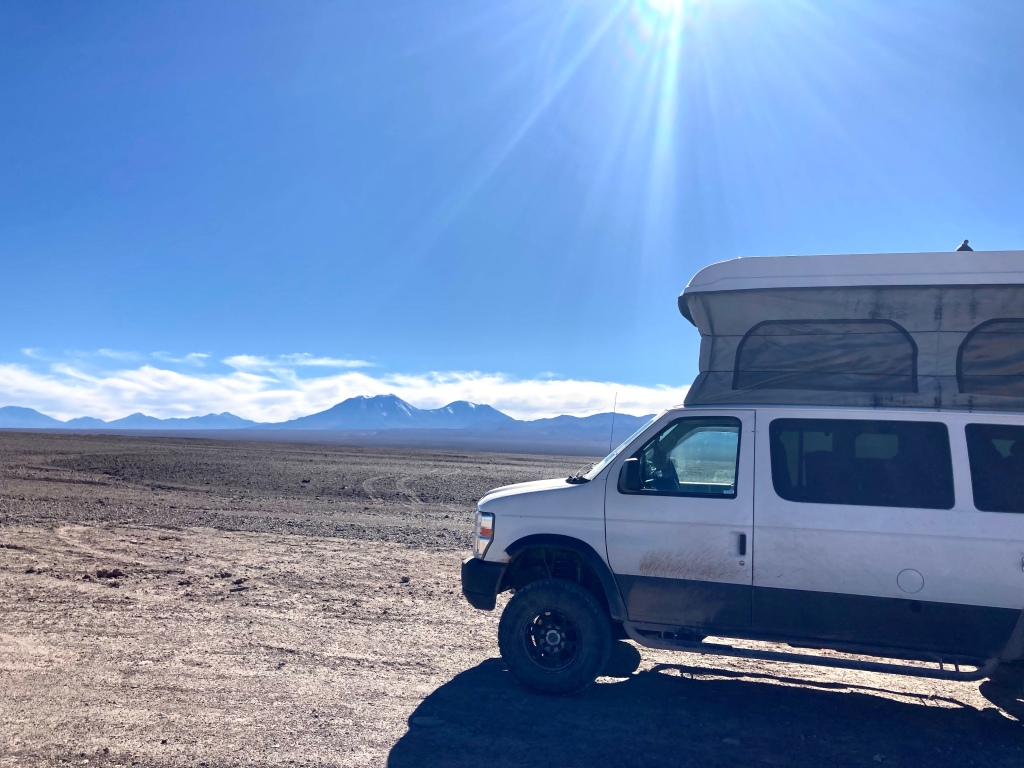
We rocketed around Calama, gaping at the largest open pit copper mine in the world. The swirling dust of the disturbed earth seemingly permeating every orifice in both the van and our bodies. We gassed up and continued our journey to the coast.
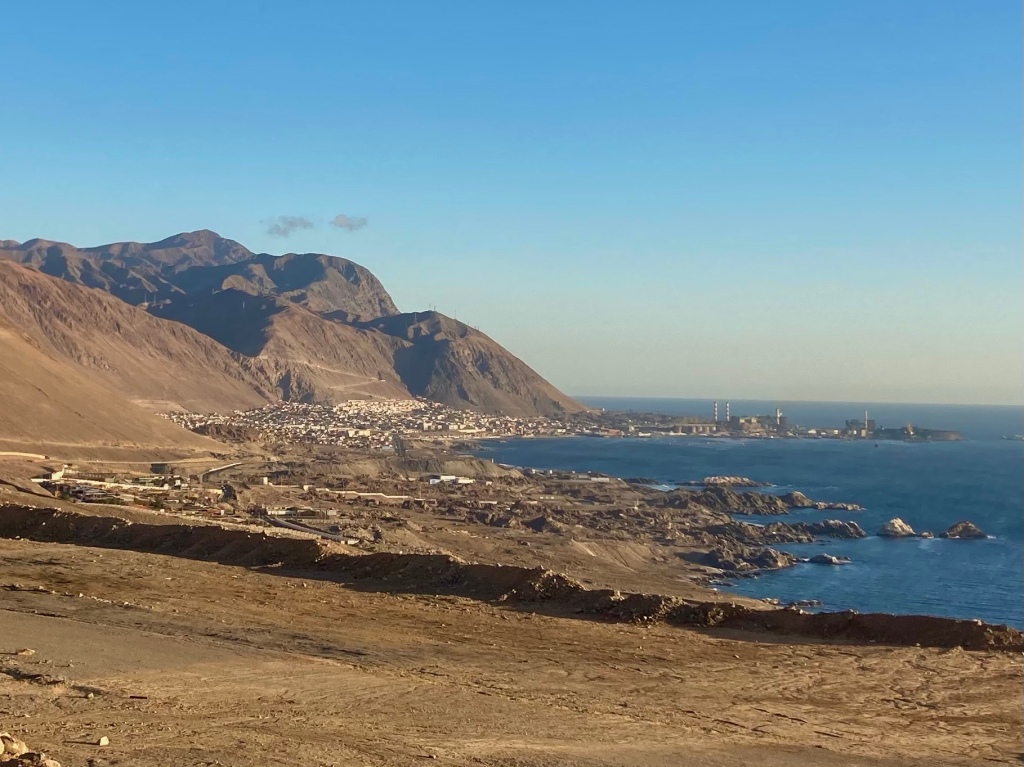
A quick dive in the water and night at the beach had us calculate a drive up to Iquique, currently in Phase 1. We saw we could get past it, and visit a huge desert archaeological site by playing by the rules. Gigante del desierto. Why not? A long drive and a warmish night in the lower desert had me finally convince Camila to sleep out under the stars. No wildlife, no plant life. Just distant mining lights and stars and new moon.
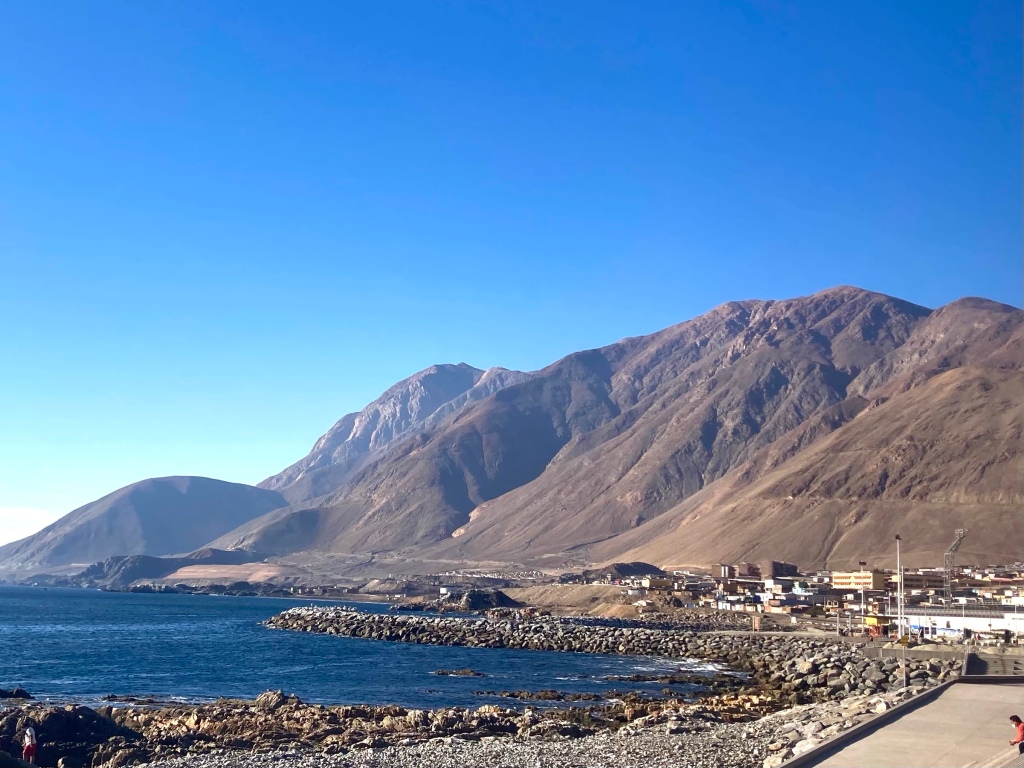
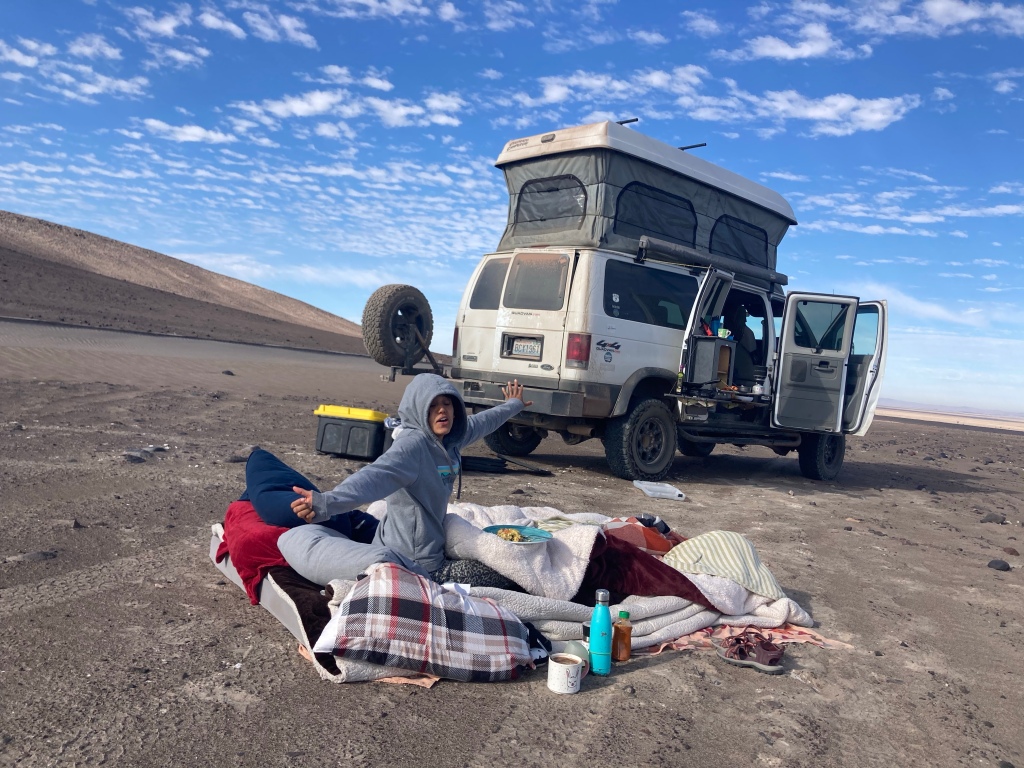
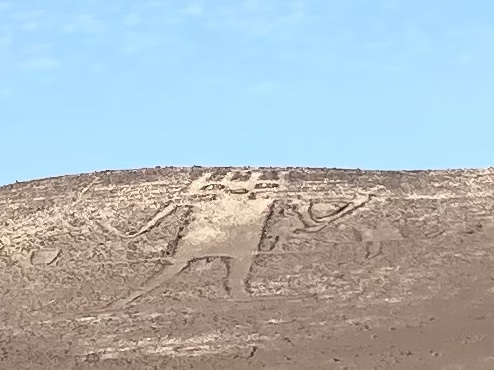

We stopped in the Elqui valley. The pisco capital of Chile. Stunning desert landscapes peppered with pisco vines provided quite the contrast.
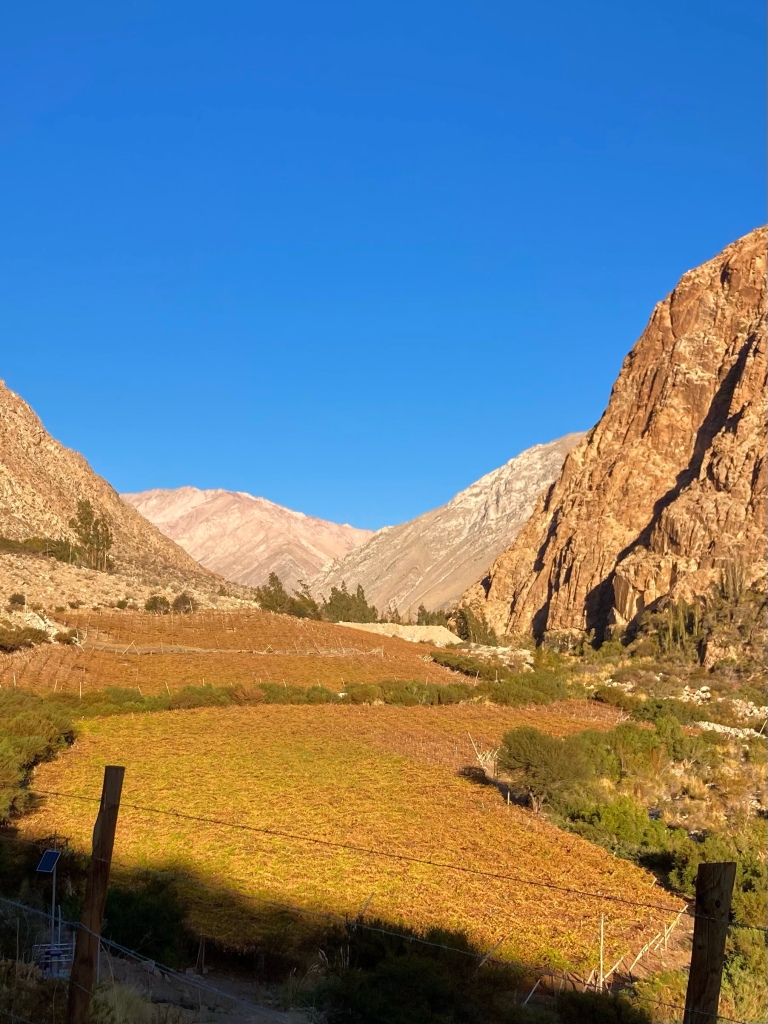

Camila recovering from her first bout of stomach issues, I spent a few days stretching my legs with a local four legged friend and we drove to yet another closed border pass; rumored to be one of the most beautiful. My Argentine friend David a mere 100 miles away on the other side.

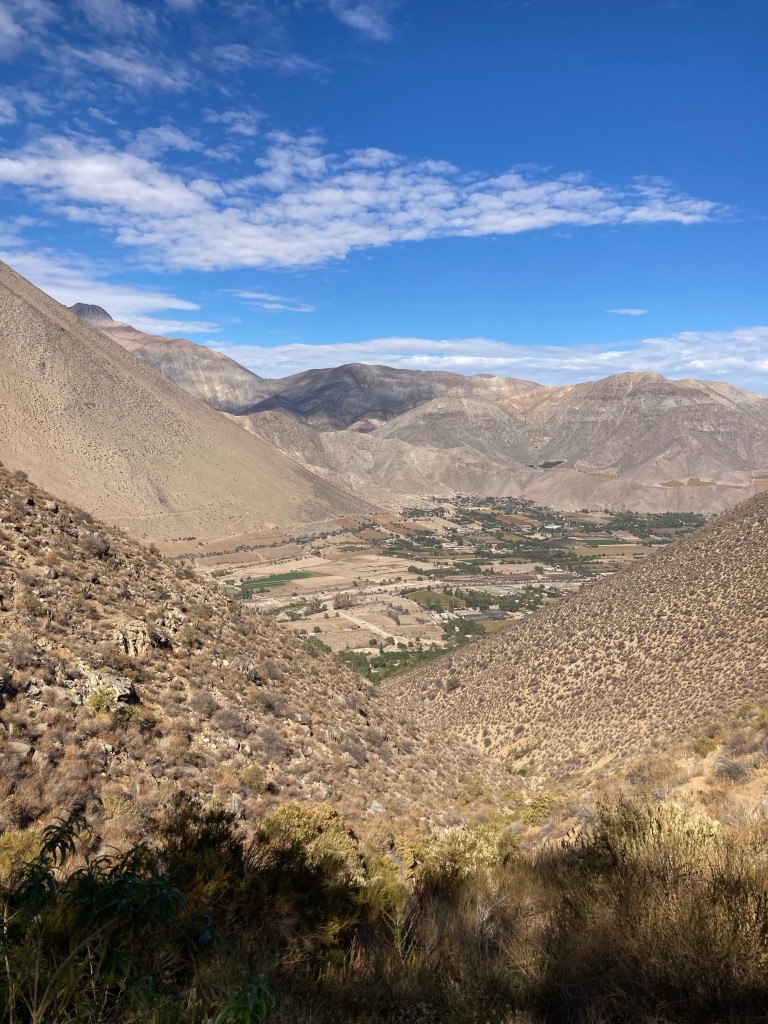
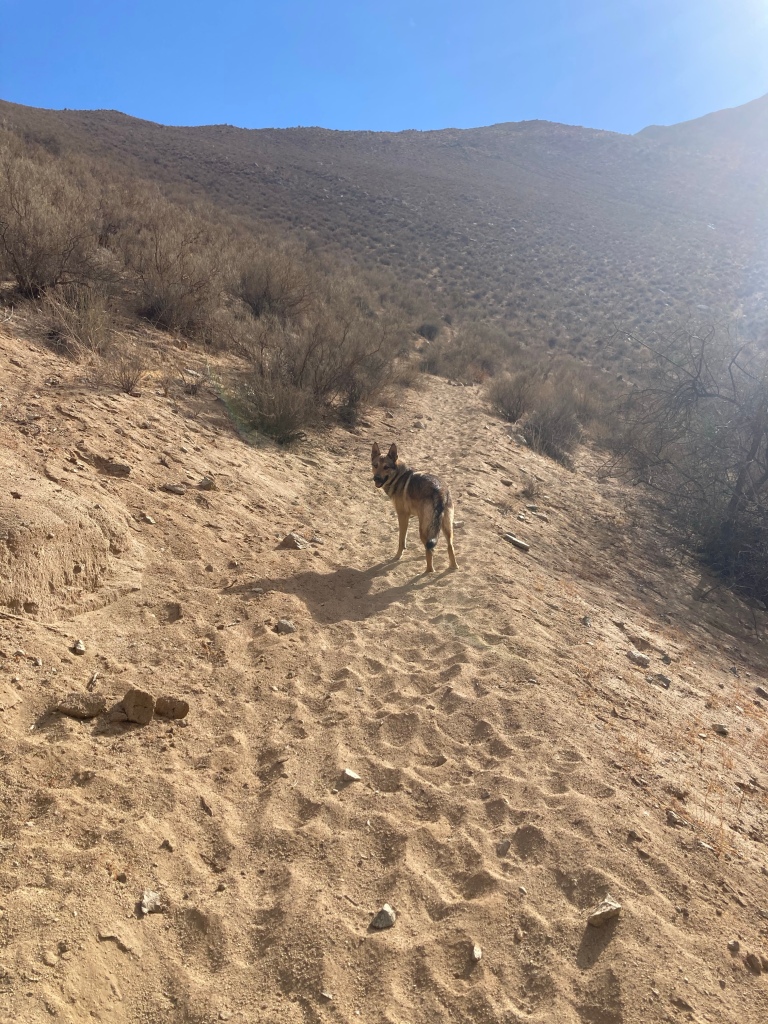
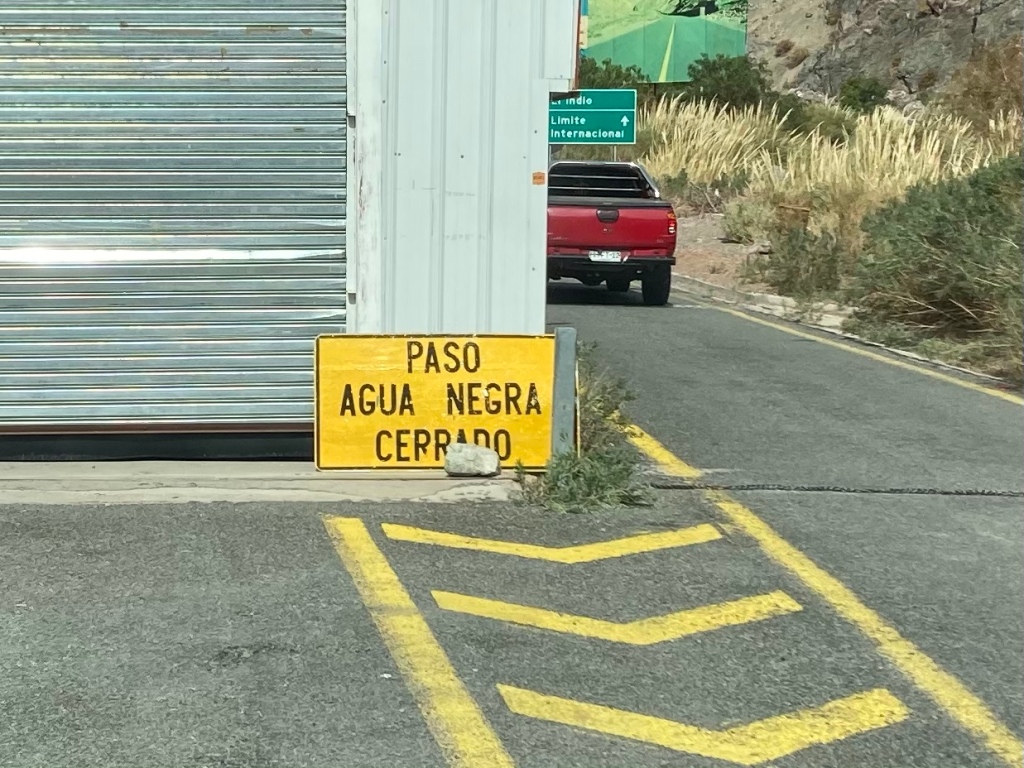
As we raced down Ruta 5 to continue our south bound journey in earnest, various factors had us changing plans daily. Selling my house in CA that I bought for grad school, I needed a document notarized. Only place was the US Embassy. We decided to ship the van on an earlier boat as loading times varied. The changing dates had us herking and jerking and re-measuring times and distances; knowing we wanted to drop the van and spend our last days unencumbered with our friends Chris and Nathalie and their awesome kids in Santiago before we left. The best laid plans.
I’m not sure I can really capture the feeling of having your gal puking her brains out three times over two weeks while you had to get documents notarized and fedexed where there is no parking in a big city in lockdown, dance around your boat being canceled, a freakish rainstorm at night during the worst traffic jam right before a holiday in a massive foreign city, nearly out of gas and trying to navigate while your gal is wrecked and can’t help. Where do you put your energy and focus? 10 miles in four hours? What do we do? Fuck me.
Continually faced with one new mini crisis after another, we got one thing done at a time and settled into a last minute air BNB many times over three days that saved us. We skirted checkpoints and played by the rules. And enjoyed the sunsets when we could.
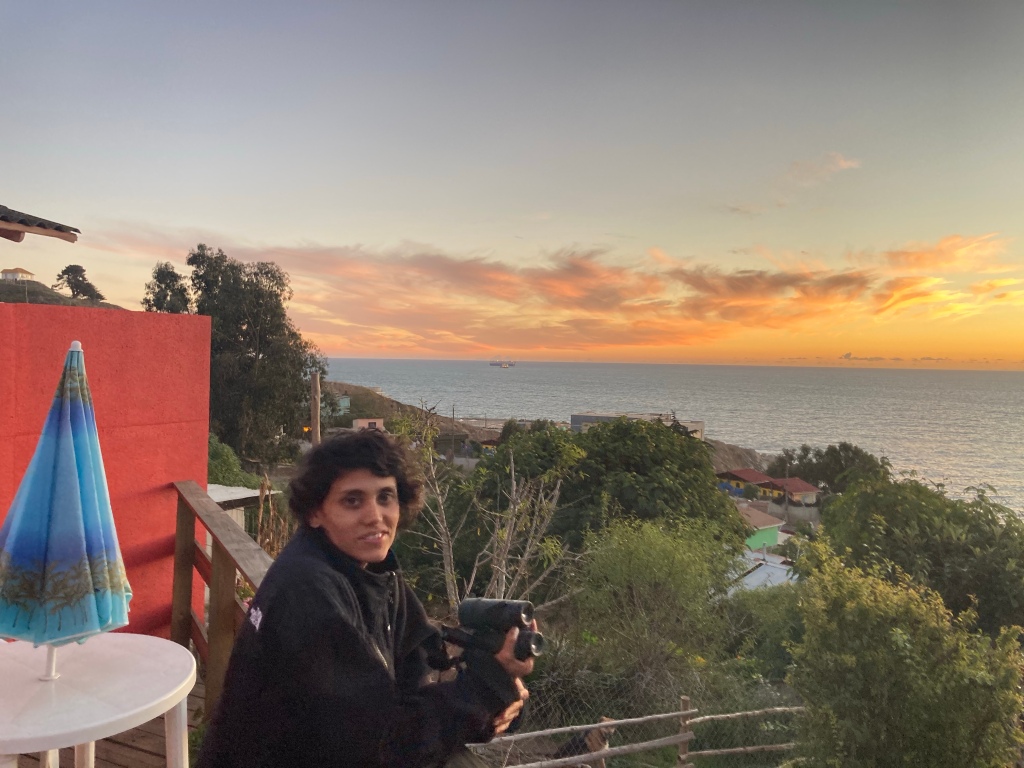
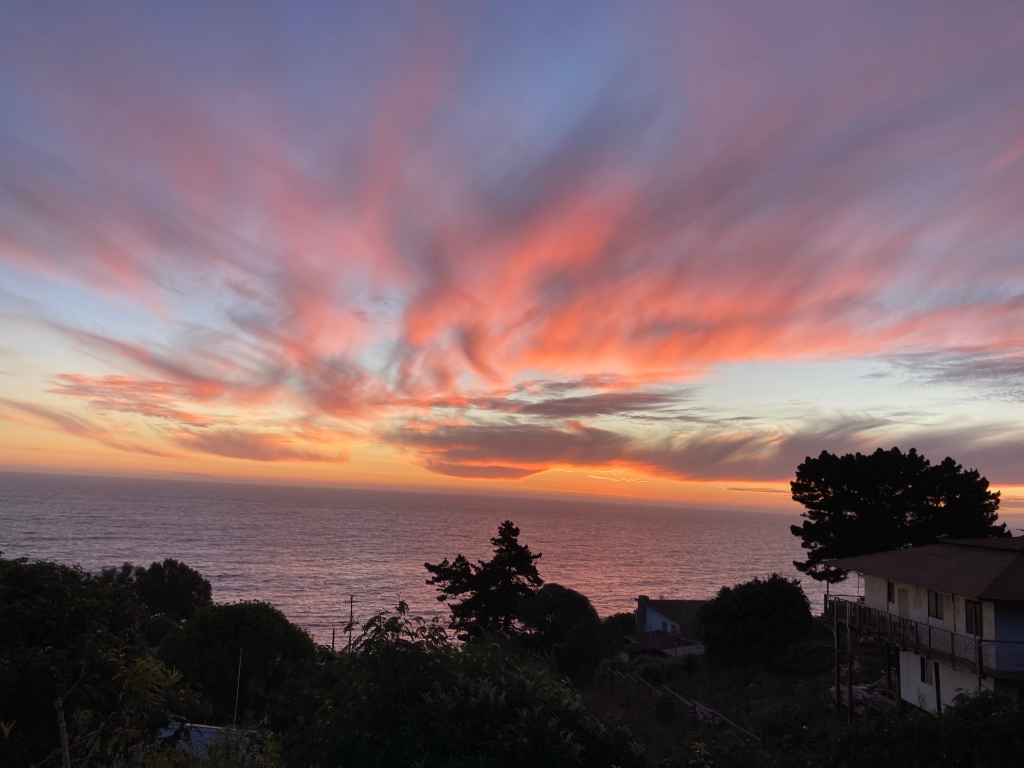

Camila rebounded again and we had to make the decision to leave the van before the boat was there. Staying with Chris and Nat, Camila was hit again with violent vomiting. We moved to a hotel, she cleared after 24 hours, I dropped the van, made it back to Santiago, and got a few nights with our good friends. Yeah, we are just gallivanting around South America. Right.
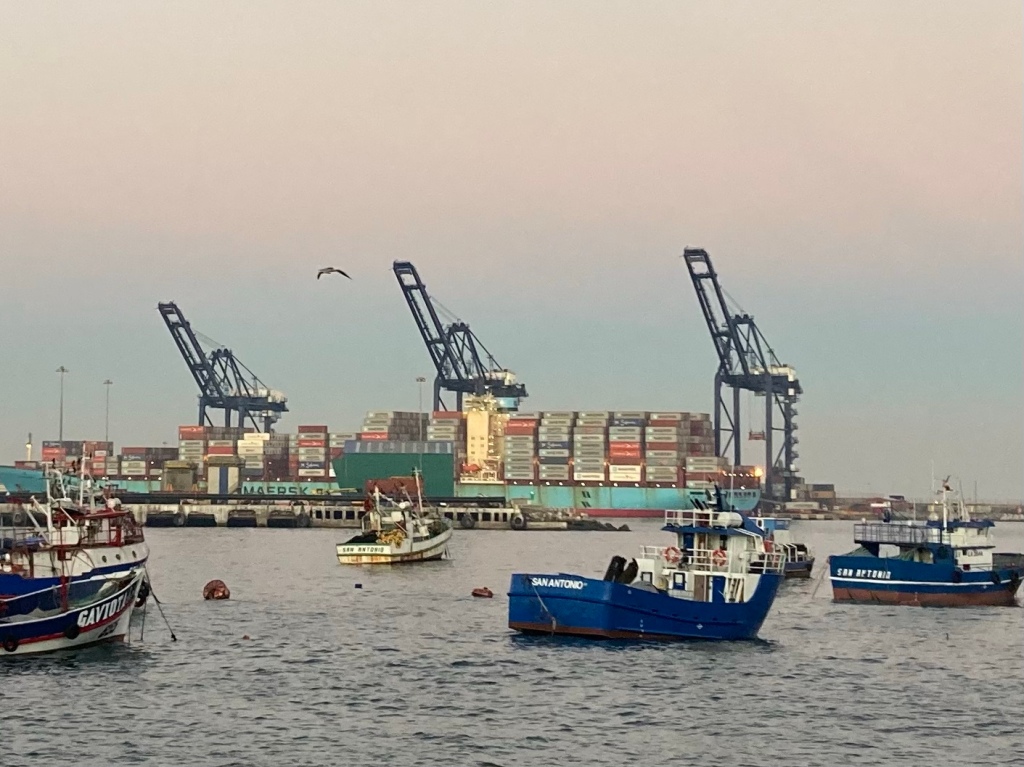
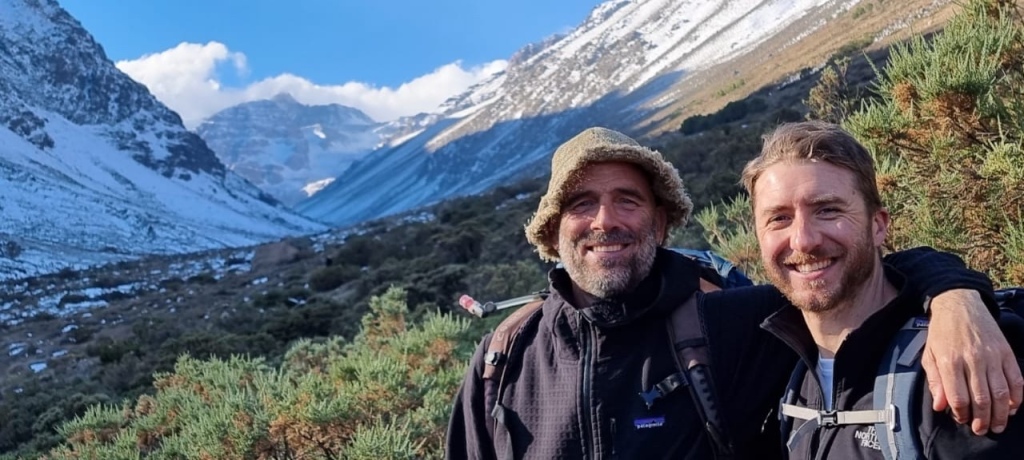
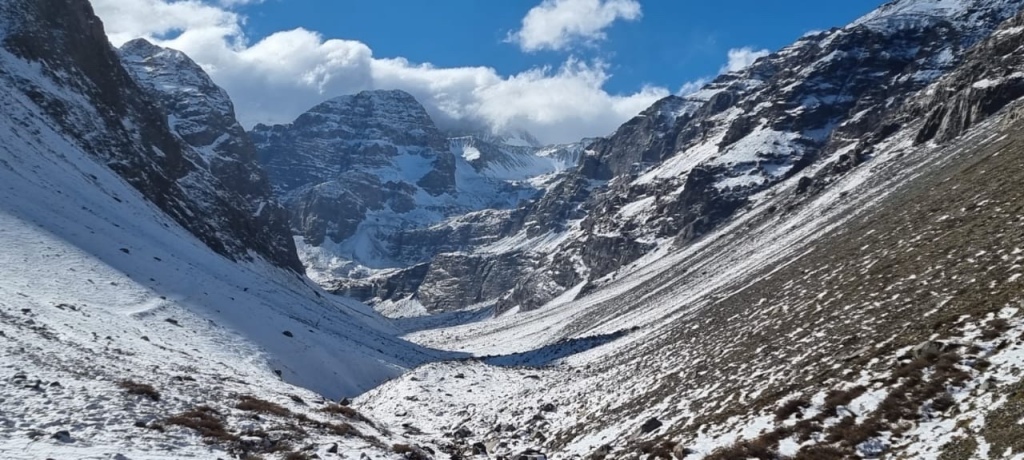
Negative PCR, some goodbyes to others we have met and we boarded the plane after the rude immigration officer chastised Camila (but not me) for overstaying our visas. Not giving a flying fuck the government forced our flights to be canceled.
The easiest part of our trip was the redeye flight to Bogota, a breeze thru immigration and an uneventful ride to Camila’s family home. Avoiding the current protests and violence that are currently rocking Colombia’s major cities.
The trip was amazing, but i constantly struggled with the uncertainty. When, where and how were always on my mind. Short of a few weeks in southern Patagonia, it seems i was always worried about big decisions and planning. Not my norm.
That, and a desire to be off the road for the first time in over three years and desperate to have a routine, with Camila, just was wrecking me at times. We have a beautiful space in Bellingham and aspirations for future projects together, but the universe is constantly saying patience. Not my best quality for those that know me. I know the whole planet has struggled over the last 18 months. Some more then others. And the truly negative part is since nearly all of us are struggling in some way or another, it’s difficult to wrest ourselves out of a terminally myopic and egocentric world view. No self pity for me. Only seemingly endless frustration. We
The future is the month of June here in Colombia, then who knows? Camila has applied and been accepted to WWUs English immersion program. And she has a visa appointment in the fall. So the beat goes on. She wants to improve her academic English and see how she likes the US. We shall see.
Slowly making progress, avoiding Covid and spending time together are the high points. I’m recommitting to Spanish, guitar and re-writing my book over the next month. And tending to my body. Here’s to a hopeful late summer in Bham with my gal.

